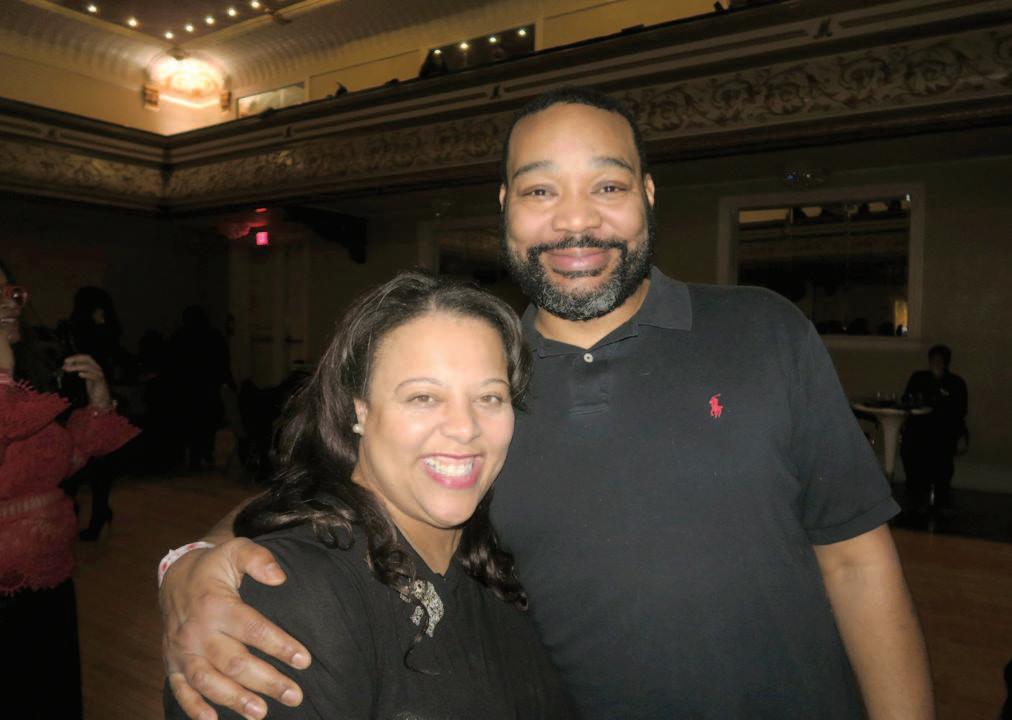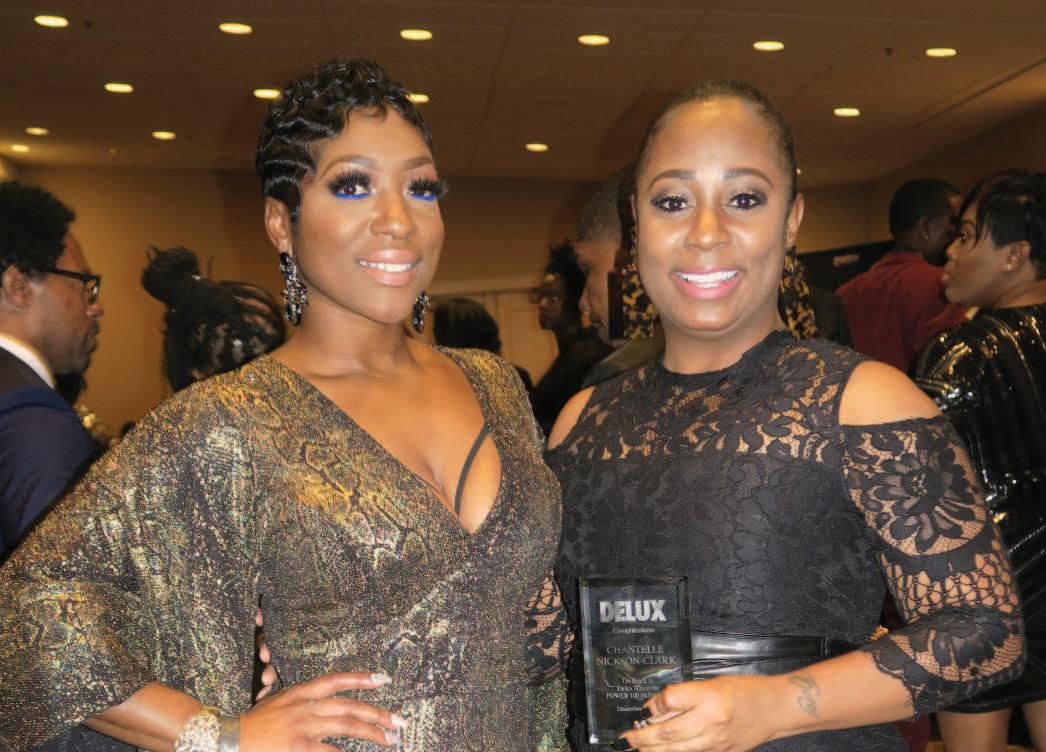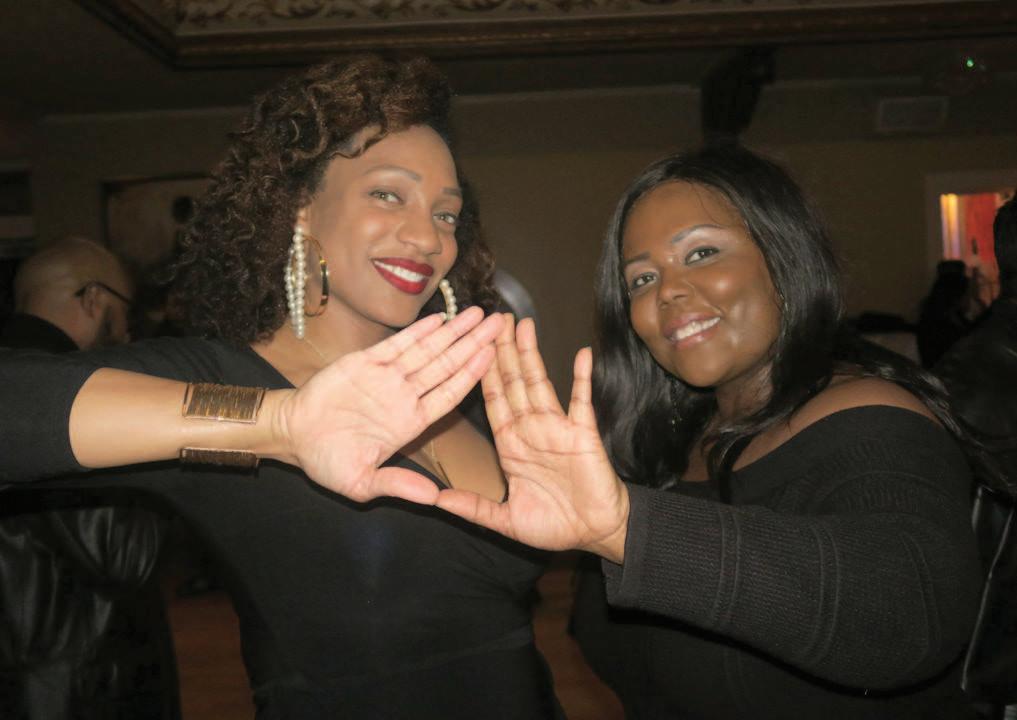






By Chris King Of The St. Louis American
– it’s not that anyone asked me to leave or for medical reasons – was I recognized the necessity of reaching the next generation,” Rev. Ronald L. Bobo told The American “And, as we age, we are not able to reach that generation that is coming on as easily. I want this church not only to survive, but to thrive, so we need someone of that younger generation.” His son, who had been the first African-


of
Land on Wednesday, January
By state Senator Jamilah Nasheed
This March, our city has the opportunity to elect a new president of the Board of Aldermen with the vision, drive, and ability to bring real change to St. Louis. As a city, we have many strengths, but we just as many challenges: poverty, unemployment, crime, over-incarceration, development deals that don’t benefit the community.
The current president, Lewis Reed, has been at City Hall
since 1999. In those 20 years, Reed has not made our city better. He is best known for his coziness with his campaign donors and often switches his position on issues – important issues like the minimum wage, the airport, and stadium deals – in coordination with checks written to bolster his campaign coffers. He is simply not reliable, and we can’t trust him to fight for what truly matters. After 20 years in City Hall, Reed has been there long

Camera Jones to speak at Washington University
of Medicine on January 21
By Chris King Of The St. Louis American
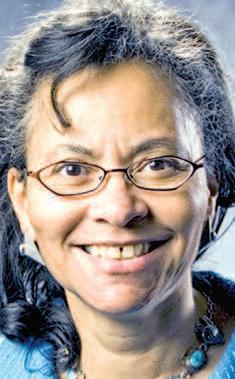
Dr. Camara Jones was teaching a one-week intensive course at the University of Global Health Equity in Kigali, Rwanda when Dr. Will Ross was finalizing plans for her to present the 2019 Dr. Martin Luther King Jr. Lecture presented by the Washington University School of Medicine Office of Diversity Programs. So she approved Ross’ proposed title for her lecture –“Racism and Health: Is Inequality Making Us Sick?” – without being in a position to give the matter her complete attention. She knows the answer to the question posed in the title: inequality – and, more particularly, racism – is definitely both making people sick and infecting our culture. As one of the world’s leading epidemiologists (she is a former research director at the Centers for Disease Control and Prevention and past president of the American Public Health Association), she can do the data. But, for some time, she has been moving from
part of an
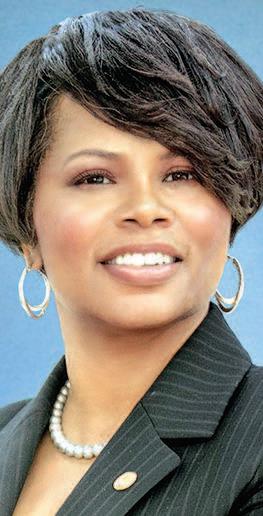
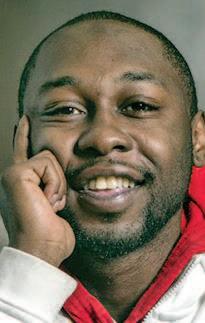
JUDGES,


Is R. Kelly getting set out of his studio?
According to Billboard Magazine R. Kelly is facing eviction from his Chicago recording studio over unpaid rent.
“R. Kelly risks being evicted from his Chicago recording studio unless he pays some $174,000 in back rent and other costs by Jan. 21,” billboard.com said.
“Court documents in a July lawsuit seeking payment from the singer were obtained by the Chicago Tribune story Monday. They include a signed eviction notice put on hold to give Kelly until next week to pay.”
Steve Harvey was blindsided by NBC chop
During an interview at the Variety Entertainment Summit, Steve Harvey admitted that he had no idea NBC intended on dropping him when he was asked if he was staying with NBC.
“I thought I was, until they made
an announcement a couple weeks ago that they wanted to give Kelly Clarkson the ownedand-operated NBC networks. That’s my slot,” Harvey said. “I don’t know if it sold, it’s not selling like they thought, but I thought it would have been nice of them to come to me – as the only dude who’s survived [in daytime TV] for seven years – about it. So, when you do that, I gotta make announcements too ... I’m working. It will be something real cute.”
Rihanna suing father over alleged shady business
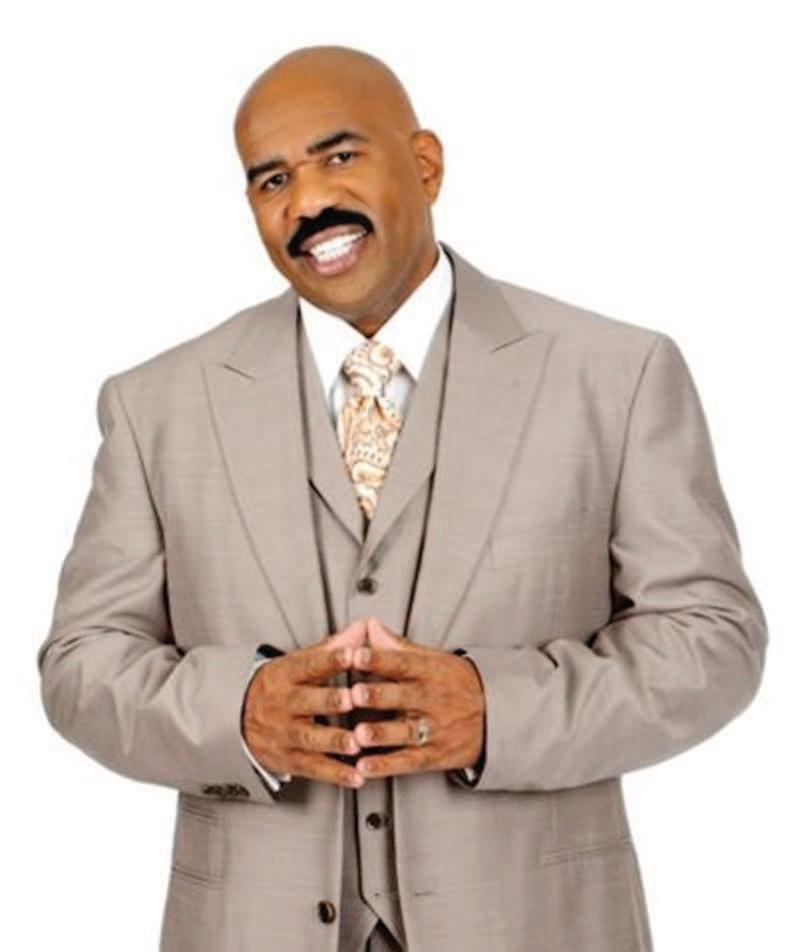
According to The Blast, Rihanna is suing her father for allegedly exploiting her name without her permission. The 30-year-old singer and actress – whose real name Robyn Fenty – has filed a lawsuit against Ronald Fenty and a company called Fenty Entertainment for allegedly using the surname, which she uses on her range of Fenty Beauty products, to solicit business acting as agents of the singer. In court documents obtained by The Blast, Rihanna accuses her
father and another man named Moses Perkins of creating an entertainment company to act as her agents, although she says she has nothing to do with the company.
“Although Mr. Fenty is Rihanna’s father, he does not have, and never has had, authority to act on Rihanna’s behalf,” the documents read, according to The Blast.
She claims her father booked a $15 million tour in Latin America and two concerts at the Los Angeles Staples Center and the T-Mobile Arena in Las Vegas for $400,000.
In both cases, Rihanna insists she has nothing to do with the bookings.

Variety claims that Scott has had “at least one phone conversation” and that “though they did not necessarily agree, they ended the chat with “mutual respect and understanding.”
The report also said that the performance was contingent upon a $500K donation to Kaepernick’s non-profit social-justice organization Dream Corps.
She also says that Ronald claimed he ran the business offers through Rihanna’s actual label, Roc Nation, but the singer argues no-one from the label was ever made aware of anything her father was doing.
Rihanna claims to have sent several cease and desist letters to her father, but after he failed to stop, she has now filed a lawsuit seeking an injunction against Ronald and his business partner, as well as unspecified damages.
Did Kaepernick deny giving Travis Scott a pass to perform at Superbowl?
Based on his social media activity, Colin Kaepernick is refuting Variety’s report that he gave rapper Travis Scott his blessing to perform alongside Maroon 5 at the Superbowl.

“I know being an artist that it’s in my power to inspire. So before confirming the Super Bowl Halftime performance, I made sure to partner with the NFL on this important donation,” Scott said, according to Variety. “I am proud to support Dream Corps and the work they do that will hopefully inspire and promote change.”
However, Kaepernick seemed to imply that he was not a part of any such conversation.
When Hot 97 Morning show personality Ebro tweeted, “Kap did not approve this [expletive]. Get the [expletive] outta here,” Kaepernick retweeted Ebro and another message that implied that he had no parts in an “agreement” with Scott.
He’s currently suing the NFL, alleging that they conspired to keep him out of the league for kneeling during the National Anthem as a form of protest to police brutality and police killings in the black community.
Sources: Celebretainment, The Blast, TMZ. com, Variety.com, Twitter.com

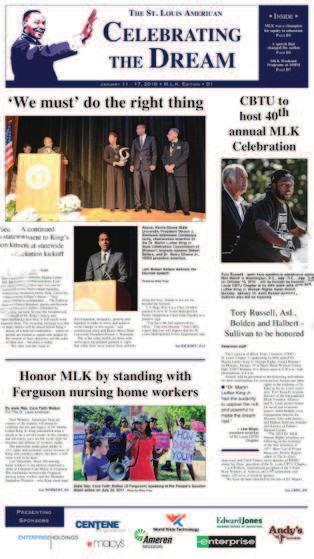

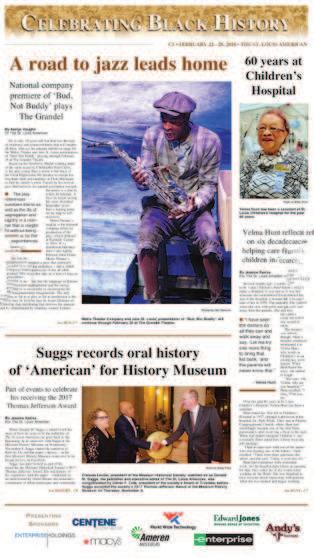


By District Attorney
Lawrence S. Krasner and others For The St. Louis American
The undersigned current and former elected prosecutors, law enforcement leaders, and Department of Justice officials write to support the efforts by the St. Louis Circuit Attorney’s Office (as well as other elected prosecutors around the nation) to create a process for identifying law enforcement officials whose credibility is at issue and who, as a result, should not be relied upon as witnesses or affiants in criminal cases.
The creation of this type of process – also known as a Brady list (or in some instances an “exclusion” or “do not call” list) – is a well-settled best practice and is common among prosecutors’ offices nationwide, including at the local, state and federal level. Efforts to put this process in place in St. Louis and elsewhere is a commendable step to prevent law enforcement officials who could compromise cases from playing a significant role in the investigation or prosecution of criminal charges unless and until their matter is resolved in a way that will not jeopardize future cases.
While state laws and local policies vary widely, and in some jurisdictions prosecutors’ lack of access to police personnel files effectively prevents them from maintaining such a list, we believe that
the creation of a Brady list –such as the one maintained confidentially by the St. Louis Circuit Attorney’s office – is a necessary and recognized way to meet the prosecutor’s important role and ethical obligations as a minister of justice. When police officers refer cases to a prosecutor’s office, their testimony or role in the investigation – including in interviews, chain of evidence collection, or as an eyewitness – may be a significant factor in the prosecutor’s exercise of the weighty discretion to file charges and prosecute the case. Brady lists allow prosecutors to implement an orderly process for gathering in one place information on officers who may not be able to serve as credible witnesses. Serious allegations of having made false statements, using excessive force, or engaging in other questionable behavior could undermine the credibility of those in law enforcement who are central to the pursuit of criminal charges that trigger loss of liberty and other significant consequences. It is the obligation of prosecutors to use their discretion and judgment to ensure that charges filed and other actions taken further the interests of justice. Prosecutors are public servants charged with protecting the interests of all members of the community – including the rights of defendants charged with crimes. By preserving the integrity of the justice

by
system, community trust is strengthened, and our entire community is safer.
We are aware that there have been objections to the Brady list process initiated by the St. Louis circuit attorney raised by the St. Louis Police
But we understand that the Circuit Attorney’s Office is committed to ensuring that there is a process in place to notify officers who are on the Brady list and to implement mechanisms for officers to be removed from the list. These
n Brady lists allow prosecutors to implement an orderly process for gathering in one place information on officers who may not be able to serve as credible witnesses.
Officers Association, including claims that the process will compromise officer privacy and due process interests (similar claims have been raised in other jurisdictions).
steps are part of recognized best practices that balance the interests of safeguarding the delivery of justice with the importance of protecting law enforcement officials’ privacy
and ability to carry out their job of protecting the community.
Based on our collective experience as current and former prosecutors, law enforcement officials, and leaders within the criminal justice system, we urge both local officials and directly impacted law enforcement leaders to constructively work toward the creation of an appropriate and effective system that, in the words of St. Louis Circuit Attorney Kim Gardner, helps “defend the integrity of the criminal justice system.” That is the essence of how criminal justice leaders fortify community trust in our system and thereby ensure the safety of all members of our community.
Signed by more than 55 current or former state or federal prosecutors or
including Shay Bilchik, former associate deputy attorney general and administrator, Office of Juvenile Justice and Delinquency Prevention, U.S. Department of Justice; Mark Dupree, district attorney, Wyandotte County, Kansas; Lawrence S. Krasner, district attorney, Philadelphia, Pennsylvania; Sylvia Moir, police chief, Tempe, Arizona; Tina Nadeau, chief justice, New Hampshire Superior Court; Kim Ogg, district attorney, Harris County, Texas; Tori Verber Salazar, district attorney, San Joaquin County, California; Carter Stewart, former U.S. attorney, Southern District of Ohio; and Seth Waxman, former solicitor general of the United States, U.S. Department of Justice.

When Judge Robin Ransom was appointed to the Missouri Court of Appeals a week after she took charge as presiding judge in the 22nd Circuit, it was a mixed blessing for those of us who advocate for racial equity, particularly in the life-or-death field of criminal justice. The City of St. Louis, which is covered by the 22nd Judicial Circuit, lost its first black female presiding judge no sooner than she took power, but the state Court of Appeals gained some muchneeded racial diversity. Of the 14 judges hearing appellate cases in the Eastern District, Ransom becomes only the second African American on that bench.
Ransom also misses out on the opportunity to strike a dramatic and much-needed note of reform in the 22nd Circuit and St. Louis, though that opportunity remains for the new presiding judge. One matter that needs immediate reform is the circuit’s troubling and arguably unconstitutional practice of allowing a private pretrial services and electronic monitoring company – Eastern Missouri Sentencing Services (EMASS) – to demand money from poor defendants with the threat of arrest if they cannot afford payment.
A group of local legal advocates – ArchCity Defenders, the St. Louis Public Defender’s Office, The Bail Project, American Civil Liberties Union of Missouri, Mound City Bar Association, and the Roderick & Solange MacArthur Justice Center – was preparing a letter to Ransom calling for reforms to this practice when she was appointed to the appellate bench. We urge the new presiding judge, who will be selected on January 24, to act on these suggested reforms – which we will outline, before urging an even more dramatic reform.
The advocates urge the circuit to waive fees where someone is found to be unable to pay the fees charged by EMASS but a court continues to require electronic supervision as a condition of bond. They urge the circuit to stop the practice of incarcerating people for failure to pay EMASS fees. They urge the circuit to require that EMASS specifically inform the court where the inability to pay is the reason for alleged noncompliance with conditions. And they urge the circuit to evaluate its current contract with EMASS and EMASS’s current practices and services in light of the legal and constitutional implications of such practices.
“The people most harmed by these unjust, revenue-generating pretrial supervision services are poor and disenfranchised residents of St. Louis,” said Blake Strode, executive director of ArchCity Defenders. “These practices not only jeopardize someone’s individual liberty, they reveal an expanding landscape of mass incarceration through the proliferation of a money-based electronic monitoring industry. The status quo of mass pretrial detention is already a moral outrage, but to condition freedom upon payment to a private company is just grotesque.”
We agree – and we agree that these suggested reforms would reduce one way that the current practice of criminal justice in St. Louis is grotesque and unconstitutional. But a truly bold and fearless judicial reformer would go one step
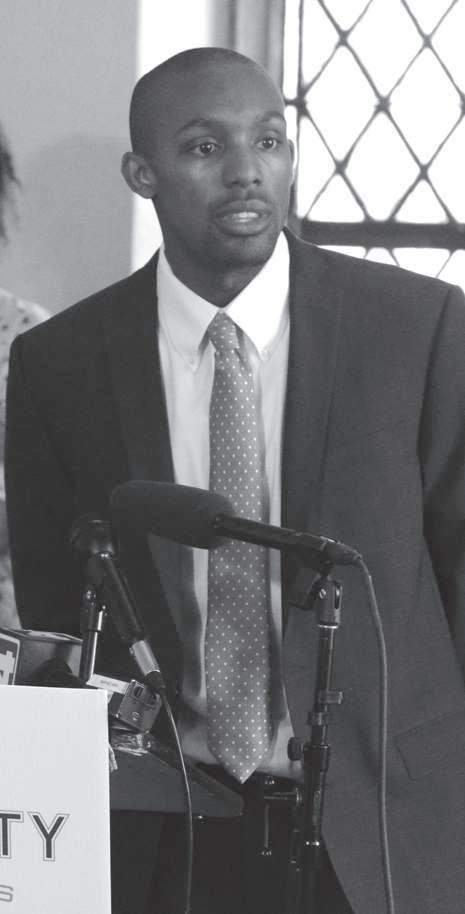
Blake Strode, executive
By Mike Jones Of The St. Louis American
Wesley Bell’s first three weeks as St. Louis County prosecuting attorney have been exceptional. He has taken command of the office and without apology and led with important initiatives that were pillars of his campaign and foundational to criminal justice reform. He has marked his territory, removing McCulloch’s scent, and sent a clear message to recalcitrant holdovers that discussion on policy is welcomed and encouraged, but insubordination will be punished.
One of the earliest memories I have of a serious conversation about life and reality was talking my father about Santa Claus as a very young boy. It was about then that I began having serious doubts about his existence. When I asked my father, he told me directly and without any reservation that Santa Claus wasn’t real. He told me that adults often make up stories for children that aren’t true to explain reality because they mistakenly think children wouldn’t understand the truth. He said if I was old enough to question the possibility, I was old enough to hear the truth, and he would never tell me something he knew not to be true.
As I read last week’s St Louis American editorial on the pushback Wesley Bell is receiving from what I would call the usual suspects, and a lot of the angst on social media, I thought the anger and surprise was misplaced energy. It’s time for us to have a conversation about Santa Claus.
don’t solve any problems, they merely define who will have the higher ground in the fight that’s about to start.
The structural injustice of the criminal justice system in St. Louis and America is not an accident or the overlooked, unintended consequences of well-meaning people who would have done better if they had known better. The current social condition of low-income working people and many people of color is the direct result of people of privilege having no regard for the consequences that privilege has for people who aren’t like them.
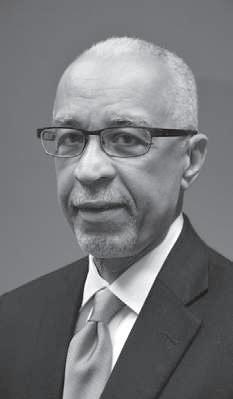
There are people who would argue that St. Louis has turned some racial corner because Bell got 57 percent of the vote in the Democratic primary, but no one ever mentions the 43 percent that voted to maintain the McCulloch status quo. They have not disappeared or had a conversion on the road to some St. Louis County version of Damascus. The resistance and pushback by organized forces that we have seen to Bell’s first three weeks is the reaction of that 43 percent to his election. Get used to it, because it’s not going away. It’s a local variant of our national problems.
The real crisis in America is not that Donald Trump is the president, but that 63 million Americans voted for him.
By Bruce Franks Jr.
St. Louis American
For The
There continue to be many fallacies circulated by Lauren Trager and KMOV regarding my employment with the Labor Employment Training Center (LETC), as a 24-hour mentor. LETC is a non-profit that uses zero dollars of taxpayer money, but is grant-funded, even though KMOV tried to mislead the public otherwise. Moreover, I was not hired by St. Louis Agency on Training and Employment (SLATE) for this role, but by LETC; my W-2s were provided by LETC not SLATE or the City of St. Louis. Many legislators work alternate jobs due to the pay not being adequate to raise a family. My hire date was July 3, 2017 and I stopped working the beginning of February 2018. Five out of seven months that I worked for LETC, the Legislature was out of session. During my LETC on-boarding, it was reinforced that its mentoring programming does not only occur during conventional hours, that mentoring does not only occur face to face, that mentors must meet young people where they are and be readily accessible. All of this guidance reinforced that our youth needed support out-
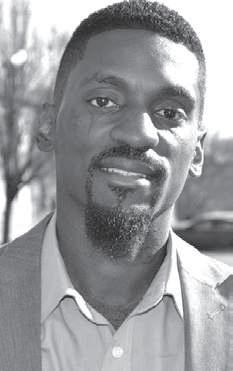
further.
The new presiding judge should set a policy that the circuit court order the City of St. Louis to pay EMASS fees for defendants offered pretrial release with electronic supervision, and then expand that offer to let all defendants accused of non-violent crimes to await their trial dates any place other than inside the city’s criminally negligent and unconstitutional jails. The city, to pay its new EMASS bill, should close the notorious Medium Security Institution, the Workhouse, which would at any rate not be needed if the circuit stopped ordering poor defendants to be detained in a jail before their day in court.
The new presiding judge has a real opportunity to both end the currently grotesque and unconstitutional system of electronic supervision – and close the Workhouse.
side of conventional hours, and it was our responsibility to be available. My youth were able to contact me at any time of the day, which gave me the opportunity to deter them from making bad decisions and coach them through dangerous situations. Furthermore, I was able to help them with a multitude of others things, such as advocate on their behalf in court, help them find employment, and provide tutoring, financial literacy and empowerment resources. Due to these various responsibilities, I often worked no more than 32 hours a week, as time sheets were due every two weeks, and due to the fact my hours were unconventional. Although some of the times reported may have been off, the actual work and amount of hours are all accurate, as well as the day those hours were worked. Questioning the work that is done 24 hours a day to preserve life and protect our young people from the roughest communities is
disrespectful and insensitive.
Even though I formally left my role at LETC, I still volunteer as a youth mentor and continue to help youth and various organizations in a host of capacities, which LETC and SLATE can attest to.
Trager and KMOV have continued in a longstanding tradition of the local media trying to discredit and intimidate black leaders in St. Louis. Instead of media outlets using their platforms to raise awareness about the everyday realities of our community and the great work being done, they would rather be divisive and play into stereotypical tropes. I have no time to consume myself with slander pieces and attacks, as I have a community to be working with and for. However, I believe that my constituents deserve transparency and the truth. I will remain steadfast, in my efforts working toward a more equitable St. Louis and Missouri. Next time Trager or KMOV would like a story, I hope they contact me to highlight the positive work being done in our community and uplift our city, instead of continue to misinform and dis-
What’s really important to understand is elections
Governor must act now
This federal government shutdown is harming our communities, and it has to end. All across the state, we have hardworking people who are trying to put food on their tables and provide for their families, but they are told they can’t do that. They’ve been furloughed or forced to work without pay. That is unacceptable in this country. My constituents expect a functioning government, not one that struggles to pay its bills. We must end the shutdown, and I believe the governor has a responsibility to this state to help make that happen.
It is my responsibility to speak up for my constituents in times of need, and this is certainly one of them. Now, I am calling on the governor to use his influence to help end the shutdown and ensure Missourians are able to work and receive the pay they
deserve. We must act now to end the shutdown and get Missourians back to work.
State Sen. Jamilah Nasheed St. Louis
Nothing from pastor?
Where are the black church, black pastors and religious leadership? While white evangelicals galvanized the flock behind Trump, Kavanaugh et al., IRS be damned, the black church remained primarily silent. This ain’t the church of the Civil Rights Movement, that’s for sure.
Kavanaugh is a proven liar and sloppy drunk who lacks the judicial temperament, integrity, independence and veracity for a life appointment to the Supreme Court. Yet, the black church as a body was silent. Kavanaugh’s conduct in the confirmation hearing was appalling and disqualifying. During his angry, belligerent,
The African-American community and its progressive allies need to understand what Wesley Bell already knows. Bell’s election did not transform St. Louis County into that shining city (or county) on the hill. There is no brand new day, and the Good Lord did not deliver us from things that go bump in the night. The fight for criminal justice reform in St. Louis has really just started, and it won’t be over until the forces of reform accept the unconditional surrender of the forces of injustice.
Mike Jones is a former senior staffer in St. Louis city and county government and current member of the Missouri State Board of Education and The St. Louis American editorial board. In 2016 and 2017, he was awarded Best Serious Columnist for all of the state’s large weeklies by the Missouri Press Association, and in 2018 he was awarded Best Serious Columnist in the nation by the National Newspapers Association.
When Wesley Bell was sworn in on January 1, that wasn’t the unwrapping of a Christmas present delivered by a political Santa Claus who is the magical solution to our criminal justice crisis. It merely opened the opportunity to continue the fight for criminal justice reform, but – for the first time – with real strategic and tactical advantages. But those advantages will be wasted if we don’t understand certain political realities. What are these political realities? You have enemies, and those enemies are dangerous, pitiless and relentless. Secondly, in politics you have only what you can take, and you can keep only what you can hold. Lastly, the fight’s not over until you win.
entitled, me-victim, tirade, Bart lied under oath, spouted conspiracy theories and vowed revenge. But for his privilege, including his Yale legacy admission, he is unfit to serve. The Supreme Court will make decisions that impact our children’s children for generations, such as civil rights, voting rights, human rights, the environment, health care access, guns, net neutrality, gerrymandering, presidential powers, campaign financing, equal protection, privacy, labor & unions, pensions, education access, disability rights and the death penalty … Yet, nothing from pastor?
What does it take for pastor to act on issues that impact congregants’ lives? Out of the pulpit and into the streets! When the Black Church is silent, it contributes to inequality and injustice. The Church must do better!
Linda Bates St. Louis




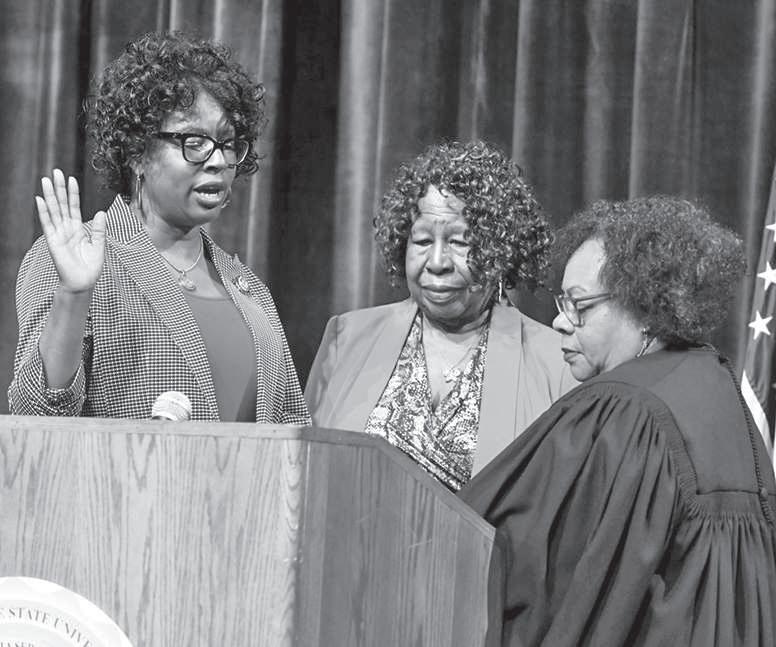
The 15th annual Mister HBCU Kings’ Leadership Conference and Competition will be held January 30-February 2 on the campus of Harris-Stowe State University. Highlighting the conference will be the crowning of a King of all HBCUs after a competition on Saturday, February 2 at 7 p.m. “This is a brotherly competition,” said Krishun Lovelace, Mister LeMoyneOwen College 2017-2018, who was crowned Mister HBCU 2018-2019. “We spend time together bonding and supporting each other as men.”
The deadline for receipt of nominations for Women of Achievement’s 2019 Class of Honorees is midnight Monday, January 21. The award honors and recognizes the volunteer service and volunteer leadership of women. Online submissions and printable nomination forms with full details are available at http://woastl.org/nominate. Online submissions are preferred, though nominations may be mailed or hand delivered to Women of Achievement, 3418 Charlack Avenue, Suite 615, St. Louis, Missouri, 63114. If you have questions about the nomination process, call 314-896-4962 or email woastlouis@gmail.com.

By Christi Griffin For The St. Louis American
In the 2018 Democratic primary, the prospect of unseating a prosecuting attorney that had used his office as a tool to over-charge, over-incarcerate, and over-control black lives helped produce an impressive voter turnout (for a midterm primary) of 42 percent. Despite Bob McCulloch claiming he “retired” as prosecutor, he was removed by an overwhelming mandate of the voters – he lost by 14 percent – and replaced with Wesley Bell, the first African American elected to that office. That Election Day also delivered the first African American to be elected recorder of deeds in the City of St. Louis. Michael Butler also became the youngest person to hold any citywide office.

Despite these accomplishments, their significance was immediately marred by the far more extensive coverage given a whistleblower investigation into the St. Louis Agency for Training and Employment (SLATE). Although the investigation was primarily about the mismanagement and abuse of tax dollars, it was the photo of yet another young black legislator that accompanied the story and graced the screen multiple times during the broadcast. The timing of the story diminished the accomplishments of two of our most recently elected African-American men, detracted from the power of the black vote, and perpetuated a history of criminalizing African Americans. The decision to air the story in the same broadcast as that of our electoral victories laid bare the racial animus that continues to hang over our city. The SLATE story, regardless of any degree of accuracy, robbed every citizen of a significant moment in our city’s history.
This is par for the course in a city that has attempted to change the rules each time an African American is elected to a position of power. Subsequent stories attacked the decision of Butler to fire certain employees and Bell’s internal memo about ceasing criminal prosecution for non-payment of child support. There was no such alarming coverage of either the mayor’s or the county executive’s decisions to clean house when they took office. Both are white. The racial overtones in this coverage are palpable. By virtue of race alone, black politicians enter office with a target on their back. Like anything else about being black in America, expectations and standards for them are always higher and different. When it comes to wielding political power, it is imperative that they keep their noses clean. There will always be those, usually with their own dirty hands, ready to point a finger.
Christi Griffin is founder of The Ethics Project, a nonprofit organization addressing the impact of crime, injustice and incarcerations, and the author of “Incarcerations in Black and White: The Subjugation of Black America.”
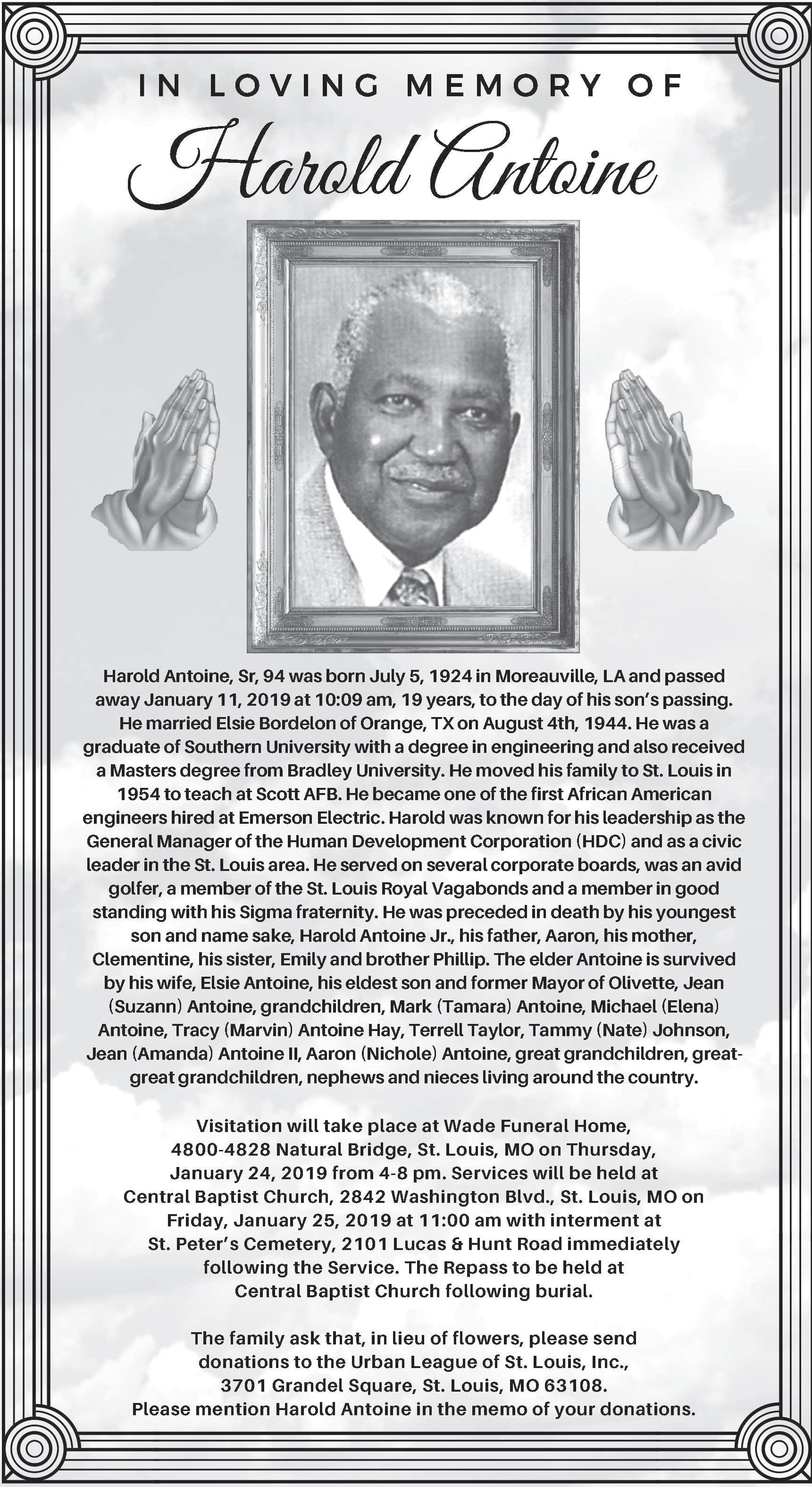
director of ArchCity Defenders, and one of the co-signers on the letter.
“The status quo of mass pretrial detention is already a moral outrage, but to condition freedom upon payment to a private company is just grotesque.”
Also signing the letter were leaders of the St. Louis Public Defender’s Office, The Bail Project, American Civil Liberties Union of Missouri, and the Roderick & Solange MacArthur Justice Center.
A spokesman for the circuit court said, “The court will take the letter under consideration. We have no further comment at this time.”
n “The status quo of mass pretrial detention is already a moral outrage, but to condition freedom upon payment to a private company is just grotesque.”
– Blake Strode, ArchCity Defenders
The 22nd Judicial Circuit contracts with EMASS to provide pretrial supervision of criminal defendants, the letter explains. And instead of paying for the company’s services, the circuit court transfers the cost of supervision onto individuals.
For example, if a judge says that an individual is eligible to go home with a GPS ankle monitor, it costs a $50 installation fee and $10 per day. Pretrial “supervision” check-ins are $30 per month. Alcohol monitoring costs a $75 installation fee and $15 per day (requiring an initial payment of $525 from individuals immediately upon release from jail). Before an individual is ordered to EMASS supervision, the court does not ensure that the person can afford these fees, the letter states.
McClendon, a father
Issac
Continued from A1
enough. What we have right now – the St. Louis of 2019 – is the result of two decades of Lewis Reed. We can’t keep doing the same thing and expect to get different results.
So we need a big change. And there are two candidates advocating for change in this election: Alderwoman Megan Green and me.
I believe Green has good intentions, and she certainly knows how to be bold. I share
of three, was recently released from the Medium Security Institute (also known as the Workhouse) with injuries so severe that he had to go to the emergency room eight times within the first month of being released. When the court ordered him to be monitored with a GPS ankle bracelet, he said no one told him that he had 24 hours to find $300 to pay the private company. GPS monitoring costs $300 per month, and the entire first month must be paid up front. “I didn’t have $300,” McClendon said. “It’s stressing me all day and night. Luckily, I came up with the money, thanks to the Bail Project. My family didn’t have it. And they won’t take any ifs, ands or buts about it.” If the Bail Project hadn’t stepped in to help McClendon with the initial cost, he would have had a warrant issued for his arrest.
If people can’t afford EMASS’ services, the company will tell the court that individuals “have not complied with a condition of release,” even if they report to the EMASS office and fulfill all other requirements not related to money, the letter states. And EMASS’ notice to the court does not specify whether or not the failure to comply is based on ability to pay. Based only on these notices from EMASS, courts in this circuit issue warrants for the re-arrest of pretrial criminal defendants without a hearing on the issue, the letter states.
Organization leaders pointed to the case of a single father who was forced to borrow the $300 for the activation fee from his mother, who later almost went homeless. After
many of her principles, and believe her views are heartfelt and sincere.
Yes, our city needs boldness – without it, we can’t face the big challenges that lay before us. But we also need a leader who is effective – a leader who can build consensus, collaborate with other members of the Board of Aldermen, and strategically build a progressive majority able to accomplish real, tangible results.
Green has many strengths, but she’s simply not that kind of leader. She knows how to get attention, but has little to show for it. And her record, which

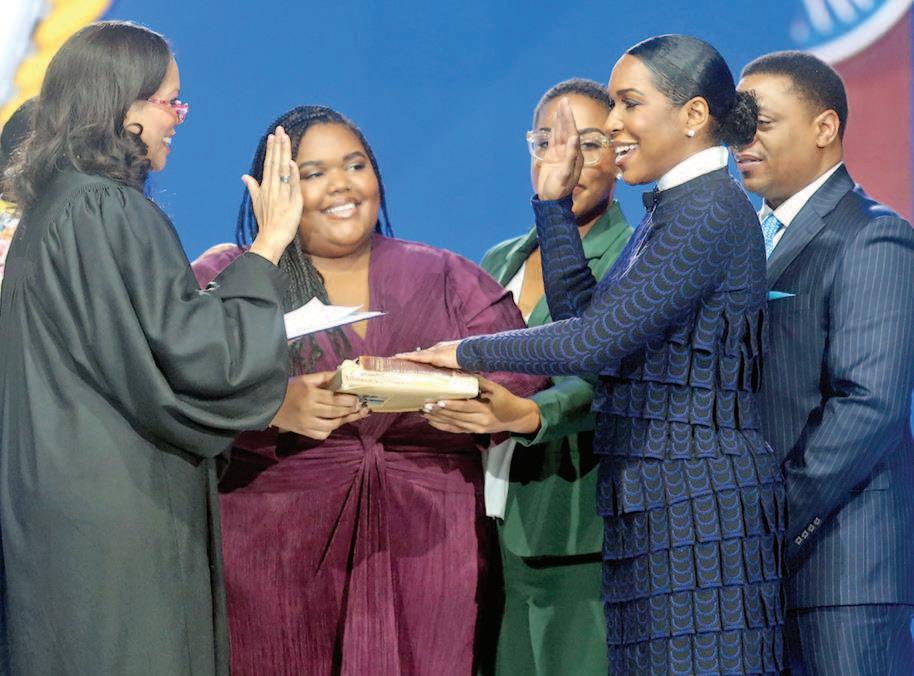
he lost his temporary job, he could no longer afford the $30 per month supervision fee. He chose to provide what limited funds he had to provide for his child over the EMASS fee, and he went back to jail to await his trial.
The court’s judges have failed to address the needs of poor defendants, the letter states, even though they have the option to do that. The Circuit Court’s contract
is still growing, is not one of getting things done. In her years at City Hall, she has not passed one significant piece of legislation.
And, although I usually agree with her, some of her legislative stances are downright puzzling. Despite her sincere questions about development deals, she has a record of overwhelming support for tax incentives and development handouts. In fact, 60 percent of the legislation she has sponsored was pro-developer. She even voted against an ordinance that would regulate air pollution.
I am running for president because I know we need to change things in St. Louis, and I have a record that demonstrates I know how to get things done for our city. I don’t just propose a good idea, I do the hard work of passing legislation. Representing our city in state government, I sponsored legislation, which
with EMASS states that the judges may assign a limited number of cases of indigent defendants to EMASS, “which EMASS shall handle at no charge.”
“We are not aware of any courts in this circuit referring someone to EMASS at no cost due to their indigency,” the letter states.
Organization leaders issued several recommendations, including waiving or publicly
became law, that empowered neighborhood organizations to combat problem properties.
I sponsored legislation, which became law, to improve opportunities for women-owned and minorityowned businesses to bid for jobs. I sponsored legislation, which became law, to improve law enforcement training. I sponsored legislation, which became law, to expand the educational offerings at Harris-Stowe State University. I worked with the teacher’s union to sponsor legislation, which became law, that ensured all students have the right to high-quality teachers. I sponsored legislation, which became law, that raised awareness of sex trafficking.
I also led the effort to “Ban the Box” in public employment, which resulted in both the city and state governments increasing job opportunities for people with a criminal record. And I secured federal funding
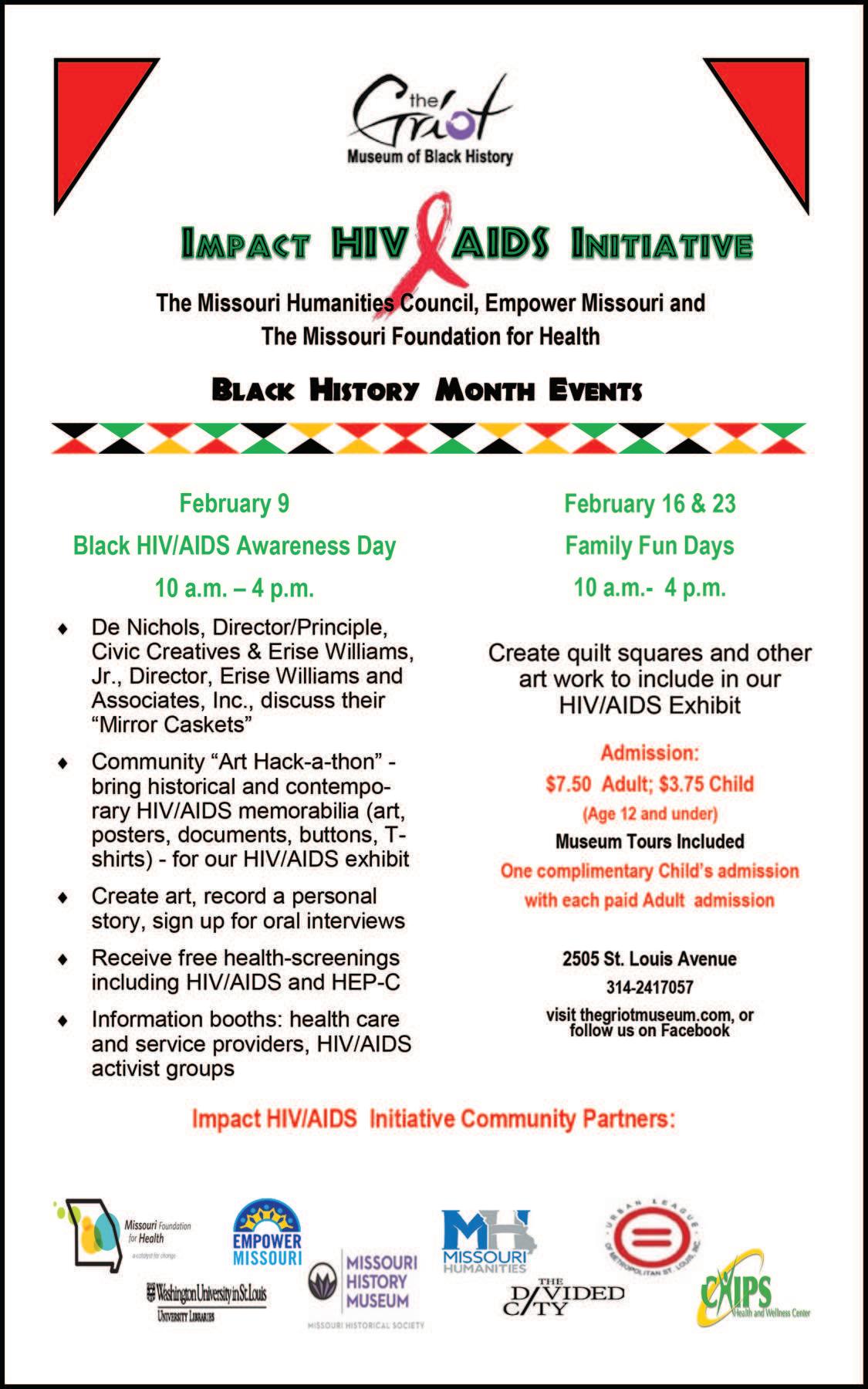
funding the fees for indigent individuals and stopping the practice of incarcerating people for failure to pay EMASS fees.
They also said the court needed to stop using court resources or authority to serve as a debt collector for EMASS.
“Pretrial release is our constitutional and statutory presumption in Missouri, but cash bail and unaffordable pretrial services continue to incarcerate public defender
to address the unacceptable living conditions at ClintonPeabody Housing Complex. These, and many other initiatives, made a real difference in the lives of everyday people in the city.
On homelessness, I sponsored legislation to create a Homeless Bill of Rights, cosponsored a resolution to encourage adopting the Continuum of Care, and voted to create a tax credit for contributions to homeless shelters. On women’s rights, I secured funding for postpartum healthcare resources and Annie Malone Children and Family Services Center as part of the state budget process. I sponsored legislation requiring insurance coverage for fertility treatments and mammograms, cosponsored legislation to require hospitals to provide emergency contraception to rape survivors, and sponsored legislation to protect domestic violence survivors.
On economic justice issues, I’ve cosponsored a resolution supporting the right to organize, cosponsored legislation regulating mortgage brokers, and cosponsored legislation to support St. Louis Treasurer
clients unnecessarily,” said District
“The chief justice of Missouri has reminded the courts that jails should be reserved only for those who pose danger or risk of flight, but in the City of St. Louis the jails are occupied by too many citizens who are there simply because they are poor.”
Tishaura O. Jones’s financial empowerment Initiatives. My legislative record reveals one of the big differences between Green and myself: bills I sponsor actually become law and end up making a real difference in the lives of everyday people. I know what it takes to get big things done. I know how to craft legislation, collaborate with other legislators, and move legislation from an idea to a law. I’m the only candidate in this race who has a record of real results on important issues facing our city. It’s a fresh, new kind of leadership that our city sorely needs. We need change. We need a change agent who knows how to get things done and has a track record to prove it. I’m running for president of the Board of Aldermen because our city – my city –needs that new change agent.
Jamilah Nasheed is running for president of the Board of Aldermen in the March 5 Democratic primary. The American will offer the three most competitive candidates equal space to present their views before the election.
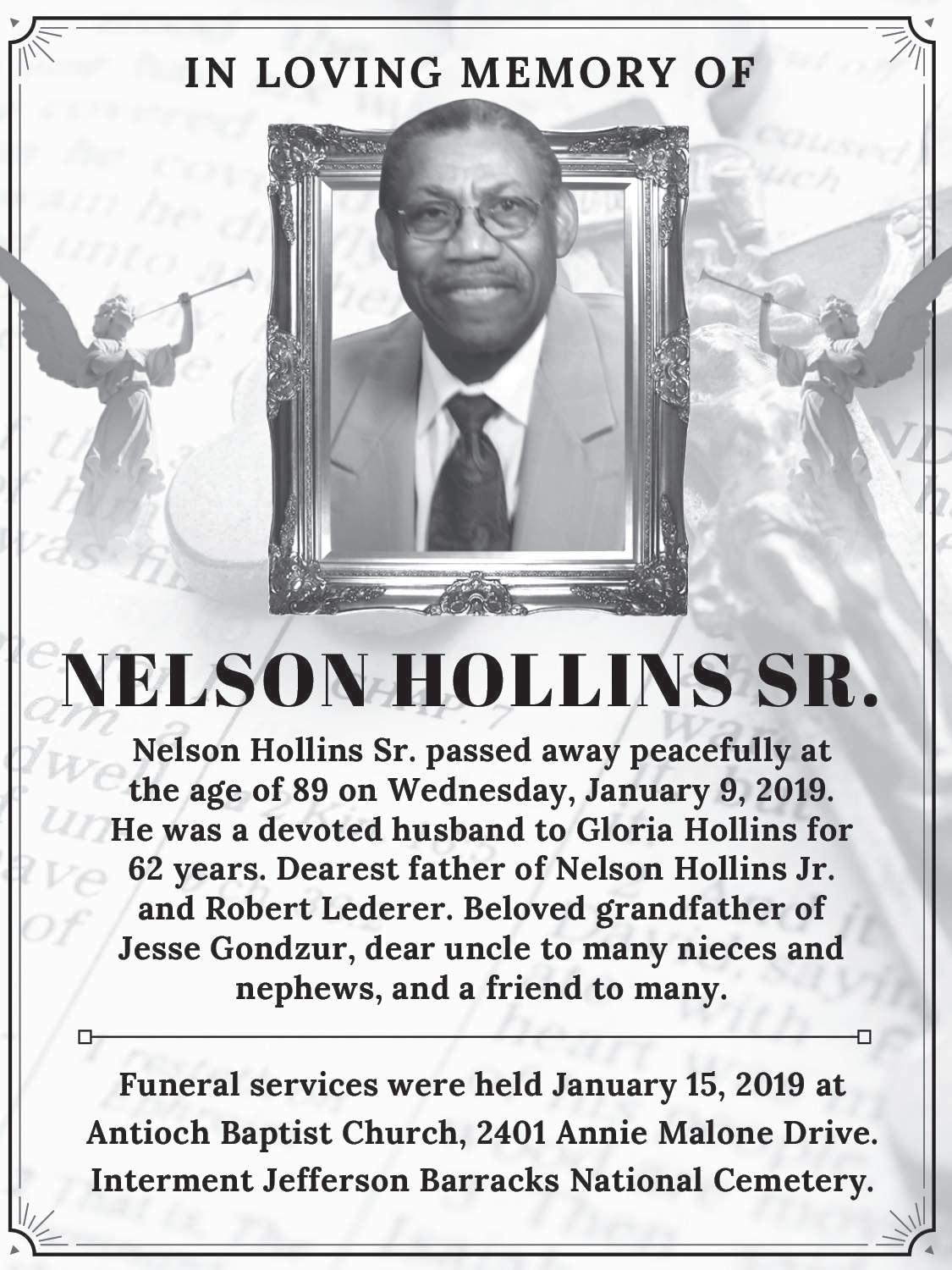
Continued from A1
data to action, from questions to solutions. That is why the real title of the talk that she will give in St. Louis is “Tools for a National Campaign Against Racism.”
“We need the tools to name racism, we need to continually ask how is racism operating here, and we need the tools to organize and strategize to act,” Dr. Jones told The American
To provide these tools, she relies less on data than narrative. She is developing her own tool box of “allegories” to help people see racism at work and to name it. These allegories, some of which she will share with her St. Louis audience, are helpful because race is a nebulous concept and people have many barriers against talking plainly about racism.
“We have these persistent disparities in health, wealth, housing – all of these outcomes
Continued from A1
American campus minister at Southeastern Missouri State University, left a church in St. Louis that he had founded, The Meeting Place, to apprentice at West Side. Early last year, the West Side congregation, which has an active membership of about 1,800, overwhelmingly elected him to succeed his father as senior pastor.
“He is able to reach people in an extraordinary way, especially younger people,” Rev. Bobo said of his son. “He is always inventive, imaginative, always doing something to catch people’s attention. He loves people, and people love him.”
Ironically, the elder Bobo has another church position lined up, but not as senior pastor. Rather, he will be supporting and guiding a
– by so-called race, but what is this thing called race? Race is not a measure for genes at all –we’ve now mapped the human genome, and that’s not it. The variable of race in some ways measures social class, but it’s only a rough proxy for social class,” she said.
“Race maps the social interpretations of people in a race-conscious society. It’s the same race identified by police officers, judges, teachers, taxi drivers, that same race that is marked off on health and housing statistics, that same race that has an impact on our individual health and wellbeing and the health and wellbeing of the nation.”
Though she works in academia (as a senior fellow at the Satcher Health Leadership Institute and Cardiovascular Research Institute at the Morehouse School of Medicine), this national campaign she is trying to spark is not merely academic. She considers it a matter of our nation’s public health and even survival.
younger pastor who is his son’s age, the Rev. John Tolbert, pastor of Trinity Baptist Church in Pontiac, Michigan. Tolbert was still a baby when Bobo left his hometown of Detroit, but he later became pastor of Bobo’s home church, People’s Missionary Baptist Church in Detroit. Their friendship grew from there.
“He offered me the opportunity to come work alongside him,” Bobo said. “I will be helping him as an older person on staff, doing some mentoring with him and doing whatever I can to be of help.”
In fact, Bobo has been training pastors all over the world for many years. He chairs the Foreign Mission Board of the National Baptist Convention, U.S.A., Inc. and serves as executive secretary of the Foreign Mission Board of the Missionary Baptist State Convention of Missouri. He has licensed or ordained more than 125 preachers of the
While she was teaching in Rwanda, she was taken on a tour of a genocide memorial dedicated to the public memory of the mass slaughter of 1 million Tutsi in 1994. The exhibits left nothing to the imagination. There was no escaping the fact and evidence (crushed human skulls, vast collections of human bones) of brutal mass slaughter based on ideas of ethnic difference.
“As we left, a Rwandan colleague asked me did I cry, and I said no, I didn’t,” she said. “I was terrified. It was clear to me that we in the U.S. are not just two or three years near that path. We are on that path. All it took in Rwanda was a spark. All it would take here is a spark.”
Dr. Camera Jones will speak 4 p.m. Monday, January 21 at the Eric P. Newman Education Center, 320 S. Euclid Ave. Validated parking is available at the North Euclid Parking Garage. To RSVP or for more information, call 314362-6843 or email eriggs@ wustl.edu.
Gospel. That work continues.
Next month he will travel to the Republic Vanuatu, near Fiji in the South Pacific – “a country inhabited by black people in the middle of the Pacific,” Bobo said – to teach pastors homiletics, the art of preaching. He was recommended by his friend Miyon Chung of Morling College in Australia. “They needed people who are not pure academics, who been on the front line doing practical ministry, and I kind of fit that area,” Bobo said. Later in the year, he will travel to Uganda to teach pastors along with a medical team that will include Dr. Denise Hooks-Anderson, The St. Louis American’s medical accuracy editor. He now has traveled to 32 nations (on every continent except Antarctica) “teaching, preaching training leaders and pastors in various aspects of ministry,” Bobo said. “I have been very

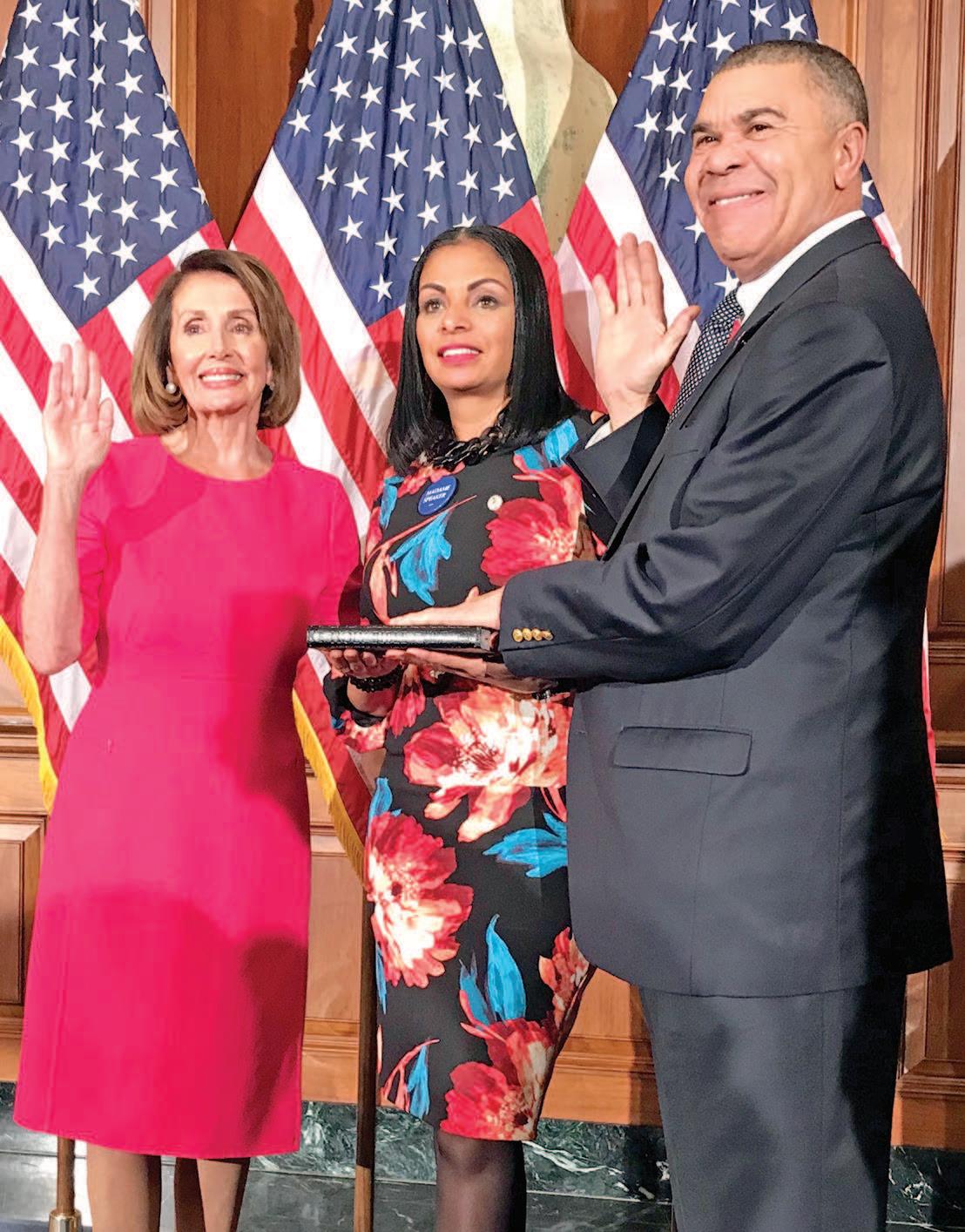
fortunate to have been afforded a variety of opportunities in life and ministry to travel and to minister in various places around the world.”
But no place has meant quite as much to him as the church he is now leaving, at least in a
leadership capacity. “I love West Side,” Bobo said. “I am grateful for 32 years. The people at West Side and this community have been wonderful to me and my family.”
Bobo preached his last
sermon as senior pastor on Sunday, January 13, at the 10 a.m. worship service at the church’s City Campus at 4675 Page Blvd. For more information, call 314-535-9002 or visit http:// www.westsidembc.org.


By state Auditor Nicole Galloway
For The St. Louis American
It is an honor to serve as Missouri’s state auditor, and I take my role as your independent watchdog seriously. It is my job to tell Missourians who is corrupting our government and to hold the powerful accountable to the people of this state. I believe in this office – in the importance of being an advocate for citizens and in the ability to make government work better for people.
I’m proud of what we’ve accomplished. Our audits have identified more than $300 million in government waste, fraud, abuse and mismanagement. And because of our audits, 38 criminal counts have been brought against corrupt public officials. As a result of the work of my office, government officials have been kicked out of office, received felony convictions, and made to repay the money stolen from taxpayers. When corruption is unchecked and when politicians are serving themselves and not the people, we bring accountability. Each time we expose corruption and abuse, it makes an impact. It puts others on notice that their wrongdoing will see the light of day. When I travel the state, I hear from Missourians who tell me they feel like the system is rigged against them. Missourians are frustrated. I understand that frustration. People work hard for what they have. They work hard
to provide an opportunity for themselves and for their families. They expect government to respect their dollars. They want good roads, good schools, and to feel safe in their communities. Missourians ask government and its leaders to do the hard work of being efficient and responsible with their money. But it’s clear from my audits that is not always happening.
In Viburnum, a former city clerk stole more than $100,000.
Much of this theft was committed when residents came in to pay their water and sewer bills. I think about the senior citizens in that community living on a fixed income, struggling to come up with the money to keep their utilities on.
In Callaway County, more than $300,000 was stolen by the former collector. When citizens paid their taxes in cash, she would simply pocket the money for herself. Meanwhile, I know there are families making tough decisions on how to pay their rent or mortgage, or afford childcare.
In Putnam County, an out-ofstate management company ran a $90 million billing scheme through the county-owned hospital. Federal investigations were launched after the practice was exposed. Throughout the country, small, rural hospitals have been targeted and put at risk. At the same time, citizens face higher healthcare costs and fewer options for emergency medical care.
Right here, in the halls of state government it has happened time and again –

notably, with the Department of Revenue. Tax refunds to citizens were increasingly late, and taxpayers were not getting the interest owed on those late refunds. We heard from thousands of Missourians who were frustrated and could not get answers.
bipartisan legislation that levels the playing field between the taxpayer and the government. Now, again, comes the news of unjust action by the Department of Revenue. The state incorrectly calculated how much tax to withhold from paychecks, meaning
n Fraud and abuse will not be tolerated; the buying and selling of government will not be tolerated; corruption will not be tolerated.
Our audit got the answers taxpayers deserved. It found that the state paid next to nothing in interest on late tax refunds. At the same time, taxpayers who filed late paid a significantly higher interest rate. Our subpoenas, our exposure of this abuse, led to
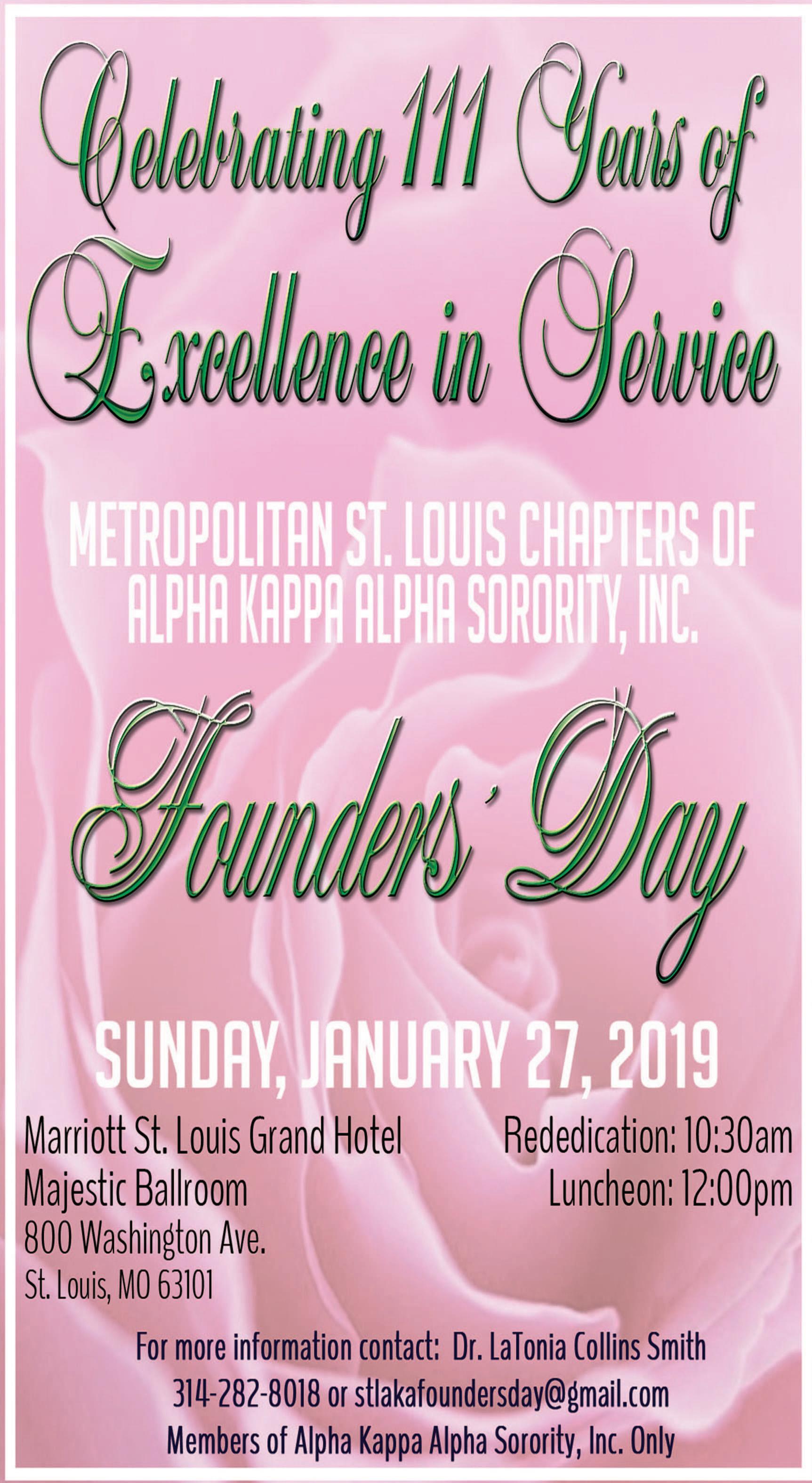
Missourians will get an unwelcome surprise. Fewer people will get refunds and instead will get a tax bill from the government. In all, citizens will be footing a $134 million tax bill this year that they were not expecting.
This is real money to real
people. Some officials in Jefferson City act as if the loss of even $50 or $100 won’t matter to people. This is exactly why Missourians feel that the system is rigged against them. And this creates distrust in our public institutions.
But I know that’s a trip to the grocery store, a couple tanks of gas to get to work, or money saved for a special family outing. The administration might be trying to sweep this under the rug, but I will hold them accountable to you. Missourians deserve transparency. From city hall to the county courthouse to the Capitol: fraud and abuse will not be tolerated; the buying and selling of government will not be tolerated; corruption will not be tolerated. Our job as public officials is to serve the public. I have a message for those officials who
don’t: If you commit fraud, if you steal from taxpayers, if you are dishonest with the citizens of Missouri, my office will find you, and I will hold you accountable.
I’m so proud to renew my oath of office today and to expand on the great work we have accomplished. We are reaffirming our fight against public corruption.
As such, today I am announcing the creation of the Public Corruption and Fraud Division within the State Auditor’s Office. This division will have dedicated auditors and attorneys, law enforcement professionals, forensic auditing specialists and certified fraud examiners. We will use technology and data analytics to target and uncover theft and fraud. My team will have the tools, resources and expertise to expose wrongdoing. As a certified fraud examiner myself, I am committed to creating the strongest and most robust public corruption force the state has ever seen. Our partnerships with law enforcement have shown proven results time and again. But red tape created by Missouri laws prevents my office from working with law enforcement even when it’s known fraud is occurring. My office has the forensic auditing expertise that law enforcement needs to seek justice for taxpayers. I call on the legislature to pass our public corruption bill. This legislation is supported by county prosecutors across the state.
I’m so proud to serve Missourians as their independent watchdog. To expose unfairness, greed, and corruption affecting their communities and their families. The people of Missouri should know there is someone looking out for them – and I’m just getting started. Edited from remarks made at her swearing-in ceremony on January 14.
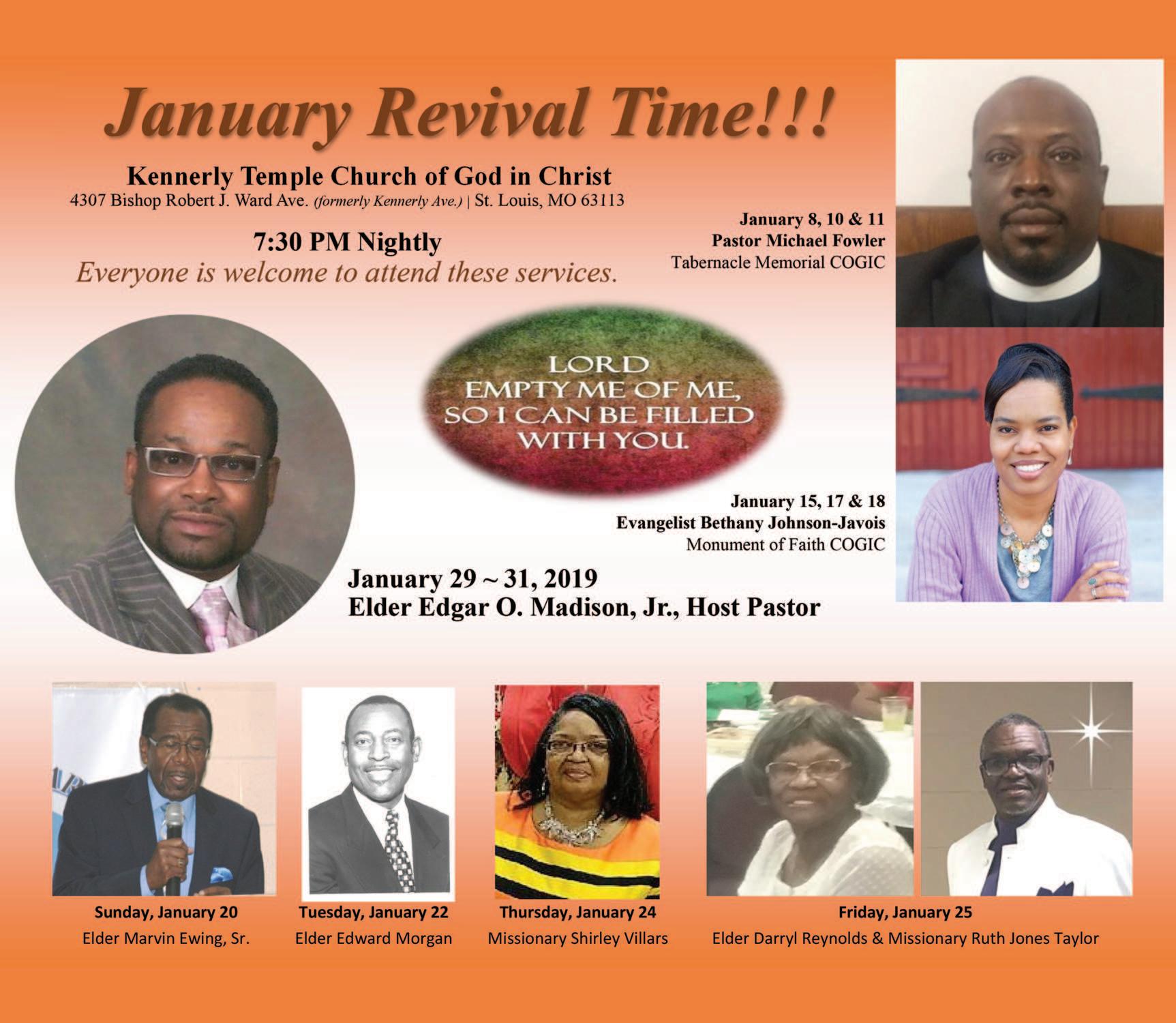
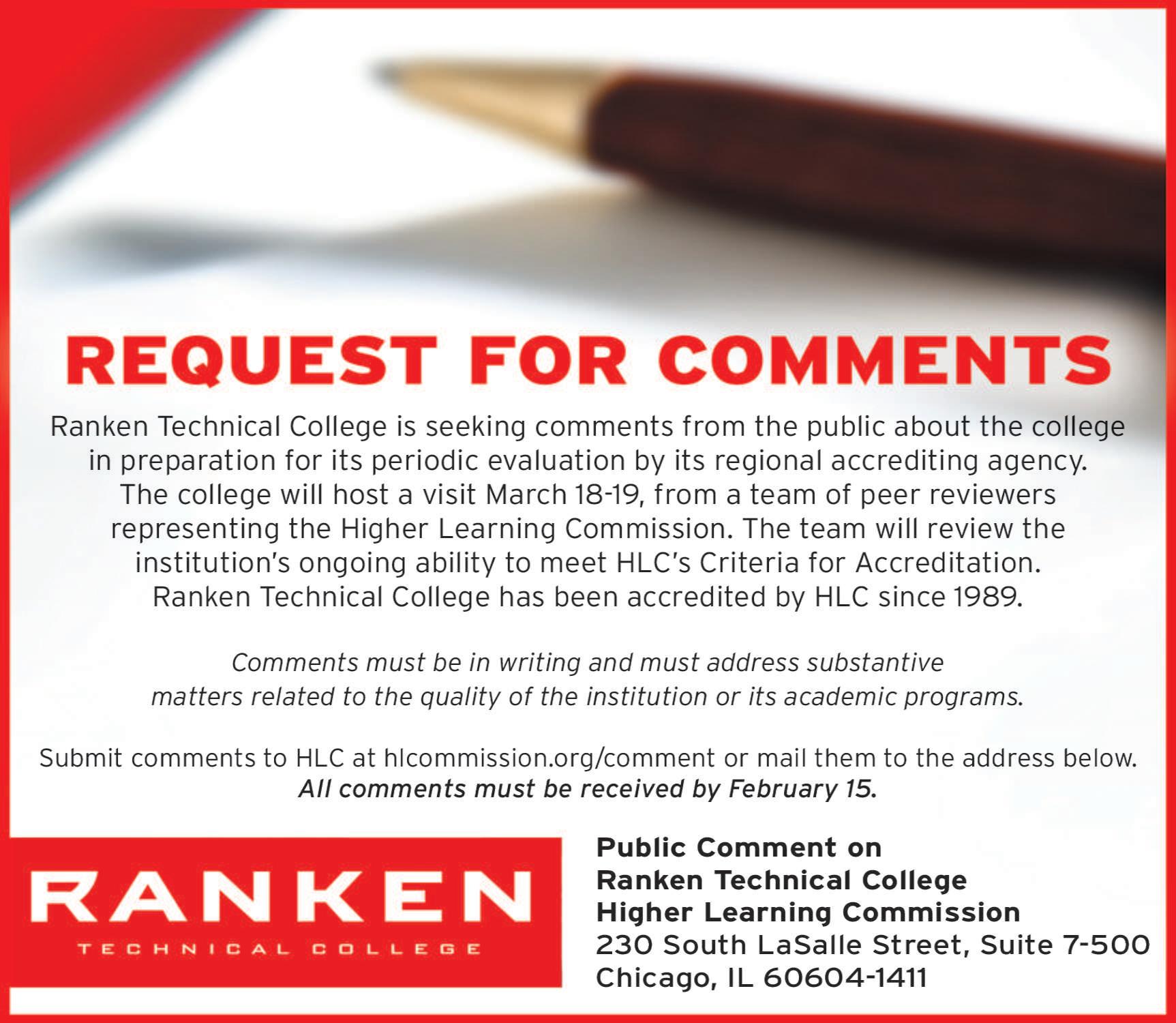

Chiropractor Ross Mattox assisted his CareSTL Health patient Monteal Paige to reduce back pain and the need for pain medication – and lose 70 pounds – with aqua aerobics, stretching and exercises she continues to do on her own.

Eat better and exercise more, her chiropractor said – and it’s working
By Sandra Jordan Of The St. Louis American
Many of the patients in pain who are referred to the chiropractic clinic at CareSTL Health are also obese, said chiropractor Ross Mattox, D.C., an associate professor at Logan University.
Monteal Paige has been a patient at CareSTL Health several years. A few years ago, however, she started experiencing excruciating back pain and was referred to Mattox, the onsite chiropractor at the CareSTL Health location on Martin Luther King Drive.
“When she first started, she was in rough shape,” Mattox said. And she was in pain all
n “You’ve got to get moving and you’ve got to eat better. If you don’t change those things, then you’re looking at a pretty bleak outlook.”
– chiropractor Ross Mattox
the time. Mattox said they challenged her to do something about the stress on her back.
“We get a lot of patients that come to us with pain, and they’ve often tried
medications and different stuff,” Mattox said. “Usually, it boils down: what are they going to do for themselves, not what I can do for them? For her, just like all the other patients, you’ve got to get moving and you’ve got to eat better. If you don’t change those things, then you’re looking at a pretty bleak outlook.”
In this case, Paige really listened to her doctor and turned that talk into action – and it made all the difference.
“When I first started, I had really, really bad back pain, and I was going twice a week,” Paige said. “Now I only go, like,
By Sandra Jordan Of The St. Louis American
The American Heart Association (AHA) is partnering with organizations to provide lowcost online training to health professionals and for everyday bystanders to help save lives in the case of opioid overdoses. AHA says the courses quickly and effectively teach the public and healthcare professionals about the opioid
epidemic and what they can do to help someone who has had an overdose.
The self-directed bystander course will discuss recognizing an opioid overdose and its treatment – including the use of high-quality CPR and reversal agents as appropriate. The healthcare provider course will also provide detailed information about the opioid epidemic, opioid-use disorder, pathophysiology of pain and opioids that
lead to addiction, as well as provide an overview of complementary therapies. The course – intended for EMTs, paramedics, nurses, physicians and additional mid-level healthcare providers – will enable providers on the front lines of this medical crisis to improve patient care and save more lives.
“As the provider of resuscitation training
See OPIOID, A11
By Dr. Graham A. Colditz For The St. Louis American
This is not your typical New Year’s resolution health-and-fitness column. Those often focus on big, sweeping changes, such as losing 40 pounds or training for a marathon. Here, instead, we’re heading in the opposite direction by focusing on smaller, easier-to-accomplish changes. Let’s call them, New Year’s touch-ups.
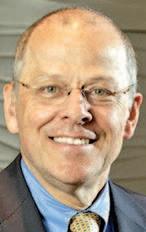
While big New Year’s resolutions can be fantastic and really beneficial, smaller goals can be easier to start and include in your daily routine. And although they might not feel as bold as bigger resolutions, they can still have an important impact on your health, helping to lower the risk of cancer and other important diseases. Best of all, they’re simple. You might be doing some of them already. If so, keep them up, and try to work in new ones. If these are mostly new, pick one or two to work on. And once you have them down, pick up others. There’s no need to rush.
Stand more. Most of us spend too much time sitting, and it’s increasing our risk of weight gain, diabetes, heart disease and maybe even some cancers. If you have to sit for work or school, try to stand up once or twice an hour for a few minutes. Standing desks are even better. At home, try standing when watching TV or spending time on your computer or phone.
Go meatless one day a week You might have heard of “Meatless Mondays,” but you can pick any day of the week to give it a try. A plant-based diet has major health benefits, so pick one day a week to really focus on fruits, vegetables and whole grains. If you’re not ready to go completely meatless, try baked or grilled fish one night instead of red meat.
Step on your bathroom scale “Easy but not fun” may best describe this one. But stepping on your scale regularly (once a day or once a week) is a great way to keep weight in check. If you notice your weight creeping up, you can make small changes to how much you eat and how active you are.



By Sarah Fentem Of St. Louis Public Radio
African Americans have lower levels of a key protein associated with Alzheimer’s disease, which could keep blacks with the disease from being diagnosed, according to Washington University researchers.
In a 12-year study of 1,255 participants, the researchers found black patients have a much lower baseline level of the protein tau, which is present in higher amounts in patients with the neurodegenerative disease. Because doctors look for the protein when diagnosing Alzheimer’s, lower levels in black patients mean they may not be diagnosed as quickly as their white counterparts.
As a result, black patients — already disproportionately affected by the disease — may not receive proper care, the study’s authors said.
The findings, published in the journal JAMA Neurology, reinforce the need for more race-specific Alzheimer’s research, said Washington University neurologist John C. Morris, lead author of the study. While black people are two to three times more likely to suffer cognitive impairment than white people, most research is done primarily on white participants, he said.

A tangle of tau proteins in a patient with Alzheimer’s disease. Elevated tau levels are used to diagnose the disease in patients, but a new study has found black patients have lower baseline levels of the protein.
control memory.
before patients start showing cognitive decline, said Morris, the director of Washington University’s Knight Alzheimer’s Disease Research Center.
To create and study those therapies, researchers need to take how the disease affects people of different races into account, he said. For the study, he and his colleagues close to 200 African-American patients, who made up 14 percent of the total participants.
But getting to that point hasn’t been easy, he said.
Researchers have found it difficult to include AfricanAmericans in their studies — in part because many black people don’t trust a medical system that has long ignored or abused them, he said.
For example, between the 1930s and the 1970s, the U.S. Health Service infected black men with syphilis without their knowledge to study the disease. The Tuskegee Experiment still looms in the minds of many African-Americans. And hospitals and research institutions have a long history of shutting black patients out.
“In the 1960s and ‘70s there still was racial discrimination at Barnes hospital,” Morris said. “Patients had to be seen in the basement.”
Continued from A10
In healthy brains, the protein helps hold up brain cells. In Alzheimer’s patients, the proteins detach and stick to each other, which blocks communication between neurons. Research suggests it builds up in brain regions that
The different protein levels indicate “the disease may develop differently in African Americans compared to whites,” Morris said. “We’re developing therapies based on what we think the disease mechanisms are. And if they differ in racial groups, we need to know that, because we may need to develop different therapies.”
for more than 90 percent of U.S. hospitals, the American Heart Association is stepping into this crisis and filling the need in standardized education for healthcare professionals,” said Eduardo Sanchez, M.D., MPH, the association’s chief medical officer for prevention. “Arming as many people as possible with up-to-date, practical knowledge on what to do – both immediately and as follow up – is imperative to saving lives and improving outcomes.”
Continued from A10
Sneak in some vegetables
Adding more vegetables to your diet is always a good idea. And one easy, and somewhat sneaky, way to do it is to grate vegetables into some of your usual dishes. Carrots, squash and cauliflower practically disappear when grated into soups, casseroles and pasta
Continued from A10 once every two weeks.”
At first, she described her pain level as a “10-plus.” Now she rates it at “5-ish.” Even though her pain has not disappeared, the need for pain medication has. “I don’t take any pain medicine,” she said.
Mattox described the cycle of pain that people go through.
“They have pain, therefore they don’t move as much. When you don’t move as much, you start to gain weight. Now that you’re gaining weight, guess what? You’re
Doctors and researchers call such proteins “biomarkers,” because higher levels are found in patients with Alzheimer’s. Disease patterns in both white and black patients indicate that rising tau levels are associated with cognitive impairment. But African Americans had much more
lower levels of the protein to start out with. Even when they rose in black patients, it wasn’t to the level that was seen in white patients. That’s important because researchers are increasingly finding that biomarkers such as the tau protein are important predictors of the disease. The effects Alzheimer’s has on the
n Deaths from opioid overdoses, due to respiratory and cardiac arrest in these patients, have reached crisis proportions and created the urgent need for science-based, standardized education.
Deaths from opioid overdoses, due to respiratory and cardiac arrest in these patients, have reached crisis proportions and created the urgent need for science-based, standardized education. The
sauce, but they provide a good nutrition boost.
Pick low- or zero-sodium canned foods Most people eat too much sodium, which can increase the risk of high blood pressure, stroke, heart disease, even stomach cancer. Canned foods can be a major source of sodium, so choosing zero- or low-sodium options can be an easy way to cut back.
Cut back on sugary drinks
going to have more pain, because there is more weight on their joints,” Mattox said.
“That’s the cycle: more pain, less movement, weight gain; more pain, less movement, weight gain. You’ve got to get in there and stop that somehow.” Paige is stopping it. She has lost 70 pounds in the process of managing her pain through exercising and changing what and how she eats.
Sugary drinks – such as sodas, energy drinks, juice drinks and many coffee drinks –are a major source of extra calories and have been found to increase the risk of obesity, diabetes and heart disease.
Drinking fewer sugary drinks is an easy way to shave calories from your day. And getting down to zero is best.
Try no-calorie fizzy water and unsweetened coffee and tea instead.
Slow down We tend to rush through our days, and this often includes our meals and snacks. Try to slow down the next few times you eat. Take a minute to sit quietly before you start, then eat much more slowly than you normally would. You may find you’re satisfied with less food than you would be usually.
Keep sunscreen within arm’s reach Broad-spectrum SPF 30 or higher sunscreen provides good protection
n “That’s the cycle: more pain, less movement, weight gain; more pain, less movement, weight gain. You’ve got to get in there and stop that somehow.”
– chiropractor Ross Mattox
“I’m not on a diet; it was just changing my eating habits,” she said. “The only meat I eat is fish or seafood. I’ve cut out a lot of the other meat, chicken and pork and all that. And I eat a lot of fruits and vegetables and drink plenty of water.”
She has resorted to no fad diets, no rippling ab routines, no insurmountable workouts.
brain are sometimes in place decades before symptoms, such as memory loss, appear. Many recent clinical trials attempting to treat symptomatic Alzheimer’s patients have failed. Those failures indicate the best treatment for the disease will have to be administered after brain chemistry starts changing, but
Now, people of that generation are old enough to be enrolled in research studies, Morris said.
“They see Wash U and Barnes Hospital as discriminatory,” he said, “even though we’re trying to erase that.”
Follow Sarah on Twitter: @ Petit_Smudge.
Reprinted with permission from news.stlpublicradio.org.
AHA trains more than 22 million people globally every year by educating healthcare providers, caregivers and the general public on how to respond to cardiac arrest and first aid emergencies. These new courses, coupled with the existing resuscitation training from AHA, provides more comprehensive preparation for the general public, healthcare providers and emergency responders.
against the sun’s damaging rays. But it can’t do its job if you forgot it at home. So, keep some backup sunscreen in your car, backpack, desk, purse or other easy-access spots. This way, when you’re ready to go outside, you’ll have it ready to put on.
New Year’s is filled with promise and energy, which makes it a wonderful time to set new health goals for ourselves. Trying these touch-
resources that they didn’t know about,” Mattox said. “St. Louis has dozens of community centers with indoor swimming pools.” He said the pool is like a magical tool, because the buoyancy of the water takes pressure off painful joints.
Opioid Education for Healthcare Providers (https:// elearning.heart.org/course/319) costs $20, and Opioid Education for Non-Clinical Staff and Lay Responders (https://elearning.heart.org/ course/320) costs $10.
ups can be a great way to harness that potential and improve your health in 2019 and beyond. It’s your health. Take control. Happy New Year. Dr. Graham A. Colditz, associate director of prevention and control at Siteman Cancer Center at Barnes-Jewish Hospital and Washington University School of Medicine in St. Louis, is an internationally recognized leader in cancer prevention.
Right now I am down to 230.”
Every little bit of movement and every little dietary change helps, Mattox said. Additionally, he said his patient also took up aqua aerobics, and Paige now loves the exercise she gets in the pool three or four times a week.
“I do stretches at home, and they have me walking more as far as exercise,” Paige said. “It has been a great thing for me. I was weighing about 300 pounds or so, and I’m sure that had a bearing on my back.
“We simply get people
“Now you can move around a little more comfortably and get that exercise that you need,” he said. “But the thing is that most people don’t know that this resource exists.”
The community pool option is crucial for older patients and people who are particularly out of shape. “How many people do you know who are over 60 that go out there and do a bunch of physical exercise at the gym? Probably not that many,” Mattox said. “But if they get in the pool, it makes it a little bit easier for them.” For Mattox, Paige presented a routine case and he offered routine advice. What was different was that she acted upon it.
“Almost every one of our patients got the talk that Monteal got – they need to move more and they need to eat better,” he said. “Monteal is a very special patient, because she really took it on and said, ‘Okay, I’ve really got to make a change.’ Her life now is dramatically different than it was a few years ago.”


You get home from school and you’re hungry. You grab the closest snack you can find. But do you really know what’s in the food you’re about to eat? Take a look at the Ingredients Listing found on all food labels. Two key things to remember are: What comes first? — Ingredients are listed by the amount of that item the food contains. In other words, if the first ingredient is sugar (or corn syrup, fructose, etc.) you know that food contains a lot of “empty” calories. This means that the food probably won’t provide many nutrients, just a lot of calories.
It is often said that the hardest part about exercising is getting started!
So, start small. For example, if you want to be able to run 5 miles, you can’t just go out and run that far on your very first try. First, start by walking farther and faster each day.
Monday, January 21, is Martin Luther King Jr. Day. Why not celebrate by not just enjoying a day off school, but deciding to use the day to make a difference for your community?
Research online and in the newspaper for events taking place on Monday


INGREDIENTS:Whole Grain Corn,Sugar,Corn Meal,Corn Syrup,Canola and/or Rice Bran Oil,Cocoa Processed withAlkali,ColorAdded,Salt,Fructose,Natural andArtificial Flavor,Trisodium Phosphate,BHTAdded to Preserve Freshness. Vitamins and Minerals:TricalciumPhosphate,Calcium Carbonate,Zinc and Iron (mineralnutrients), Vitamin C (sodium ascorbate), A BVitamin (niacinamide), Vitamin B
Keep it short! — You want the list to be short: not many ingredients. Generally the shorter the ingredient list the more natural the food, and healthier for you. Avoid foods that contain a lot of chemicals and preservatives in the ingredients list.
Discussion: Why aren’t there ingredients lists on fresh fruits and vegetables?
Learning Standards:
When you can walk briskly for thirty minutes, slowly add in some running along the way.
Try walking 10 minutes and then run for three and walk for 10 again. When you can do that pretty easily, switch it to walking for five minutes and running for five. Finally, you’ll switch to walking for three,
that reflect the ideals and causes that were so important to Dr. King. Are there any community/ neighborhood projects that would appreciate your contribution? Can you think of your own project?
Learning Standards: HPE 2, NH 5
running for 10, and eventually you can run the entire 30 minutes! Remember that this could take a few months to accomplish, and always ask your doctor if it’s a good idea to do the kind of exercise you’re choosing.
Learning Standards: HPE 2, HPE 5, NH 1
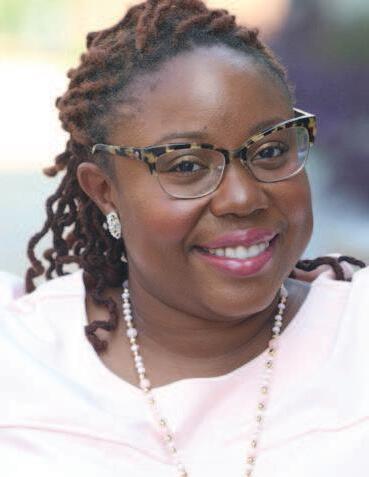
I often heard my clients say, “I want to talk to someone about my problems that looks like me.” I chose to become a therapist because I recognized that there was a shortage of African-American therapists and I wanted to reduce the shame connected to talking with a mental health therapist in the African American Community.

What is your favorite part of your career? My favorite part of my job is helping patients find their inner “super powers.” Sometimes bad things can happen in life and it causes people to doubt themselves and lose hope. I get to support people through tough times and help them reconnect or find their inner strength to move forward and accomplish their dreams in life.
Learning Standards: HPE6, NH3
“Questions or comments? Contact Cathy Sewell csewell@stlamerican.com or 314-289-5422



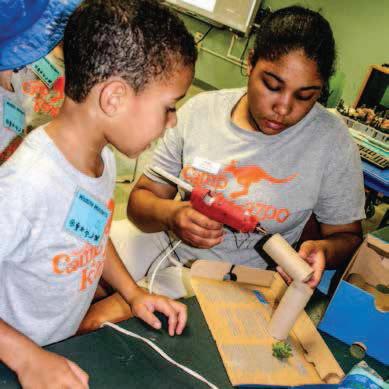
Questions or comments? Contact Cathy Sewell csewell@stlamerican.com or 314-289-5422

At Premier Charter School
4th grade teacher
Lauren Tyler
page for new ideas for STEM lessons.
by Wiley Price/ St. Louis American.



Considering the popularity of video games, it’s only logical to think of ways to incorporate education into the mix. A team of scientists from Scripps Institution of Oceanography used this idea to create a game that allowed Xbox users to explore a virtual underwater environment. It is called Deep sea Extreme Environment Pilot (DEEP) and won honors at the 2013 International Science and Engineering Visualization Challenge.

various organizations. He was also part of a team that developed a game that allowed users to feel the effects of a virtual earthquake. The team is working to develop software that can be used to test students.
Read this article about a young boy who has turned his love of video games into a winning science fair topic: http://www.sciencebuddies.org/blog/2012/05/success-storyscience-of-video-games.php.

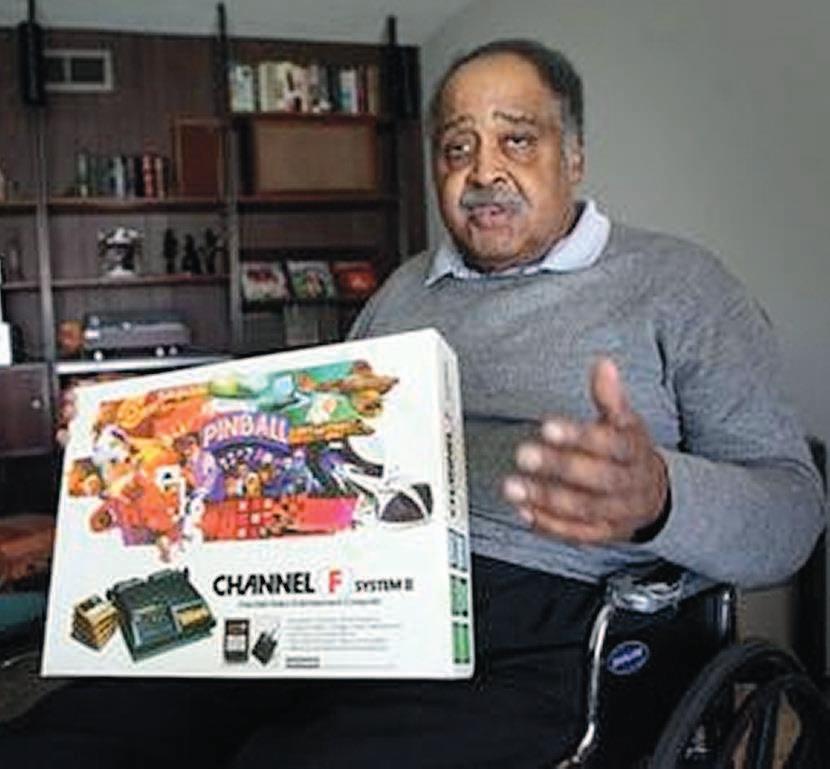
Gerald Anderson Lawson was born on December 1, 1940, in New York City. He was inspired by George Washington Carver and was fascinated by electronics growing up. In order to raise money for college, he repaired television sets. After attending Queens College, he became the only black member of Silicon Valley’s Homebrew Computer Club. It was in this club, that Lawson met Steve Jobs and Steve Wozniak, cofounders of Apple Computers.
In the 1970s, Lawson helped to create Fairchild Channel F, which allowed people to play a variety of games in their homes. This system inspired later designs by Atari, Nintendo, Xbox, and PlayStation. Lawson was one of a very few black engineers in the video game industry at that time. In an interview with A&E’s television show, “Bio,” Lawson stated that he often faced opposition in the work place because of his race. April 2009, Lawson passed away due to complications from diabetes.
To find out more about how video games are designed, visit: https://www.pbs.org/kcts/videogamerevolution/inside/ how/index.html.
Danny Rohrlick is the programmer who developed the game. He has presented the design to schools, museums, and

Background Information:
In this experiment, you will see how video games affect the body in terms of blood pressure, breathing rate, heart rate, and skin sensitivity.
Materials Needed:
• Toothpicks • Stopwatch • Pencil

• Notebook • Blood Pressure Monitor
• Action Video Game & Console
Procedures:
Learning Standards: I can read nonfiction text to find main idea and supporting details.
Find out How Video Games Affect the body!


q Choose an exciting, fast-paced video game with an element of danger. Choose 5 friends to serve as “subjects” to participate in this experiment. You will need to record their age, gender, and experience level with video games (nonexistent, beginner, intermediate, advanced). Record this beginning information in your notebook.
w Begin with the first subject. Set your stopwatch for one minute and record the number of breaths they take. Write this information in your notebook for breathing rate. Find their pulse on their wrist and count the number of heart beats in 10 seconds. Multiply this by 6 to calculate the heart rate. Record their blood pressure

Playing video games can be educational and fun. However, it should be enjoyed in moderation, so you have time for other activities like socializing with friends and family, exercise, homework, and other hobbies. Some families set a time limit for their children when it comes to video games.
z If your family limited your video game time to 60 minutes a day, how many minutes is that per week? ________ per month? ________ per year? ________
x If your family limited your video game time to 210 minutes per week, how many minutes could you play each day if each

Check out these interesting facts about gaming.

by using the blood pressure monitor. Test their skin sensitivity by using the toothpick. Have them look away and (gently) poke them ten times. Have them count the number of pokes they feel.
e Have them play the game for 10-15 minutes… be sure they have experienced fast paced action sequences. Record breathing rate, heart rate and blood pressure at the end of this time frame and write your findings in your notebook.
r Resume the video game for another 5-10 minutes. Test skin sensitivity while your friend is still playing the game. This time, you will poke them 15 times with the toothpick. Record your findings in your notebook and write any important observations you noticed while they were playing the game.
t Repeat steps 1-4 with the remaining subjects.
Learning Standards: I can read a biography about a person who has made contributions in the fields of science,


Use the newspaper to complete the following activities.
Analyze your results: How did video games affect breathing rate, heart rate, blood pressure, and skin sensitivity? Did you notice any trends with the data that were similar among age, gender, or level of video game experience? Learning Standards: I can follow sequential directions to complete an experiment. I can analyze the results.
TIme, Math, & Video Games! day had an equal number of minutes? ________ c Mariah’s family allows her to play video games for 240 minutes per week. She spends half that time on the weekend. How much time does she spend on the weekend? _____ She divides the other half of the time equally for the week days. How many minutes does she play each week day? ________ What is the average amount of time she spends per day? ________ Learning Standards: I can add, subtract, multiply, and divide to solve a problem.




Activity One
Word Choice: It is important to have distinct and exciting word choices



newspaper. When reporters quote the person they are interviewing, they cannot use “said” for every quote. Use today’s newspaper and make a list of the different ways to say “said.”
Activity Two — Technology:
Use the newspaper to find examples of new forms of technology. State the type of technology and the purpose.
Learning Standards: I can use the newspaper to locate information. I can write for a variety of purposes and audiences.





Charles Jaco – journalist, author, and activist (on Twitter at @charlesjaco1) – who took down U.S. Senator Claire McCaskill’s Republican challenger Todd Akin six years ago in a bruising broadcast interview, came out of retirement to write for The American before the November 6 general election and has stuck with it. He penned this guest Political EYE.
Donna Rogers helps get the crops planted and keeps the money flowing in rural Missouri. The 51-year-old North County single mother of two processes loans from the federal government to farmers, loans used to buy everything from seed for spring planting to new tractors to irrigation systems. Farmers and their nearby communities use those loans to survive, just like Rogers uses her paycheck. But thanks to Donald Trump’s creation of a phony crisis on the southern border and his insistence that the only solution to a problem that doesn’t exist is a wall that’ll never be built, 450,000 federal workers are working without pay, another 350,000 aren’t working at all, and both the loans Donna Rogers processes and her paycheck have stopped.
“I just wish our country’s leadership would stop holding us hostage. It’s like they don’t care,” said Rogers, who normally works out of the federal Department of Agriculture office at 4300
Goodfellow. “I don’t like what I’m hearing from them, telling federal workers to hold a garage sale to make money. They’re getting paid, and we aren’t.”
Memos from Trumpappointed executives at the agencies affected have sent out tone-deaf memos telling employees whose paychecks have stopped to hold garage sales, sell their possessions, or hire themselves out to walk pets to make ends meet.
“You’re dealing with lowincome families, both federal workers and the people we serve,” Rogers said. “I’m going to have to decide what to do if they can’t decide on that wall thing. Right now, the government I took an oath to is causing me hardship.”
Rogers is one of over 14,000 federal employees in Missouri whose paychecks have stopped because Trump refuses to sign any spending bill that doesn’t include $5 billion for his unicorn barrier. She’s not being paid. TSA agents at St. Louis Lambert International Airport aren’t getting paid. Neither are the air traffic controllers in the tower, the U.S. attorneys in the Eagleton Federal Building, FBI agents, the Coast Guardsmen who patrol the Mississippi, nor the IRS employees who process tax forms and refunds.
Food stamp recipients got double the usual amount on their EBT cards in January, because they won’t be receiving any money in February.
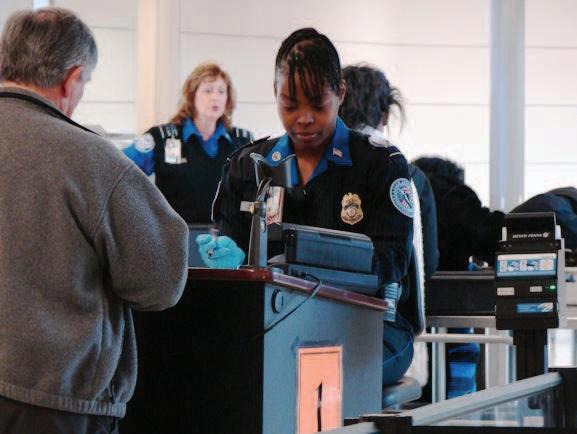
As the partial shutdown of the federal government forced by President Trump continues, TSA agents at St. Louis Lambert International Airport aren’t getting paid. Neither are the air traffic controllers in the tower, the U.S. attorneys in the Eagleton Federal Building, FBI agents, the Coast Guardsmen who patrol the Mississippi, nor the IRS employees who process tax forms and refunds.
Section 8 housing landlords have been getting letters from HUD asking them not to evict low-income tenants if the federal subsidy payments stop. Cleanup of toxic waste at EPA Superfund sites has stopped.
The Gateway Arch is closed. And if the shutdown, already the longest in history, drags on, the pain will get worse. School breakfast and lunch programs for low-income kids run out of
money in February. Farmers whose loans are delayed won’t be able to plant crops on time. After January 18, federal courts will be able to hear only the most urgent criminal cases.
But to Trump and the wealthy right-wing extremists he’s appointed to head many federal agencies, none of that matters. To them, government is the problem, and shutting down big chunks of the federal
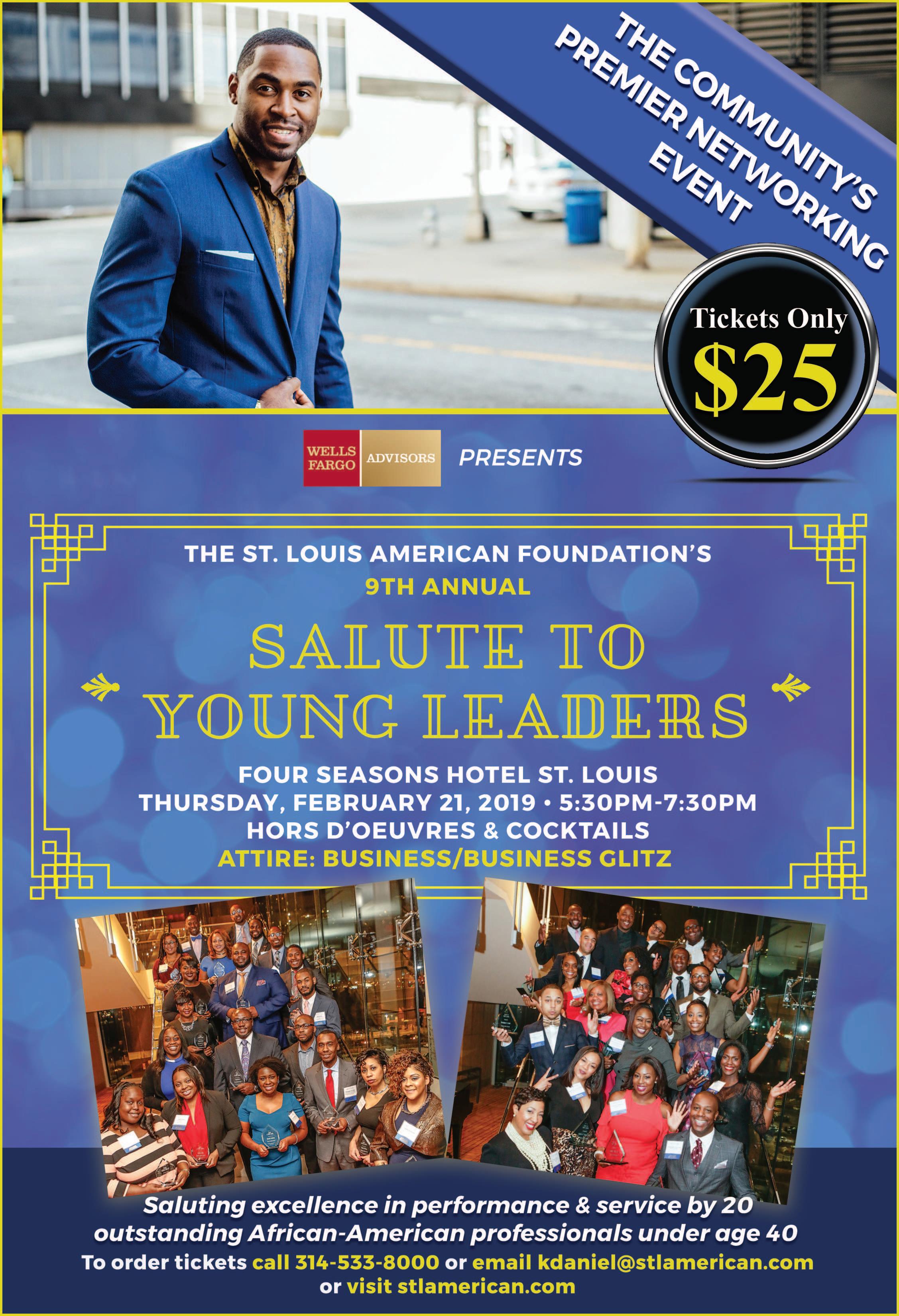
of business doing whatever it wants. Government takes money from the virtuous rich and gives it to those they deem to be moral failures, like kids whose only get hot meals at school. Government supports the takers, like single moms trying to make ends meet, by taking from the makers, like CEOs. Shut it down? Why the hell not?
Contempt for government, the work it does, and the people it serves is a pretty standard part of right-wing discourse. But in this case, the reason the government is partly closed also fits their ideology like a glove.
government gets part of the problem out of the way.
The Environmental Protection Agency is closed.
The head of the EPA is a former coal industry lobbyist.
The Interior Department is closed. Its former director had to quit in December over shady land deals that he still might be prosecuted over. The new head of Interior is an oil drilling lobbyist. The Food and Drug Administration is shut down.
The FDA’s head once wrote that Medicaid is worse than having no insurance at all. The Agriculture Department, where Donna Rogers works, is closed.
The Secretary of Agriculture is an ex-Georgia governor who’s praised the Confederacy and has spent his career raking in donations from agribusiness.
The pattern’s pretty clear: find a government agency, then find a white guy who hates everything that agency does to run it. Trump and his rich minions are contemptuous of government because government gets in the way
Trump’s mythical wall isn’t about immigration, or security, or any border crisis, since there isn’t any. The wall is all about the biggest single thing that put Trump in the White House—fear. The same bug-eyed fear of an America growing browner every year that led Trump to claim Barack Obama wasn’t born in the United States is what the wall is all about. Trump’s wall is a metaphor made flesh, the desire for America as a white walledoff ethnostate cast in concrete, racism made of barbed wire. Trump isn’t fighting for a real wall. He’s fighting for an idea, the “blood and soil” ideal of the Charlottesville thugs, the white nationalism of the Republican Party, the use of his regime’s power to slow the demographic math that will make white Americans less than 50 percent of the population within two decades. And that’s why he and his Fox News and talk radio blowhards are so dug in. It’s why they’re indifferent to 800,000 Americans going without paychecks, and to millions of Americans cut off from the services they provide. They want the wall less than they want the idea of the wall. The mortar holding that idea together is white supremacy. That’s why this shutdown could drag on. And hardworking federal employees are just so much collateral damage.
Donna Rogers pledged an oath to the United States. So did Donald Trump. But only one of them meant it. Charles Jaco is a journalist, author, and activist. Follow him on Twitter at @ charlesjaco1.

JANUARY 17 – 23, 2019
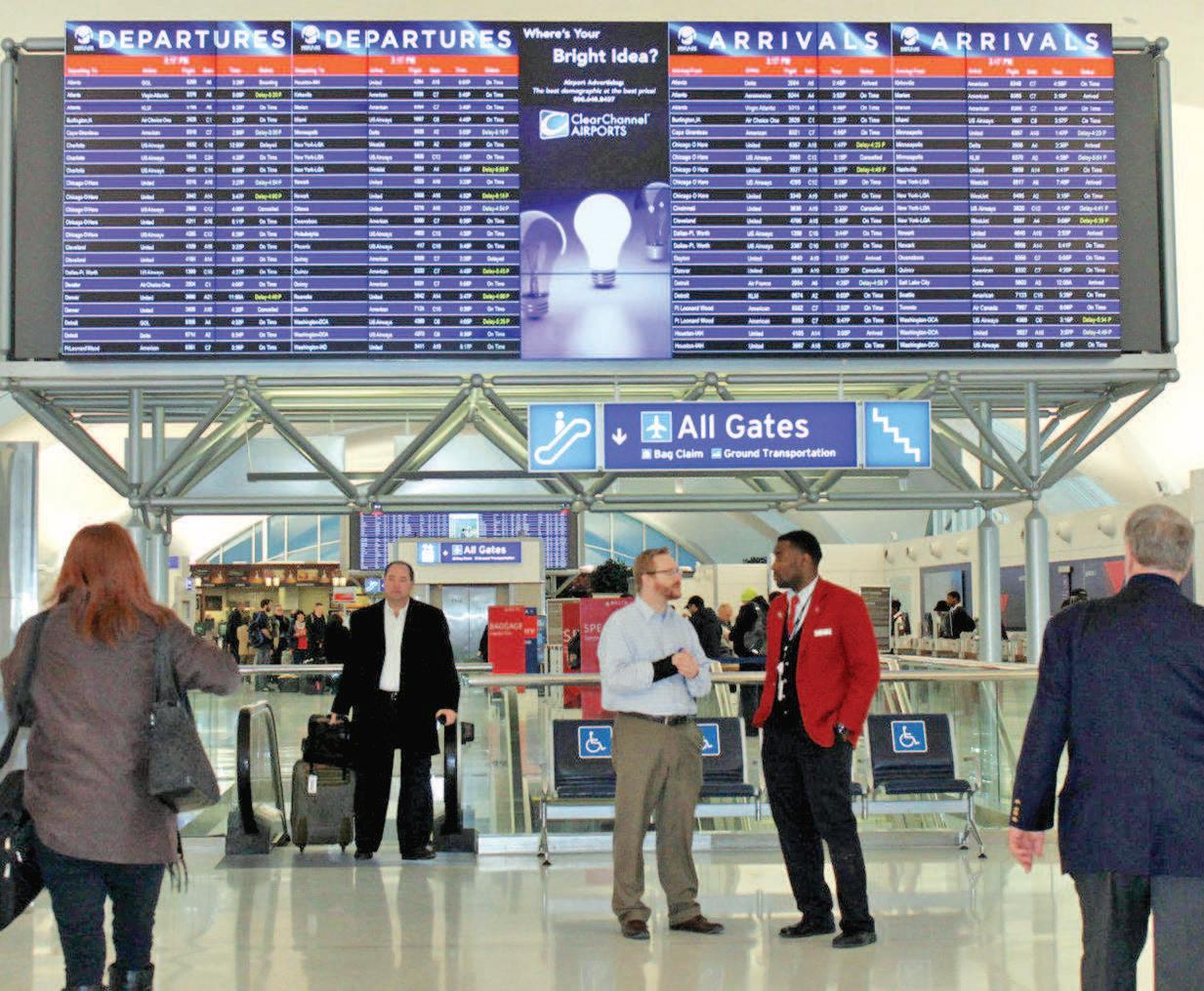
Some St. Louis aldermen claim they do not have answers to many questions about the airport-privatization exploration that is underway.
By Melody Walker Of St. Louis Public Radio
Several members of the city’s Transportation and Commerce Committee say they feel they have been kept in the dark when it comes to details on the Airport Working Group’s progress.
Two members of the group attended the Transportation and Commerce Committee meeting in City Hall on January 10 to deliver an update on the work completed so far by the large cadre of consultants who launched the airport privatization exploration process in August 2018.
The city’s budget director and chair of the Airport Working Group, Paul Payne, presented a two-page document that contained bulletpointed summaries of tasks completed or to be completed by various “work streams.”
“We’ve been left in the dark,” said Alderman
By William F. Tate
n Financial models projecting airport budgets up to 40 years in the future, under city control versus a publicprivate lease, are being created.
John Collins-Muhammad, D-21st Ward. “This update is the most confusing document in the world.”
Payne said he had presented the same document at a meeting in November to the combined working group and consultants.
“These sheets they gave us were so vague,” said Alderman Joe Vaccaro, D-23rd Ward. “It’s like giving a headline to a story without doing the story.”
Payne told the Transportation Committee that the exploration process is complex and is in the early stages. It is expected to take a total of 18 months.
Consultants and the working group are in the process of compiling a complete review of the airport’s operations and finances. Financial models projecting airport budgets up to 40 years in the future, under city control versus a publicprivate lease, are being created. This work is a prerequisite to seeking proposals from companies interested in the lease.
LeJuan Strickland, a communications consultant who is managing community outreach for the FLY314 group, provided an update on his group’s activities. FLY314 is the organization, funded by billionaire Rex Sinquefield, that is
See AIRPORT, B6
For The St. Louis American
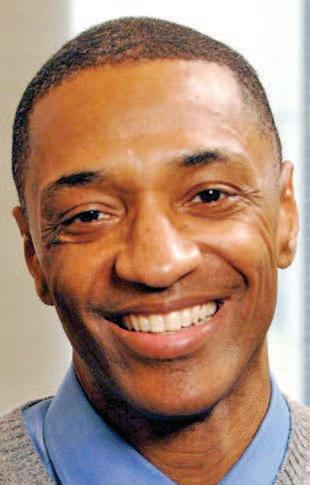
William Tate
Part of a year-long series, presented by The American and the Brown School at Washington University, about changing the narratives and outcomes of young black males in St. Louis. I attended a Catholic college preparatory high school in Chicago. Having an interest in pursuing a major related to science, engineering, technology, and mathematics (STEM) in college, in my senior year in high school I signed up for a section of physics taught by a college professor spending his academic leave at our high school. During the first week of class, a guidance
n The need to secure the highestquality STEM education is essential for the African-American community in St. Louis.
counselor interrupted class and called me and two other classmates out to the hallway. He informed us that we were not qualified for this section of physics. And thus, we were being transferred to a new section of physics. He argued that the new section offered a more appropriate cognitive demand and less challenging content. Our counselor contended this new section better aligned with the skills and background of the three black teenagers listening to him. Instead of engaging the discussion of physics happening on the other side of the door,
we faced a lecture about our lack of intellectual capacity.
Stunned by his action but far from surprised in light of the prior three years, we each made a case for staying in the class. Our grades in prior science courses reflected a seriousness of purpose. We recited our ACT scores as independent validation. He relented and sent us back to class. “We will be watching,” he blurted.
All three us played for the school’s basketball team. We made a pact never to miss physics recitation or after-school sessions, even if the sessions conflicted with basketball practice. This shocked our coach, who served as a guidance counselor as well. We suffered in access to court time. However, in our minds the competition shifted from hoops and beating other schools to sharping our thoughts and scientific insight. Each of us earned science- and math-
See DIVERSITY, B2

Judge Robin Ransom was appointed to the Missouri Court of Appeals, Eastern District by Governor Mike Parson. In 2018, she was elected the first female AfricanAmerican as the presiding judge for the 22nd Judicial Circuit, where she was appointed in 2008. Formerly she was Family Court commissioner for St. Louis County Family Court. She will succeed Judge Lisa S. Van Amburg, who retired in August.

Javier R. Duren is now working as a Baseball Operations analyst for the St. Louis Cardinals. After graduating from Yale University, he took his talents across the globe to play professional basketball. Previously he was a gifted scholar and star athlete who graduated from Oakville High School. He also serves as a male mentor, leader and deacon at his church in O’Fallon, Illinois.
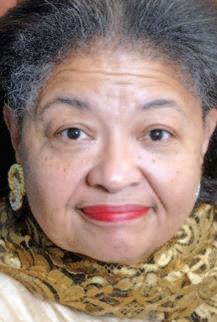
Cecilia Nadal will receive the Missouri Arts Award for Arts Leadership. As founder of Gitana Productions, she uses music, drama and global education to bring diverse members of the St. Louis region together through crosscultural engagement. Nadal said, “It is important that the public see how it is possible for an African-American producer to bring the world to St. Louis while also bringing diverse segments of the community together.”
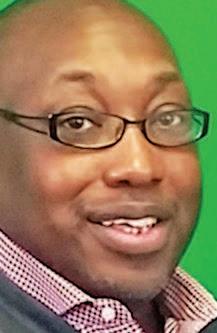
David Beckford has moved his marketing media business Dynasty Television LLC to his new home in Minnesota. He owns 17 dashboards, has 214 social media channels connected to his Lately account, and has scheduled over 21,000 content posts to be posted through Lately in the coming season. He is helping media affiliates in St Louis and nationwide reach millions of subscribers and potential clients.

Dawna Wharton joined the Normandy Schools Collaborative as its new Career and College coordinator. In this newly created role, she will serve as a liaison with local businesses, universities and other agencies to help establish and coordinate post-secondary opportunities such as apprenticeships, internships and other career programs for Normandy students. Most recently she worked as a Career & Technical Education specialist for St. Louis Public Schools.

William Burton Jr. received a Lifetime Achievement award and grant from Portfolio Gallery and Educational Center for continued pursuit of greatness as artist and art instruction. A 1985 graduate of Central Visual and Performing Arts High School, he specializes in murals, canvas paintings, pyrography, illustrations, and airbrushing. The award is made possible by Midwest Regional Banks sponsorship of Portfolio’s 2019 “All Colors” Invitational scheduled for later this year.
On the move? Congratulations! Send your good professional news and a color headshot to cking@stlamerican. com
American staff
Aspiring arts administrators have until February 2 to apply for a new 10-week paid summer fellowship program.
The Gyo Obata Fellowship, presented by the Regional Arts Commission of St. Louis (RAC) and the Gateway Foundation, will provide a minimum of 10 college students with a hands-on introduction to nonprofit arts administration in St. Louis City and County. Its goal is to bring more diversity to the field of arts administration in the St. Louis region.
Fellowships will be open to
students currently enrolled in any bachelor’s degree-seeking program of an accredited college or university in the greater St. Louis area. Fellowships also are open to St. Louis city or county residents who are enrolled in an accredited college or university outside of St. Louis. Students must be entering their third or fourth year of undergraduate studies or have completed at least 60 credit hours.
The program will match undergraduate students from underrepresented backgrounds with host nonprofit arts organizations that will guide their personal and professional

n “We are pleased to partner with the Gateway Foundation to bring more opportunities to students who have been traditionally underrepresented in our field.”
– Felicia Shaw, RAC
development throughout the summer.
“Promoting and preserving cultural diversity is central to our mission at RAC, and we are pleased to partner with the Gateway Foundation to bring
more opportunities to students who have been traditionally underrepresented in our field,” said Felicia Shaw, executive director of RAC.
“The program joins a growing number of programs
across the country that opens doors to viable careers in the arts for diverse young people.”
The program was conceived in response to findings from EVOKE, a community cultural visioning process initiated by RAC, that identified the need for greater diversity in the arts as a regional priority.
The Gyo Obata Fellowship is modeled after three longrunning and highly successful programs of the Arts and Business Council of New York; the Los Angeles County Arts Fellowship Program; and the Getty Foundation Multicultural Fellowship Program.
The fellowship’s
namesake, Gyo Obata, earned his bachelor’s degree in architecture from Washington University in St. Louis and later co-founded the global architectural firm HOK. He contributed to several noteworthy projects including the McDonnell Planetarium at the Saint Louis Science Center, the National Air and Space Museum in Washington D.C., and the Japanese-American National Museum in Los Angeles.
The inaugural 2019 program begins June 3 and runs through August 8. For more information, visit www.racstl. org.
Better Business Bureau
As 2019 begins, Better Business Bureau (BBB) has developed 10 resolutions that can help you fight scammers, prevent identity theft and find trustworthy businesses and charities in the coming year.
“Consumers can protect themselves from fraud by knowing the red flags of common scams, researching businesses before they buy and getting every contract in writing,” said Michelle L. Corey, BBB president and CEO. “BBB Business Profiles and BBB Charity Reviews offer verified information that is available 24/7 on the BBB website. The website also has tips to help consumers with many common transactions.” BBB Scam Tracker is a great tool for reporting scams or finding out whether that email, text or phone call you got claiming to be from the IRS or trying to collect a debt was legitimate or a scam. More than 44,000 scam reports have been filed nationwide since BBB Scam Tracker came online with losses totaling more than $2 billion. BBB provides the tool to help consumers track scams that are occurring in their regions. The following resolutions can help consumers have a safe, fraud-free 2019: Check a business out with BBB before you buy. Nearly 400,000 businesses meet BBB Standards of Trust and are qualified to use an Accredited Business seal on their websites and at business locations. Visit bbb.org to find
BBB Business Profiles for 5.3 million businesses across North America.
Be skeptical if you get a call from someone claiming to be from the IRS. The IRS doesn’t call people or email them to inform them of taxes or penalties due nor does it threaten to arrest or sue taxpayers. Their initial contact always is by letter. Always read the fine print – especially with “free” trial offers. Thousands of consumers have complained to BBB after signing up for a “free” trial offer online that resulted in repeated charges to their credit or debit cards, sometimes amounting to hundreds of dollars every month. Read the terms and conditions of any “free” trial offer before handing over credit
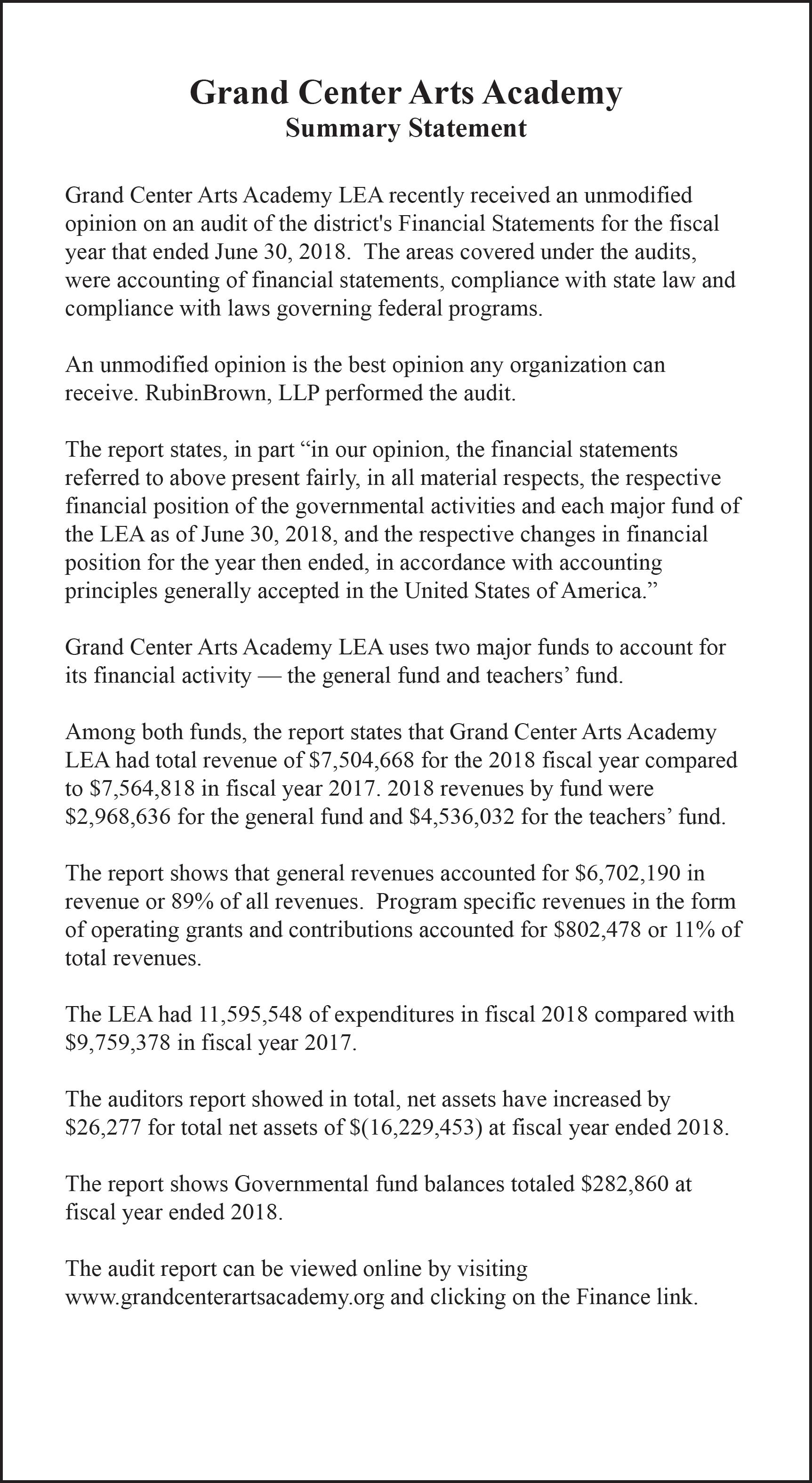
or debit card numbers. BBB recently published an in-depth investigative study on these deceptive free trial offers. Keep your computer safe. Install anti-virus software on your computer and check regularly for software and operating system updates and patches. Don’t open attachments or click on links in emails unless you can confirm the email came from someone you trust. BBB recently issued an in-depth investigative study on tech support scams. Never wire money to someone you don’t know. Many scams require that the victim wire money back to the scammers. Scammers know tracking money sent via MoneyGram, Western Union or Green Dot MoneyPak is extremely difficult. Once you’ve wired money, it’s nearly impossible to get it back. This is a common tactic
continued from page B1
related degrees during our undergraduate careers. Two in our group attained the highest level of education in the form of PhD degrees. In contrast to my high school counselor’s lack of support, I benefitted from a wonderful dean during my undergraduate years.
Subsequently, three black men served as mentors and advisors during my masters and PhD programs. I remain grateful and at every turn attempt to model their generosity and their firm push to pursue excellence.
The struggle to gain access to a high-quality STEM education prepared me for a life in academic research. However, in this world, the same fight remained but in more nuanced forms.
During the early 1990s, I served on the faculty of the University of Wisconsin at Madison. As was the custom, I presented the early version of a paper to my colleagues. The paper asserted that the use of mathematics and statistics in our democratic society is often linked to an attempt by one group seeking to gain an advantage over another group. Situations are mathematized in order to maximize advantage.
Of course, rarely does the rationale of using numbers suggest the potential for harm to a group. I stated, “For example, hospitals are experimenting with computer systems that can calculate the probability of surviving an illness. Mathematizing the decision to place a patient on life support – under the banner of optimizing system use, minimizing hospital cost, and maximizing profit –could result in discriminatory practice. Does being an African American male lower a patient’s chances of receiving life support services, since comparatively speaking, African American males have shorter life expectancy?”
In addition, I worried
in fake online pet sales; BBB recently published an in-depth investigative study on these puppy scams. Fight identity theft. Shred paper documents that include sensitive financial data and dispose of computers, cell phones and digital data safely.
BBB hosts annual Secure Your ID events nationwide to help you stay safe. Ask BBB for help. File a complaint with BBB if you have a dispute with a business or have been ripped off by a scammer. Don’t give to fraudulent charities. BBB advises consumers to research charities carefully before making a donation. Be wary of appeals that are long on emotion, but short on describing what the charity will do. Consumers can find reports on charities at bbb. org. Fight fake check fraud.
that the use of mathematical modeling minimized the risk of successful challenges to the decision-making process. I asked, “How many students leave school with enough knowledge and practice to challenge the use of mathematics in society.”
My Wisconsin colleagues viewed my perspective as wrongheaded and characterized it as radical rhetoric. One colleague remarked, “This could never happen in the United States.” It was disheartening to receive this critique. Fortunately, I learned from my earlier high school experience to push on. I completed the article and published it. Since its publication in 1994, the article has resonated on and off in my thoughts as the digital revolution evolved.
My mind turned to the article again after reading Virginia Eubanks’ book “Automating Inequality.”
She presents the finding of a case study describing how high-tech sorting systems monitor and police the poor in human services such as TANF, Supplemental Nutrition Assistance Program, and Medicaid in Indiana; homeless services in Los Angeles; and child welfare in Allegany County, Pennsylvania. Computer algorithms negatively influenced lives across these diverse geographic regions.
Technology’s influence extends to the criminal justice system. As Michelle Alexander noted in the New York Times, a frightening program of “e-carceration” policies in California, New Jersey, and New York use mathematical models to generate risk assessment for judges to inform their decisions related to release from the criminal justice system. She stated, “Colorblind on the surface… they are based on factors that not only highly correlated with race and class, but also significantly influenced by pervasive bias in the criminal justice system.”
Thanks to advances in printing technology, scammers have the ability to create professionallooking phony checks. Be extremely wary of checks that come with claims that you’ve won a lottery, are eligible for a government grant or have landed a job as a secret shopper. These are almost always scams. BBB recently issued an in-depth investigative study on fake checks. Get everything in writing. Don’t just take a company’s word for it. Get verbal agreements in writing to limit miscommunication and misunderstandings between what you expect and what the business delivers. Consumers can learn how to protect themselves at www. bbb.org/protectyourself. Find BBB Business Profiles or BBB Charity Reviews by calling 888-996-3887 or by going online to bbb.org.
Legislative bodies influence our health, human services, and criminal justice systems. Today, computer algorithms represent the front line of the new tools in the gerrymandering wars. The value of a vote shaped by mathematical modeling is the information age version of the poll tax and literacy test. Civil rights veteran Robert Moses argued that math and science literacy represents the content required for citizenship. He is correct. Based on my experiences, I offer two recommendations.
First, the need to secure the highest-quality STEM education is essential for the African-American community in St. Louis. Parents and community leaders should seek to understand fully the quality factors associated with regional education and double down support to build our regional capacity in STEM education.
Second, while building individual capacity in STEM attainment, a need exists for a parallel effort to monitor and to inform the design of the algorithms guiding our civic institutions. An algorithmbased society means math modeling touches many aspects of our lives. While vindicated, the need to face this monumental task moves me to continue the fight. I know they will be watching.
William F. Tate is the Edward Mallinckrodt Distinguished University Professor and dean and vice provost for Graduate Education at Washington University in St. Louis. Follow him at @DeanWFTate.
“Homegrown Black Males” is a partnership between HomeGrown STL at the Brown School of Social Work at Washington University in St. Louis and The St. Louis American, edited by Sean Joe, Benjamin E. Youngdahl Professor and associate dean at the Brown School, and Chris King, managing editor of The American, in memory of Michael Brown.
n
— Philadelphia Eagles wide receiver Alshon
Jeffrey
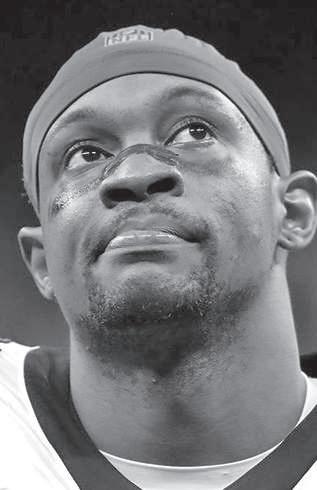
Richard Chaifetz thinks the NBA could migrate to St. Louis
~ See ‘Sports Eye’ page B4 ~
The Belleville West Maroons enter the week with a 17-0 and a No. 1 ranking in the latest IHSA Class 4A state polls. This is on top of winning a state championship last season.
Those gaudy marks will be put to the test this weekend as they will participate in the prestigious Bass Pro Tournament of Champions in Springfield, Missouri.
The Tournament of Champions is annually one of the top in-season tournaments in the country and the local fans in the Ozark region sell out the J.Q.H. Arena at Missouri State University every night.
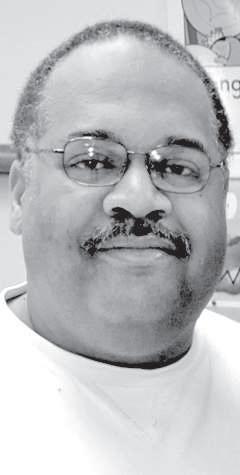
Earl Austin Jr.
Belleville West will face Shadow Mountain (Arizona) in the first round on Thursday night at 9 p.m. The field is also littered with national powerhouse programs such as Memphis East (Tennessee), McEachern (Georgia), Rainier Beach (Washington) and Sunrise Christian (Kansas). Rounding out the field are local teams Springfield Parkview and Springfield Catholic.
The Maroons are led by 6’7” AllState performer E.J. Liddell, who is averaging 22.2 points, 9.8 rebounds and nearly four blocks a game. Senior point guard Lawrence Brazil III is averaging 13 points and four assists a game while providing backcourt leadership. Will Shumpert, Keith Randolph, Jr. and Jaylin Mosby are all seniors who have been vital to the team’s success.
The championship game is set for Saturday at 9 p.m.
MLK Events In area next week
There will be two excellent events being held next Monday on Dr. Martin Luther King, Jr’s holiday. St. Louis University High will be the host of the Remembering the Dream Classic, which features four boys’ games. In the first game, Bishop DuBourg will take on Riverview Gardens. That game will be followed by Cahokia vs Ritenour; host SLUH vs. University City and Soldan vs. Hazelwood East.
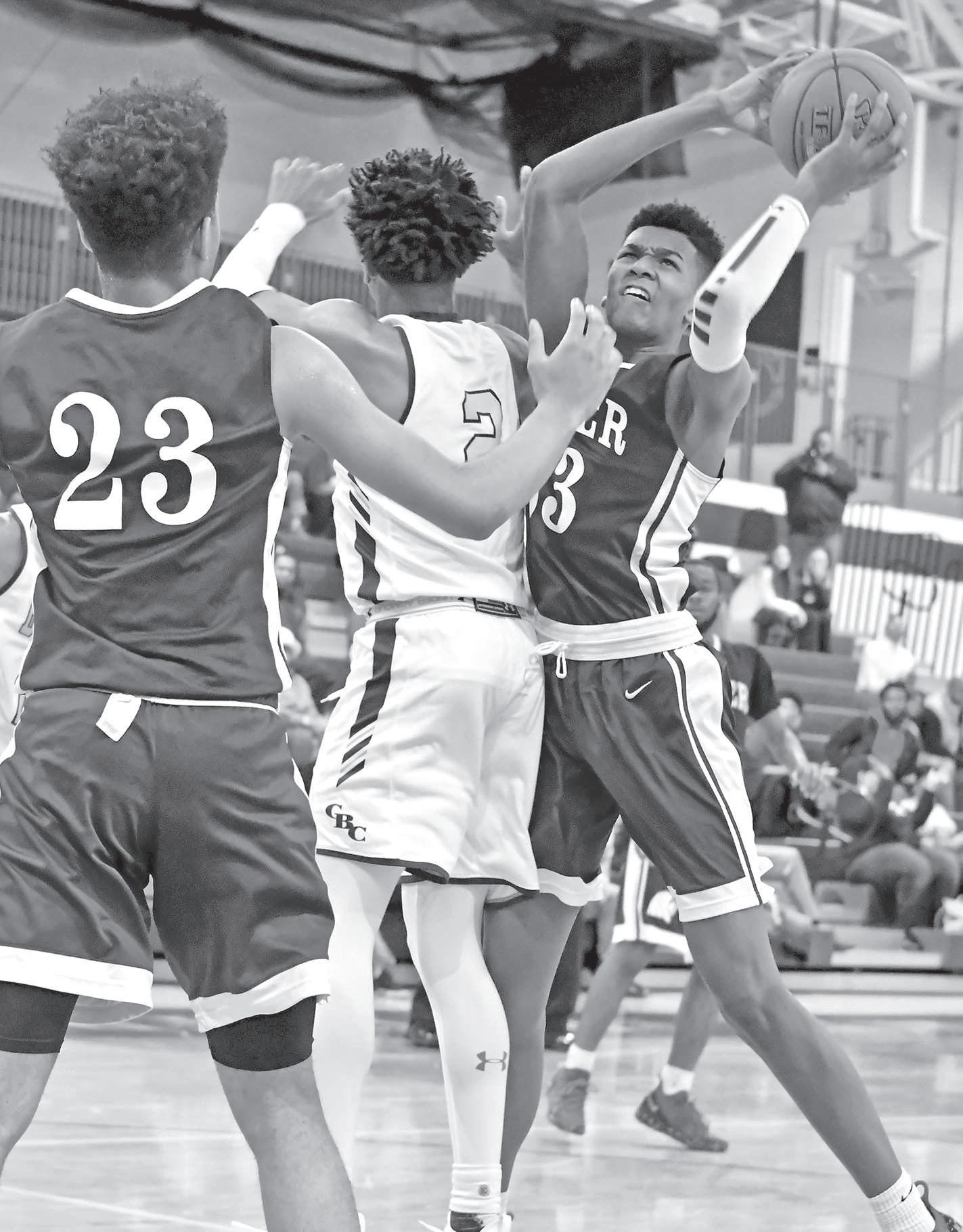
Last season, the Boston Celtics came within one game of reaching the NBA Finals. Despite losing Kyrie Irving and Gordon Hayward to injury, Al Horford Jayson Tatum Jalen Brown and Terry Rozier nearly shocked the world by pushing LeBron James and the Cleveland Cavaliers to the brink of elimination in the Eastern Conference Finals. When James packed his bags Thom Browne man purse for sunny Los Angeles, nearly everyone expected the baton of Eastern Conference dominance to be handed to the Celtics. If the team could accomplish so much without its high-profile stars, it would be perfectly reasonable to assume the Celtics would be even better at full strength. Right?
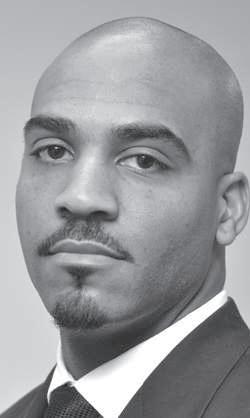
Wrong! The return of Irving and Hayward has caused major chemistry issues for the boys in Beantown. Hayward is strug-
gling to find consistency after recovering from a gruesome ankle injury. Statistically, Irving is playing well. However, it’s clear that Uncle Drew arrived in Boston expecting to be the man. Unfortunately for him, Boston seems to play best when whoever the open man is allowed to be the man During last season’s impressive postseason run, Horford was the guy at times. In other moments, it was Tatum who balled out. “Scary Terry” (Rozier) was birthed in the playoffs. Marcus Smart had his share of big moments, as did Brown. It was almost as if whichever player was hot in any given game, or any given quarter, was allowed to cook. This season, every player is trying to cook at the same time, but there is only one pot. More importantly, there is only one basketball. That dueling dynamic has caused some uncomfortable moments for the 25-18 (good enough for fifth in
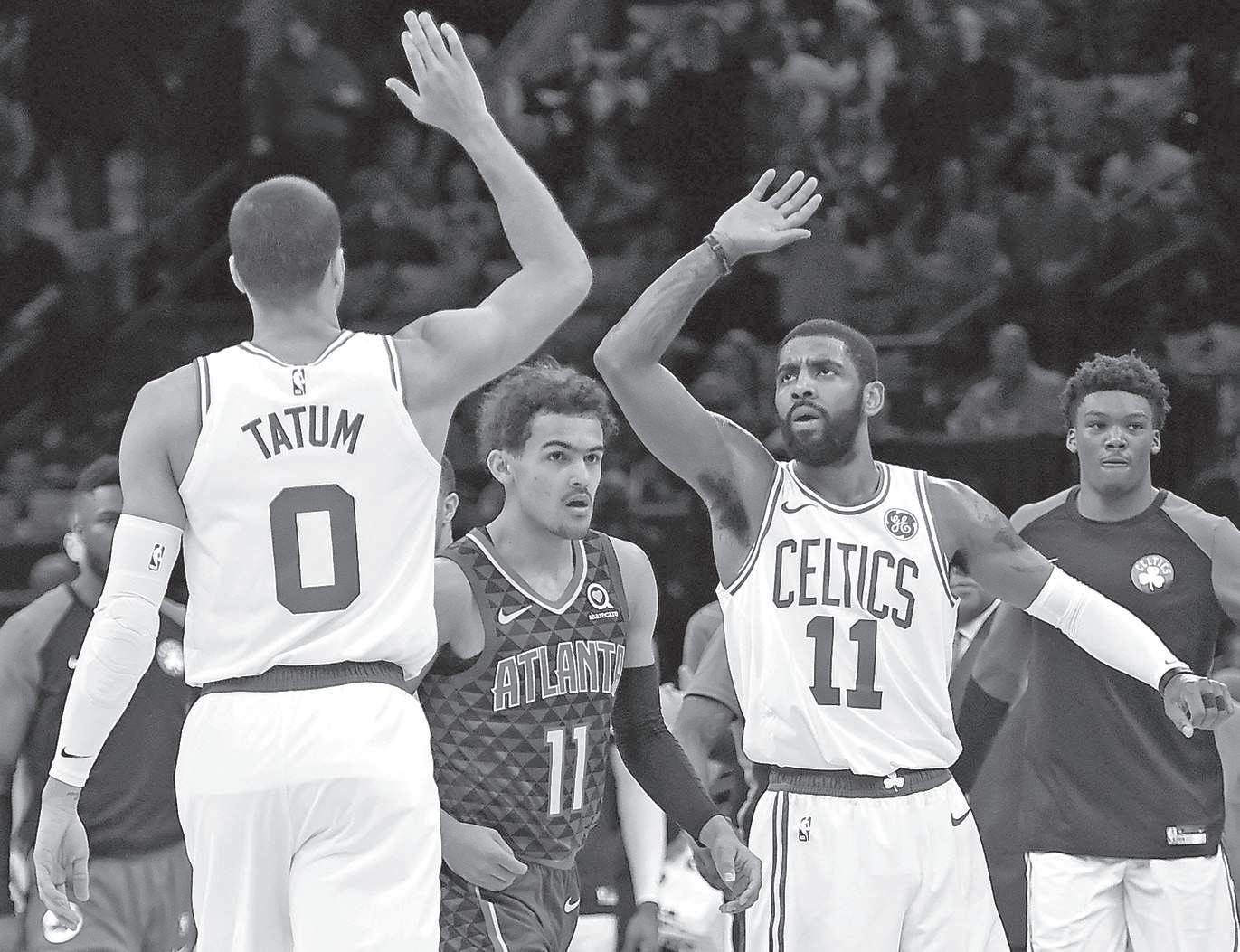
With Alvin A. Reid
Most St. Louisans had no idea who Richard Chaifetz is until he helped privately finance the arena on the St. Louis University campus with a generous $12 million donation. It now holds his name.
Financially down-and-out, the Jesuits of SLU did not end Chaifetz’ pursuit of a business degree as an undergraduate student. His first degree was a major step in his founding Chicago-based ComPsych Corp., becoming a billionaire and paying his former school back in a big way.
The SLU Business School is now named for the Chicago area resident and his wife, Jill, after they bestowed a $15 million gift toward the school.
In an interview with the St. Louis Business Journal last week, Chaifetz doubled down on a statement he made in September and a recent Twitter post regarding a possible NBA franchise in St. Louis.
is the Enterprise Center. St. Louis Blues owner Tom Stillman could use another fulltime tenant in the building, and the city remains in desperate need of more events downtown between baseball seasons. It can seat more than 20,000 for basketball games, which was proven during SLU’s basketball heyday under the late Charlie Spoonhour. This is larger than most NBA venues.
I suggested on Donnybrook that the team could play in Chaifetz Arena, but the seating capacity of 10,600 is too small and corporate suites would be limited.
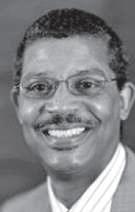
Trust me, the Blues and NBA team could work out a schedule acceptable to both ownership groups.
Would the NBA expand?
“I’d love to be involved with a team in St. Louis in the NBA. It’d be great for the city,” Chaifetz said.
Ten years ago, Chaifetz’ dream of an NBA franchise in St. Louis would have brought forth laughter. But the Rams relocated to Los Angeles and the NBA is now being touted as the American sports league most in touch with younger fans, social media and minority television audiences.
It’s a new day for the NBA and despite the many naysayers, I think a team in St. Louis could be a success.
Where would the team play?
The natural and best answer
I seriously doubt that. If it did, Seattle would be first in line for a team. Then maybe Las Vegas. Chaifetz’ best chance at helping land a team would involve purchasing a struggling New Orleans Pelicans team and relocating it to St. Louis. The Memphis Grizzlies could also be a target.
Last March, SBNation NBA correspondent Tom Ziller wrote, “The New Orleans Pelicans only exist but for the grace of two people: former NBA commissioner David Stern and franchise majority owner Tom Benson.”
“Benson passed away (in March) at the age of 90. Stern retired four years ago. Who will save the New Orleans Pelicans now?”
Stern convinced NBA owners to financially back the team to save it from moving.


Benson’s widow has not said she plans to sell the team and its value – like NBA ratings and attendance – keeps going up.
But the 2012 deal that Stern brokered is aging and the Pelicans’ lease in New Orleans Arena expires in 2024. Yes, St. Louis could benefit from a sports franchise lease deal.
Talk about “full circle.”
“These long-term leases typically aren’t iron-clad: there are penalties for teams who leave early, and the local or state governments who hold those leases may choose to negotiate a settlement instead of subjecting it all to expensive litigation,” Ziller wrote.
Would fans support a team?
Let’s be honest. The question really is, “Would white people support the team?”
White fans, especially in the St, Louis area, would have to show up for games – just like in every other NBA city. But the NBA is not as desperate for white fans as other leagues, because of the support it gets from African Americans and younger Americans.
According to statistics compiled by Brandon Gaille on his Small Business and Marketing Advice website, “The NBA is unique in U.S. professional sports because it has the youngest overall audience. It also has

The St. Louis Hawks enjoyed great success during their years here. The Hawks reached the NBA championship four times and their opponent each time was the Boston Celtics. The Hawks one just one of those matchups, that being in 1958.
tially Major League Soccer and the XFL. In his opinion, the NBA’s developmental “G League,” could work here because its crowds would be great in Chaifetz Arena. I’m a believer. I would also financially support the team by purchasing at least two partial season tickets. I haven’t done that since I lived in the Washington, D.C. area and joined friends in buying two season tickets. Why? To see the Lakers, of course.
What about the team name?
I’ve seen a flock of White Pelicans in this area. They migrate north between March and June and some stop here along the confluence of the Mississippi and Missouri Rivers to feed and rest. They can be spotted near the Great River Road between Alton and Grafton, Illinois, too. With that being said, let’s come up with a new name, OK?
The Reid Roundup
Since backcourt mate
the higher share of AfricanAmericans who regularly view its games.
“It is the only professional sport in the US where people of a Caucasian ancestry are outnumbered for total viewership.”
According to Gaille, 45 percent of NBA fans that regularly watch games are under the age of 35 – the same percentage of African-American viewers, which is 3 times higher than college basketball or the NFL.
In addition, 70 percent of NBA fans are male; 62 percent are 18-54; 53 percent of NBA fans make between $40-$75,000 per year; At 13 percent, the NBA is second only to MLS when it comes to attracting younger viewers in the 2-17 age demographic; Just 1 in 4 NBA fans is above the age of 55.
In other words, a lot of young people and people of color are into the NBA. This would draw fans to games that do not routinely attend St. Louis Cardinals or Blues games.
How many fans will it take?
The top three teams in 201819 attendance, respectively, are the Philadelphia 76ers (20,385), Chicago Bulls (20,016) and Dallas Mavericks (19,856). The three lowest franchises in attendance (out of 30 teams) are the Brooklyn Nets (14,306), Phoenix Suns (14,999) and Atlanta Hawks (14,982).
The Pelicans rank 26th with an average attendance of 15,546, by the way.
The average attendance for all teams can be found at http:// www.espn.com/nba/attendance.
A St. Louis team would certainly sell out when Jayson Tatum and the Boston Celtics, Bradley Beal and the Washington Wizards, LeBron
James and the L.A. Lakers and the Golden State Warriors visit. The NBA is a star-driven league and its fans are active in social media and fantasy leagues. Every home game would be an event.
Bulls fans would flock to St. Louis for games, and an old rivalry that left when the Hawks went to Atlanta would be revisited. Who wouldn’t want to see James Harden and the Houston Rockets?
Would there be corporate support?
David Steward, chairman and founder of World Wide Technology, the most successful African-American owned company in America, is a minority owner of the Blues. My guess is that he, and his company, would be in.
There are other corporations with the resources to back the team, they just must decide to do so. It isn’t a matter of supporting either the Cardinals, Blues or possible MLS expansion franchise – it comes down to whether being part of the fastest growing sports league in America – one that is conquering the world in basketball popularity – is worth the investment.
I think it is.
Of course, there are many learned people that doubt the NBA could work here. Ray Hartmann, one of my Donnybrook co-panelists, Riverfront Times founder and quite the liberal said on the show last that St. Louis can’t support three professional sports franchises. His view isn’t tainted by race.
Patrick Rishe, director of the sports business program at Washington University told KMOX, “St. Louis is pretty full with baseball, hockey, poten-
John Wall was lost for the season, Bradley Beal and the Washington Wizards are three games over .500 and playing better basketball … Beal tuned his best game as a pro in a 140-138 double overtime loss to Toronto last Sunday with 43 points, 15 assists, 10 rebounds, three steals and two blocks. ESPN says he is the second player to record at least 40-15-10 in one season multiple times in a season. Beal has done it twice this year. Oscar Robertson did it during the 1961-62 season … The latest Beal trade rumor has him going to the Philadelphia 76es for Ben Simmons … The L.A. Rams haters were out in full force on radio and social media following the 30-22 divisional playoff victory over the Dallas Cowboys. Just imagine if the Rams win the NFC Championship Game at New Orleans … Words cannot describe how much I want Patrick Mahomes and the Kansas City Chiefs to beat Tom Brady and the New England Patriots in the AFC Championship Game on Sunday … It is looking like Manny Machado is going to join the Chicago White Sox and I already have two tickets to Opening Day at Comiskey Park … I’ll be writing more about this later, but keep Chris Duncan in your prayers as he battles brain cancer in California. The first few complete shows he did at 101 ESPN were with me, when I was filling in for a regular host.
Alvin A. Reid was honored as the 2017 “Best Sports Columnist – Weeklies” in the Missouri Press Association’s Better Newspaper Contest and is a New York Times contributor. He is a panelist on the Nine Network program, Donnybrook, a weekly contributor to “The Charlie Tuna Show” on KFNS and appears monthly on “The Dave Glover Show” on 97.1 Talk.” His Twitter handle is @aareid1.

Continued from C7
way out of Cleveland specifically because he was tired of being chastised, patronized and living under the shadow of King James.
On one hand, it is expected and even laudable that the Celtics’ veterans would challenge the younger players to give maximum effort. On the other hand, as the team’s star player and point guard, it is his job to take the role of Brother Nature and ensure that everybody eats.
With all the offensive talent Boston possesses, Irving should easily be able to produce double-digit assist numbers instead of the 6.4 he is currently averaging. After all, Irving has the innate ability to break down defenders with his superior handles and get to the basket. He should make a concerted effort to kick it out to open shooters or dump it off to slashers attacking the rim.
When young players get consistent opportunities to make plays on the offensive end, they are much more likely to give extra effort on the defensive side.
Tatum debuts self-lacing kicks
Wednesday night, Jayson Tatum became the first NBA player to wear Nike’s new high-performance, power-lacing basketball kicks in an actual NBA game.
The St. Louis native was chosen to debut the Nike HyperAdapt BB shoes.
The shoes were inspired by the Nike Mag, originally a fictitious shoe from Back to the Future Part II that became a real-life limited edition shoe that released in 2011 and 2016. While the Mag was a collector’s item meant for rec-
Continued from C7
Miller Career Academy will be hosting a two-day, girls’ Martin Luther King event that will be held on Sunday, January 20 and Monday, January 21. The girls’ event features schools from Missouri, Illinois and Alabama. There are three games scheduled for Sunday,

reational and fashion purposes only, the HyperAdapt BB was designed to stand up to the needs of the greatest athletes on the planet.
“Being the first person to wear it is a great opportunity,”
Tatum said in an interview with ESPN’s Nick DePaula
“I didn’t know what to expect,” Tatum said. “Hearing about a shoe with all this technology and no laces, I didn’t know what it was going to look like. It really surprised me. It looked a lot better than I thought it would, and it felt great -- that was most important.”
Being chosen as the first athlete to rock the futuristic
beginning with Hyde Park (Illinois) vs Cardinal Ritter at 1 p.m. Metro east area power Edwardsville will take on Gateway STEM at 2:30 p.m. with Lift for Life taking on Lincoln Prep at 4 p.m.
Host Miller Career Academy kicks off Monday’s action against Huntsville Columbia (Alabama) at 11 a.m. Hyde Park will face Huntsville Lee At 12:30 p.m. with Lincoln Prep taking on East St. Louis at 2 p.m. in the finale, Cardinal
kicks is a good sign for Tatum. It shows that the sneaker juggernaut is willing to invest in building the player’s brand. If the Celtics’ forward continues to blossom into a bona fide NBA superstar, it very likely he could land his own signature show in a few years.
Like self-lacing shoes, Tatum is the future and the future is now.
What’s up with DSJ?
Word around the league is that the Dallas Mavericks are trying to find a trading partner for second-year point guard Dennis Smith Jr. When the team drafted
Ritter will take on twotime Class 3 state champion Strafford.
Tournament make up dates are set
Last weekend’s big snowstorm wreaked havoc on the area basketball schedule, causing the postponement of some tournament championship games.
The makeup dates have been set. Host Whitfield will take on
The 5’10” junior guard led the Rams to a pair on nonconference victories last week.
Brooks scored 18 points and grabbed 13 rebounds in a 45-37 victory over a McCluer North that entered the game with a 10-1 record. She followed up with a game high 23 points in a 53-52 victory over Visitation.

For the season, Brooks is averaging 18.7 points, 8.7 rebounds and 2.7 steals while shooting 54 percent from the field. As a sophomore, she averaged 13.6 points and 6.4 rebounds in helping the Rams to a district championship and a berth in the Class 4 state quarterfinals.

Luka Doncic, it did so with the expectation that pairing Doncic and Smith could lead to a dominant backcourt for years to come. While the two players have seemingly become great friends off the court, they have not yet gelled into a dynamic duo on the court.
Doncic has dazzled in his debut season and has all but locked up the Rookie of the Year honors before the All-Star Break. If averaging 20.2 points, 6.7 rebounds and 5.0 assists is not enough, Doncic has produced more dazzling, highlight-reel moments than any other rookie in recent years.
Doncic’s success has pushed Smith, last year’s darling in
Christian-O’Fallon in the championship game of the Rotating 8 Tournament on Saturday at noon.
St. Francis Borgia will take on St. Dominic in the championship game of the Washington Tournament on Wednesday, January 30 at 8:30 p.m.
The Dallas Mavericks are actively seeking to trade Dennis Smith Jr. (right). Smith and Luka Doncic were expected to form a dynamic duo in the Dallas backcourt. However, Smith has struggled to adapt to a new role as Doncic has developed into a bona fide star faster than expected.
Dallas, to the background. It has also pushed him off the ball.
Though the 6-foot-7 Doncic technically has gained most of his starts at small forward, he is really a true point guard.
Dallas’ attempts to turn Smith into a shooting guard have not worked out well for the Mavericks. According to MavsMoneyBall.com, with Doncic and Smith on the court together, “the Mavericks have a net rating of -5.0, which is not good. More importantly, Doncic and any other combination of Mavericks but Dennis Smith are +3.1.”
Still, Smith Jr. has been
Belleville East Tournament highlights weekend
The Chick-fil-A Classic at Belleville East is a strong late season tournament that brings together top teams from the two-state area.
limited to just 28 games this season due to various injuries. That could help explain his modest averages of 12.6 points, 3.9 assists and 2.6 rebounds per game. Last season, the bouncy Smith averaged 15.2 points, 5.2 assists and 3.8 rebounds as the team’s primary ball handler. It is no secret though that Mavs coach Rick Carlisle is notoriously tough on point guards. It is also apparent that Doncic is the Mavs’ point guard of the future. I do not believe it’s apparent that Smith cannot play the role of being an effective combo guard. It should be expected that such a significant change in roles and ball-handling duties would come with growing pains for a second-year player. The big reason the Mavs may be in a rush to move Smith may be because the team has a legitimate shot to make it to postseason play in what is almost certainly Dirk Notwitzki’s final season in the NBA.
Former Villanova star Jalen Brunson is certain a capable backup point guard for the Mavs. Even with J.J. Barea out for the season with a torn Achilles, this Mavericks has serious depth at point guard. If the Mavs can move Smith for another talented, promising shooting guard or small forward, it might prove to be a win/win for everybody involved. Smith can escape the gigantic shadow of Doncic and the Mavs can free up the logjam in the backcourt. Follow Ishmael and In the Clutch on Twitter @ishcreates. Subscribe to The St. Louis American’s YouTube page to see weekly sports videos starting Ishmael and Melvin Moore at youtube.com/stlamericanvideo.
The featured teams in this year’s event are defending champion Chaminade, Trinity, Alton, Soldan and Champaign Central. The championship game is set for Saturday night at 7:30 p.m.

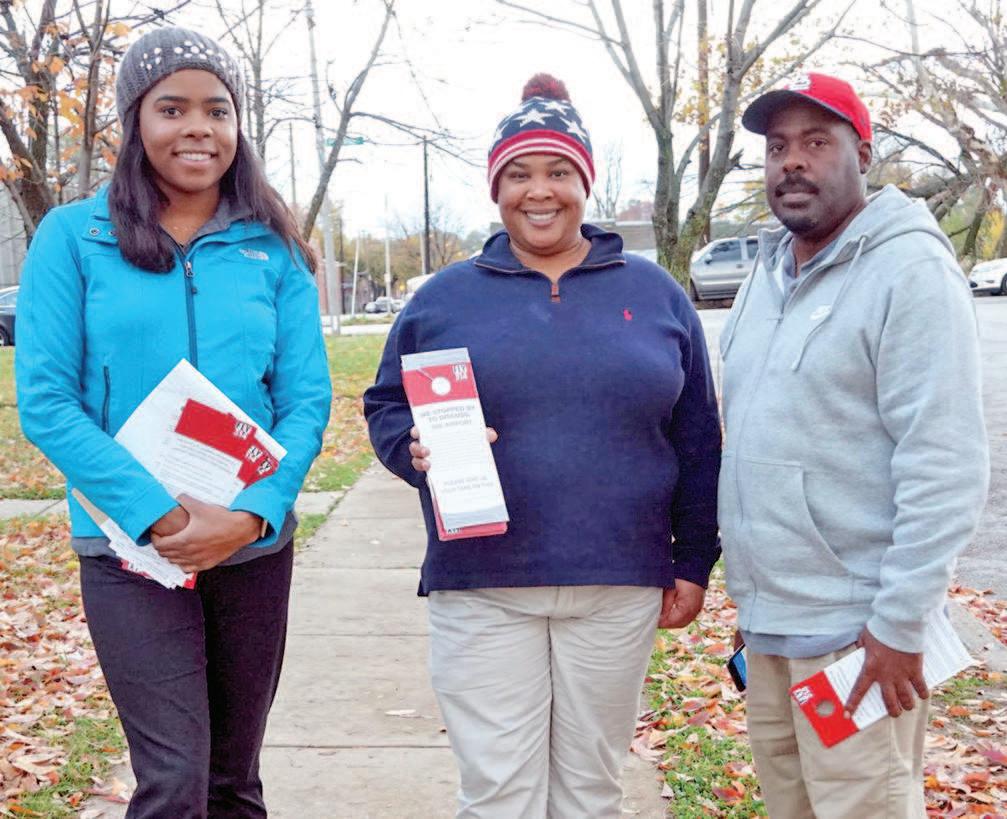
By Roger M. Macon, AAMS
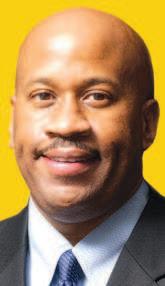

continued from page B1
employing the consultants on behalf of the city.
Strickland reported that canvassers have knocked on 172,000 doors in the city and gathered 16,000 responses to a survey about the airport
Kiara Lewis is coordinating a team of 15 paid workers who fan out across the city, seven days a week. They are conducting a survey about residents’ travel habits — why do they travel, and how do they get there — and opinions of the airport.
“We’re not out here to sway anybody in either direction,” Lewis said in November. “We simply just want to hear what people think about the idea of getting this accomplished or not accomplished.”
There are eight questions on the survey: Have you heard the city wants to lease out the airport? How often did you travel outside the STL area last year? Reason for travel? Vacation, family, business, other. How did you travel: railroad, bus, commercial air, car? How many times did you visit St. Louis Lambert Airport? What grade would you give the airport (A-F)?
Do you believe operations are good at Lambert? Do you believe there is room for improvement at the airport? Lewis noted that many of residents surveyed have not heard about the possible privatization of Lambert. Strickland said the doorto-door operation was almost complete, and that the next phase of the communications plan would involve neighborhood and community meetings.
Information about upcoming informational meetings will be posted on the FLY314 website http://fly314.com.
Co-sponsors of Bill 93 that would require a city-wide vote on any future airportprivatization proposal attended the Transportation Committee meeting. Chair Marlene Davis has not called for a vote on the bill that would send it to the Board of Aldermen.
“It doesn’t look like we’re going to be anywhere close to putting this current bill forward through the committee,” said Alderman Dan Guenther, D-9th Ward. He said the bill’s co-sponsors would bring it back for consideration in the next session.
Follow Melody on Twitter @melodybird.
Reprinted with permission from news.stlpublicradio.org.



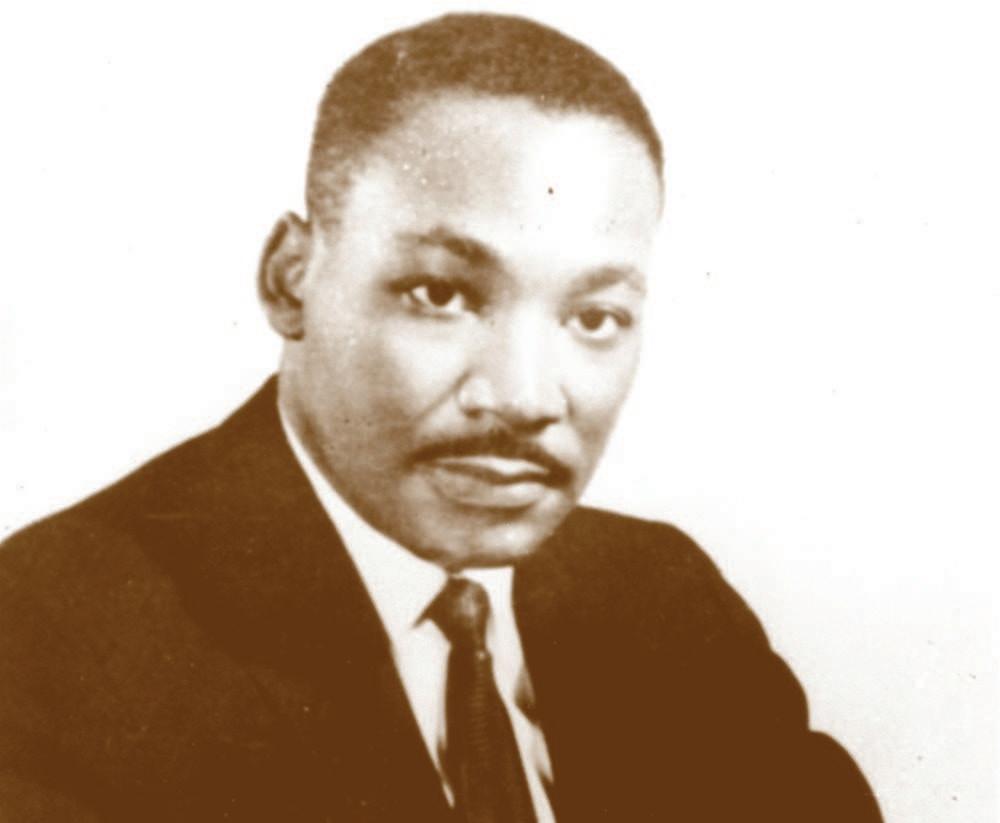
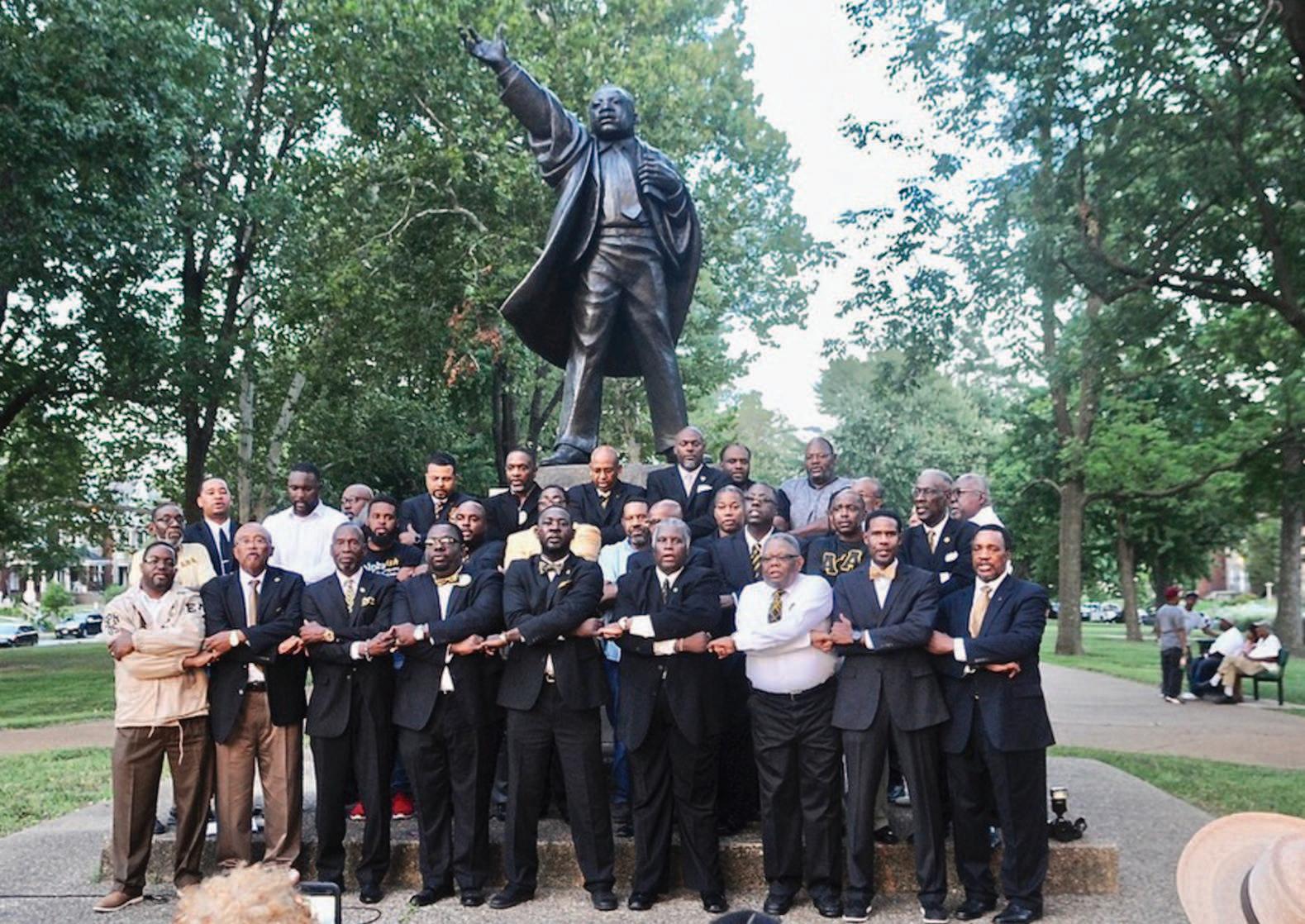
By Rebecca Rivas
Of The St. Louis American
On a Sunday in May 1978, about 500 black and white citizens of St. Louis stood together in Fountain Park – a neighborhood just north of the Central West End – to watch the unveiling of the region’s first statute of Rev. Dr. Martin Luther King Jr. The threat of rain didn’t stop the crowd from gathering and listening to the speakers’ words.
Centennial Christian Church, and Alphas, Ald. Kennedy saw Fountain Park icon refurbished
“The world is a better place to live because of Martin Luther King,” said Rev. Samuel Hylton, then pastor of the Centennial Baptist Church, according to a St. Louis Post-Dispatch article dated May 8, 1978. “This is to help us remember his dream.” (Hylton passed last year at age
91.) The 11-foot bronze statue was sculpted by the late Rudolph Torrini, who was then a professor of fine arts at Fontbonne College and who passed away at 95 in September. In the statue, King stands with his right hand outstretched, as if giving an impassioned speech on civil rights or proclaiming the good news with a stirring sermon. His other hand clutches a book, perhaps the Bible or a book on the U.S. Constitution declaring the equality of men.
Many Americans still lack ‘sanitary, decent housing conditions’ more than 50 years later
By Charlene Crowell For The St. Louis American
Once again on the third Monday in January, much of the nation will mark the anniversary of the death of the late Rev. Dr. Martin Luther King Jr. Countless programs and events will no doubt recall several of his famous speeches from the 1963 March on Washington’s “I Have A Dream” to his “I’ve Been to the Mountaintop” delivered
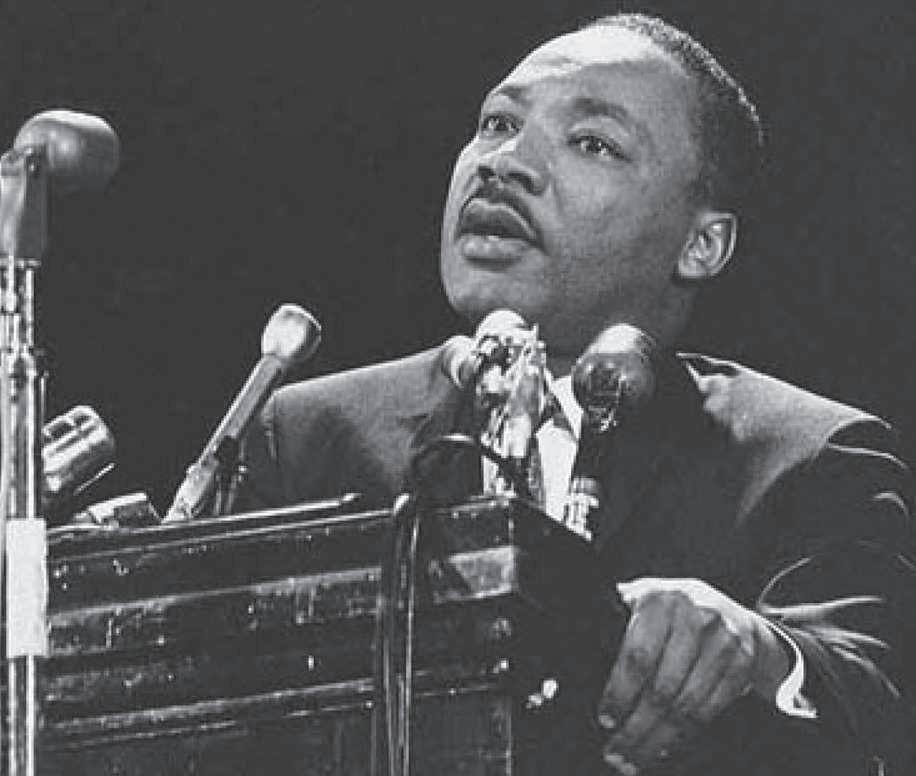
Desegregating the
Dr. Martin
King
delivered his “Two Americas”
on April 14, 1967 at Stanford University.
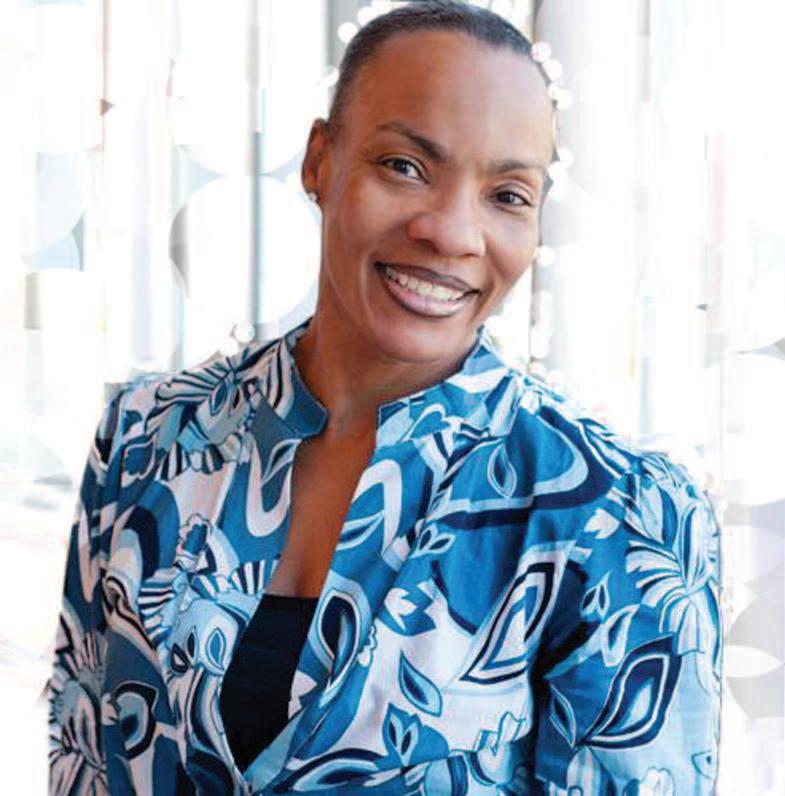
Shawntelle Fisher, STLCC-Florissant Valley alumna and founder/CEO of The SoulFisher Ministries, will speak on “Standing for Truth, Knowledge and Unconditional Love” at STLCCFlorissant Valley and NCCU’s 2019 Dr. Martin Luther King Jr. Celebration.
American staff
St. Louis Community College at Florissant Valley and North County Churches Uniting for Racial Harmony and Justice will host their annual Dr. Martin Luther King Jr. Celebration Tuesday, January 22. The celebration’s theme is “Standing for Truth, Knowledge and Unconditional Love.”
Shawntelle Fisher, STLCC-Florissant Valley alumna and founder/CEO of The SoulFisher Ministries, will serve as the keynote speaker. Her ministry aims to spread hope and empower youth and convicted felons to be positive, productive, and socially responsible members in the community.
n The celebration’s student speaker is Marc Wallace, student emcee is Tia Wilks, and vocalist is Daniel Allyn.
Participants will have an opportunity to sign a gigantic birthday card for Dr. King, which measures 60” x 120,” and see the talents of North County youth on display as current and former STLCCFlorissant Valley students lead the celebratory program. The celebration’s student speaker is Marc Wallace, student emcee is Tia Wilks, and vocalist is Daniel Allyn. Participants will also hear winning speeches from NCCU’s Oratorical Contest and music from local choirs. In addition to being inspired by rousing speakers and choir performances, guests will learn more about why the Ritenour School District is being honored with the 2019 Dr. Rance Thomas Excellence in Community Partnership Award.
“Ritenour School District was chosen because of its commitment to its entire community, its special programs focused on serving often underrepresented individuals and its work in creating a strong partnership with our campus,” said Elizabeth Gassel Perkins, campus provost. The reception is from 5-6 p.m. on Florissant Valley’s campus in the Terry M. Fischer Theatre, located at 3400 Pershall Road. The program follows from 6-7 p.m. This free event is open to the public, and seating is on a firstcome, first-served basis.
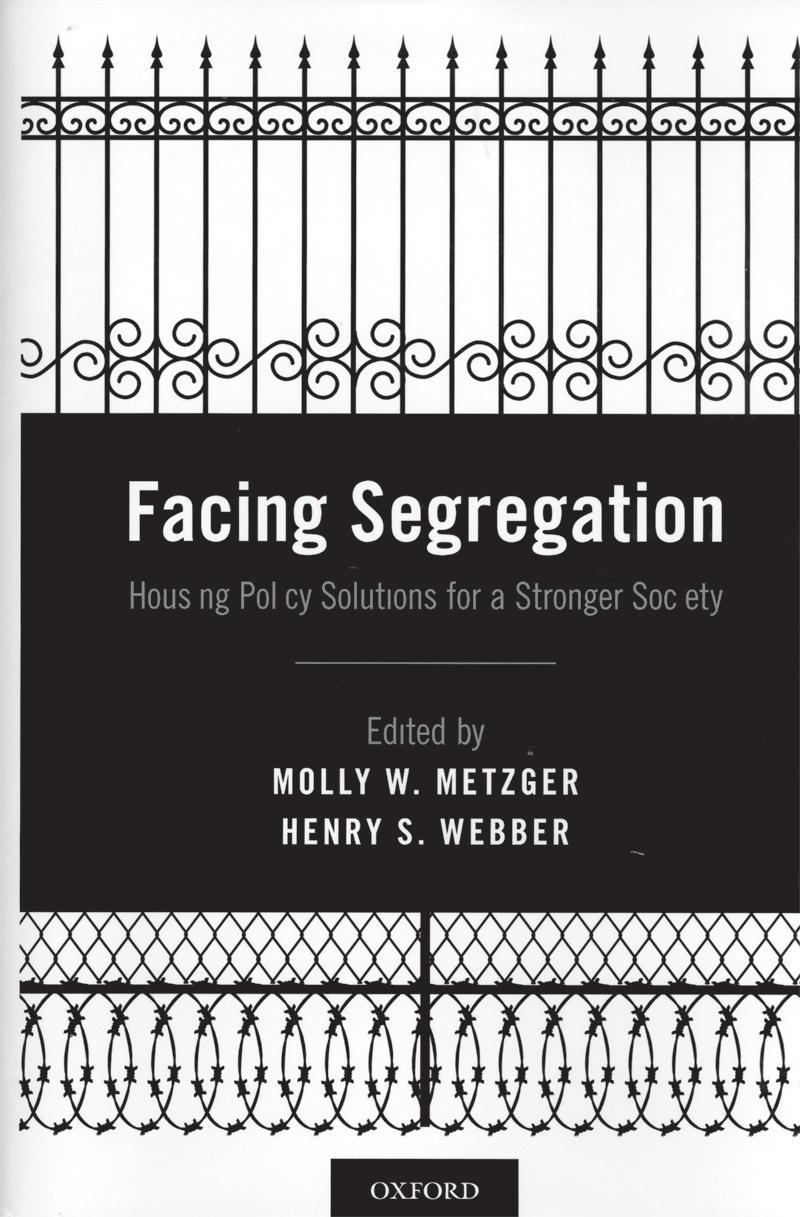
By Clark Randall For
The St. Louis American In “Facing Segregation: Housing Policy Solutions for a Stronger Society,” Molly Metzger and Hank Webber have compiled a collection of essays that can help form the foundation for understanding our deeply divided landscape. Metzger and Webber speak to both the history and the future of metropolitan areas and, in doing so, satisfy both the intellectual and the pragmatist.
Metzger is an assistant professor at the Brown School of Social Work at Washington University in St. Louis and Webber is the university’s executive vice chancellor. Together, they ground the book in a simple premise: segregation harms everyone (though some in more obvious ways than others). And it is residential segregation, the authors argue, that can be found at the nexus of this country’s current identity and political crisis.
Essays edited by Wash U scholars urge change a half-century after MLK
Segregation divvies up opportunity into uneven geographies; it creates cesspools of like-minded political thought and extremism; it exposes entire neighborhoods, primarily black neighborhoods, to premature death by way of their address. For instance, Jason Purnell, also a professor in the Brown School, points to an 18-year gap in average life expectancy between two neighboring zip codes in St. Louis: 85 years in 63015 to 67 years in 63106.
In popular imagination, segregation is understood as an issue of prejudice and individualized racism and/ or classism. The authors
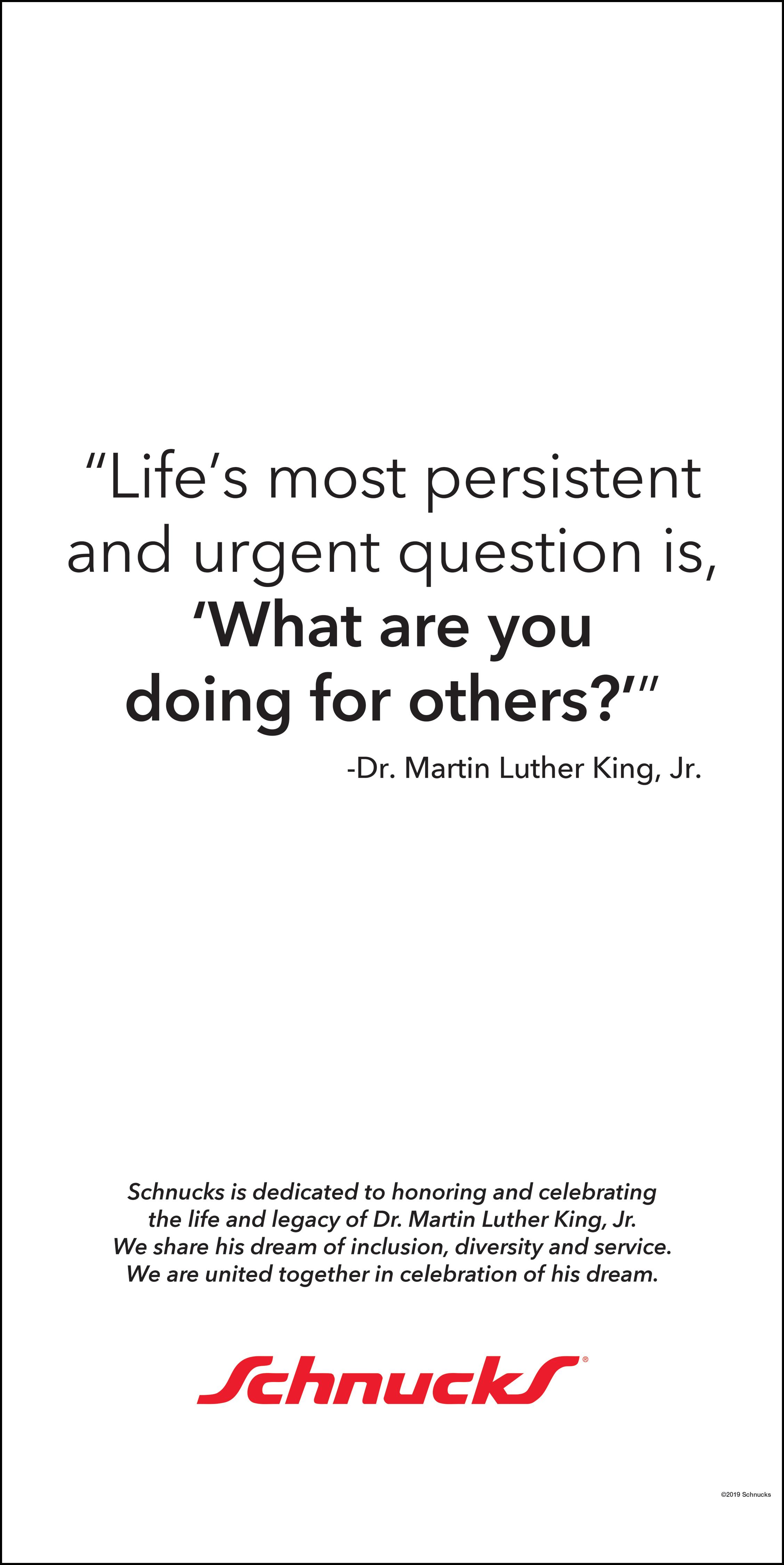
to integrate voucher holders into communities with strong educational and employment opportunities.
take aim at this conception, demonstrating that residential segregation is, in truth, the outcome of a massive project undertaken by the federal government for the better part of the 20th century. Richard Rothstein, author of “The Color of Law,” drives in the nail on this point in the opening chapter, “De Facto Segregation: A National Myth.” He writes, “Black families do not live in segregated conditions by choice, they were herded there by the federal government.” Rothstein argues that the nation’s segregated suburbs were made possible by race-based subsidies through the Federal Housing Administration (FHA), and the interstates those suburban dwellers used to commute to their jobs in the city were created through federal handouts as well. This history, Rothstein notes, “has never been remedied.”
Alongside federal prerogatives, another underreported force has divided us over time: violence. And, Rothstein says, the police, historically have colluded with white vigilantes to forcefully evict black families who move into white neighborhoods. Arson, bombings, bricks, and guns have over many decades been used to push black families out. This is the story from all over and each edge of this country, and the police have allowed, and at times instigated, these mob attacks. This is often where the conversation ends, in retracing our troubled past. But “Facing Segregation” also draws the reader into current policy and prescriptions for positive change.
n Richard Rothstein, author of “The Color of Law,” says that the police historically have colluded with white vigilantes to forcefully evict black families who move into white neighborhoods.
Sard argues for several changes. She suggests increasing overall federal funding of vouchers to expand the program’s reach to those currently sitting on waitlists around the country; there are over 20,000 in St. Louis city alone. She also suggests requiring the Department of Housing and Urban Development (HUD) to shift its grading scale of local housing authorities to give more weight to the locational outcomes of voucher recipients. Essentially, Sard argues that the success of the housing voucher program should be based, in large part, on helping families move into higher opportunity areas with low rates of poverty. The book concludes with a compelling call to action for universities by William F. Tate, the Edward Mallinckrodt Distinguished University Professor and dean and vice provost for Graduate Education at Washington University in St. Louis. Tate analyzes segregation through the lens of what he deems competing regimes, with regimes defined as “public-private partnerships organized to achieve a common goal.”
“Brain regimes,” Tate argues, must be created in cities across the country to combat the intergenerational issue of low-academic achievement in the underfunded schools of urban America. Brain regimes must contest the existing segregation regimes that have long controlled St. Louis and most other major metropolitan areas.
Barbara Sard of the Center on Budget Policy and Priorities sifts through the successes and shortcomings of the housing voucher program, formerly known as Section 8. The pace allows for casual readers to enter the labyrinth of housing subsidy politics. In conclusion, Sard says the program has failed thus far
Tate argues that urban universities have a responsibility to lead the way. He urges research on segregation’s effect on students, crossdisciplinary studies to bridge methodological divides, and partnerships with local public schools.
Taken together, these essays lay out the reality that segregation is not a periphery problem for cities like St. Louis or for the country. Rather, solving segregation is a cornerstone to progress in every measure of the nation’s health.
The Monsanto Family YMCA, 5555 Page Blvd. in St. Louis, will host its 34th Annual MLK Celebration on Monday, January 21. Breakfast will be served 7-7:45 am, and the program begins at 8 am. featuring keynote speaker Wesley Bell, St. Louis County
prosecutor. The YMCA will be collecting donations for Faith Walk Inc. to support homeless teens (socks, gloves, hats, toiletries). RSVP to Charmane Brown at charmane.brown@ gwrymca.org or 314-367-4646.

Paid for with a $43,000 block grant from Community Development Agency, the statue was intended as the first step towards the rebirth of the neighborhood.
Forty years later, the statute
– like the Fountain Park neighborhood surrounding it – was in disrepair. This past summer, leaders of the Centennial Christian Church (Disciples of Christ) and Alpha Phi Alpha Fraternity, Inc., along with 18th Ward Alderman Terry Kennedy and neighbors, had the statue restored. Its cracks were mended, and the bronze was cleaned and polished.
Now at 10 a.m. on Saturday, January 19, the restored statue, which is adjacent to 4950 Fountain Ave., will be the centerpiece of a MLK observance event, “Living the Dream – Dismantling Injustices in Community, Education, & Literacy.” Fountain Park’s monument remains the only statue of a civil rights leader in the state.
“The reason we make such a big deal about the statue is because we don’t have another in the area,” said Rev. Derrick L. Perkins, servant and pastor of Centennial Christian Church.
“We are trying to make sure that particular statue remains and looks well in honor of who he was. It’s a symbol. We have many symbols in our city, but we think that is one of hope and one that can across racial lines and sociopolitical lines.”
This will be the second year that the MLK event will be held by the statue. There will be a brief service with speakers from Alpha Phi Alpha Fraternity, the surrounding community and state and local political representatives. The Jennings Warrior Marching Band will lead the gathering in a one-mile march to
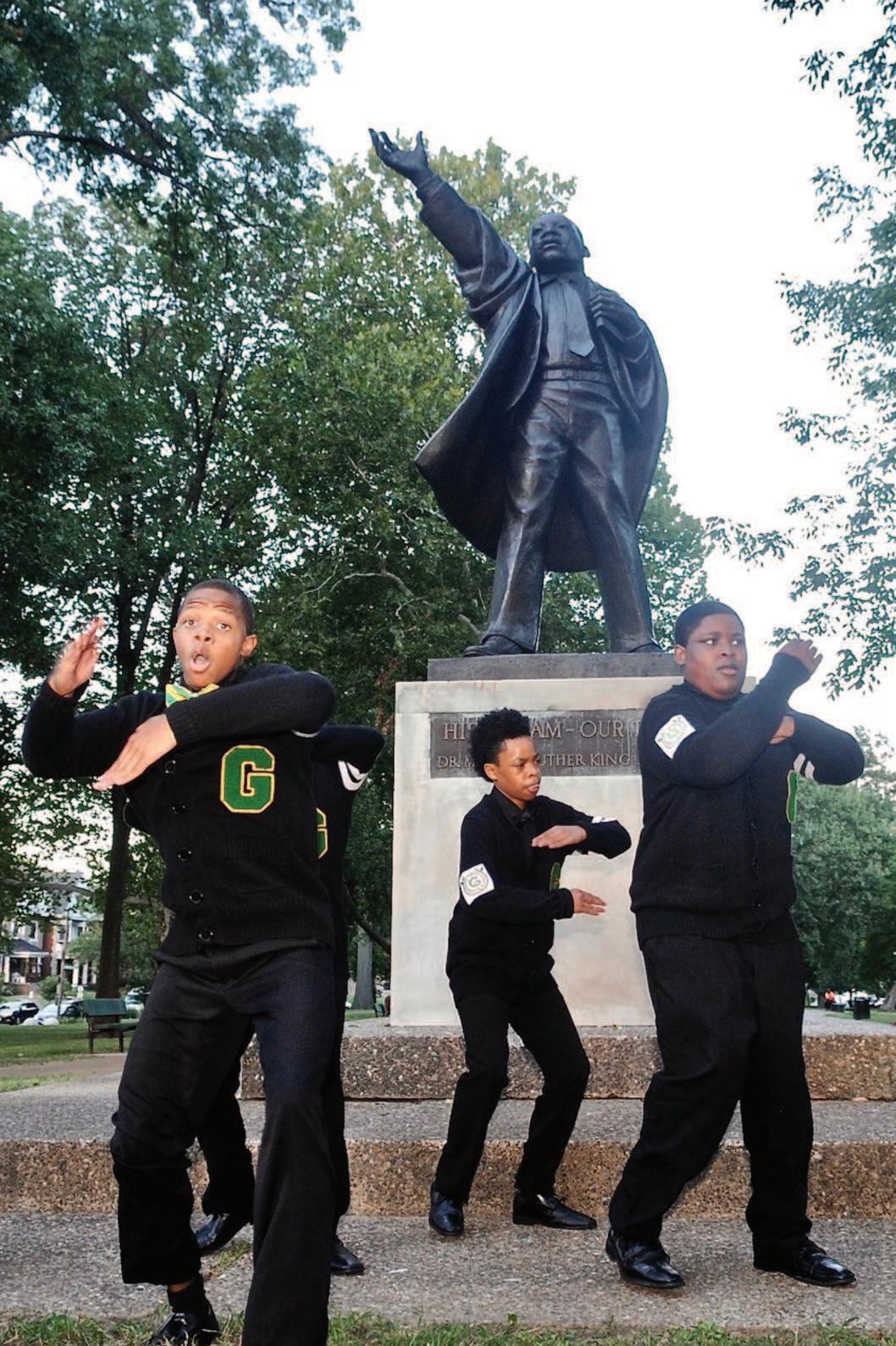
promote peace and unity in the Fountain Park and Lewis Place neighborhoods. Then at

The Gentlemen of Vision performed during rededication ceremonies for the Martin Luther King Jr. statue in Fountain Park on September 5, 2018. The statue had been taken down after 40 years to be repaired and cleaned.
Photo by Wiley Price
Allen, assistant branch manager at the St. Louis County Library; Julius Anthony, founder and president at St. Louis Black Authors of Children’s Literature; Gwendolyn Diggs, assistant superintendent Jennings School District; Rochelle Jones of the St. Louis Metropolitan Police Department and Rev. Dr. Jeff Moore of Webster Groves Christian Church. Rev. Dr. Leonard C. McKinnis II, assistant professor of systemic theology and African–American religions at Saint Louis University, will moderate.
“We have a pretty diverse group that will approach the idea of justice and education,” Perkins said. “We encourage people to assist us in promoting the idea of a beloved community. We are all one people, and we have to figure out how to struggle with that until we become that.”
At the unveiling ceremony in 1978, one of the most warmly received speakers was an 11-year-old boy, Fredrick Anderson, a student at Washington School, according to the Post-Dispatch. Frederick was the winner of an essay contest answering why he would like to unveil the statue.
“Dr. King was a great leader of our society, and contributed
most of his time and effort trying to make our schools and lives better,” Fredrick read from his essay.
“He went to jail and served many days and months for our freedom. What did we do? We just sat there and watched, not lifting a hand to help him.”
Fredrick then helped local leaders pull the cover from the statue.
The actual making of the statue is an interesting story. The statue was delayed for seven months from the expected unveiling date, which the Post-Dispatch called a “comedy of errors.”
The original plan had called for it to be installed in September 1977. But when Torrini went to Florence, where he had his sculptures cast, he didn’t take into account the fact that many Italians take the entire month of August as a holiday. That led to the first month of delay.
Then the two foundry workers assigned to the statue came down with an illness unique to their profession – the black lung disease for bronze workers. They recovered just in time to get caught up in a foundry workers’ strike.
“Finally, just when everything was going well, and the statue was almost completed,” the Post-Dispatch reported, “the master artisan who was to put on the finishing touches suffered from a stroke.”
Eventually it was completed, but then more problems arose when it was being prepared for delivery to St. Louis. The Italian government misplaced the statue while examining it immediately before shipment. It turned up later in a government warehouse.
“When it came time for Torrini to say a few words at the unveiling ceremony Sunday,” the Post-Dispatch reported, “he smiled and said, ‘I want to apologize, too, for the slow boat.’”
For more information about the event, contact Centennial Church at 314-367-1818.
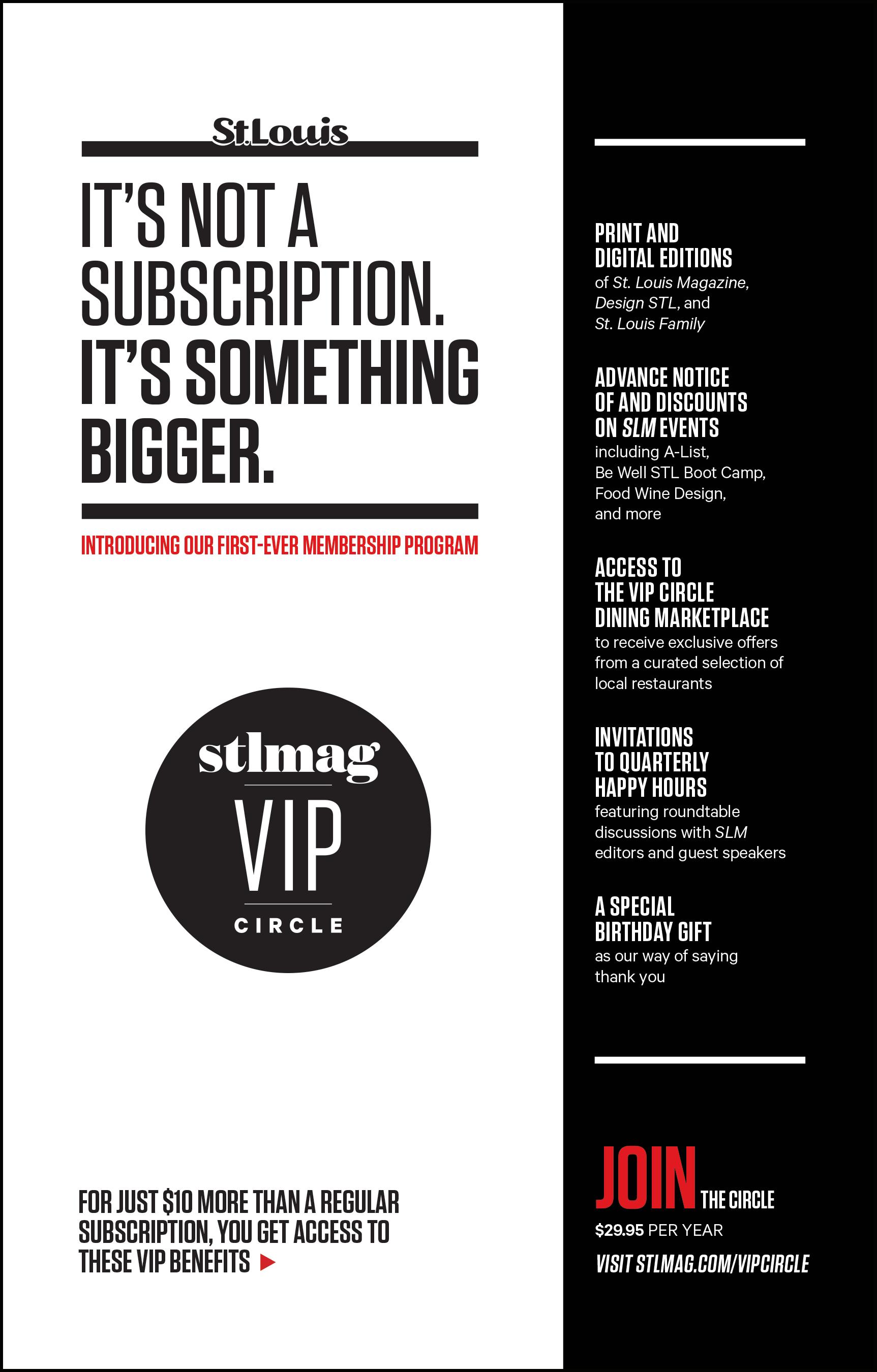
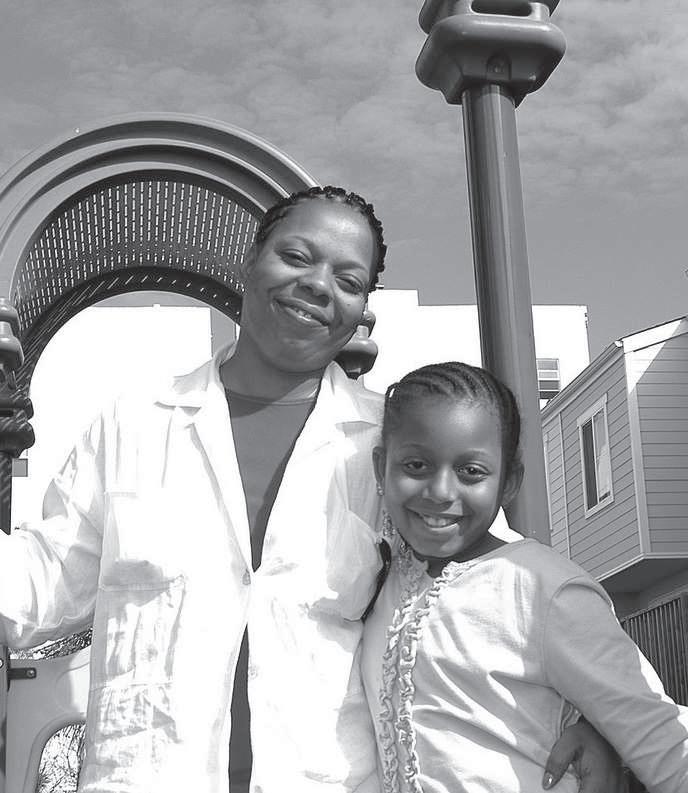

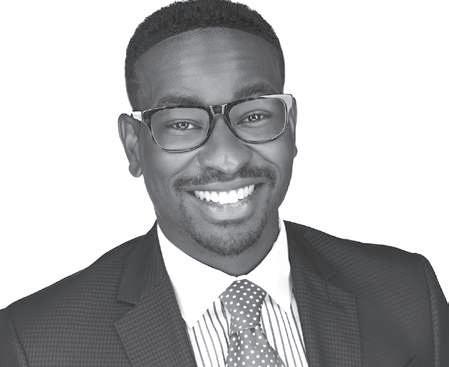
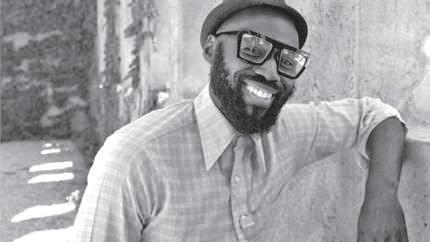

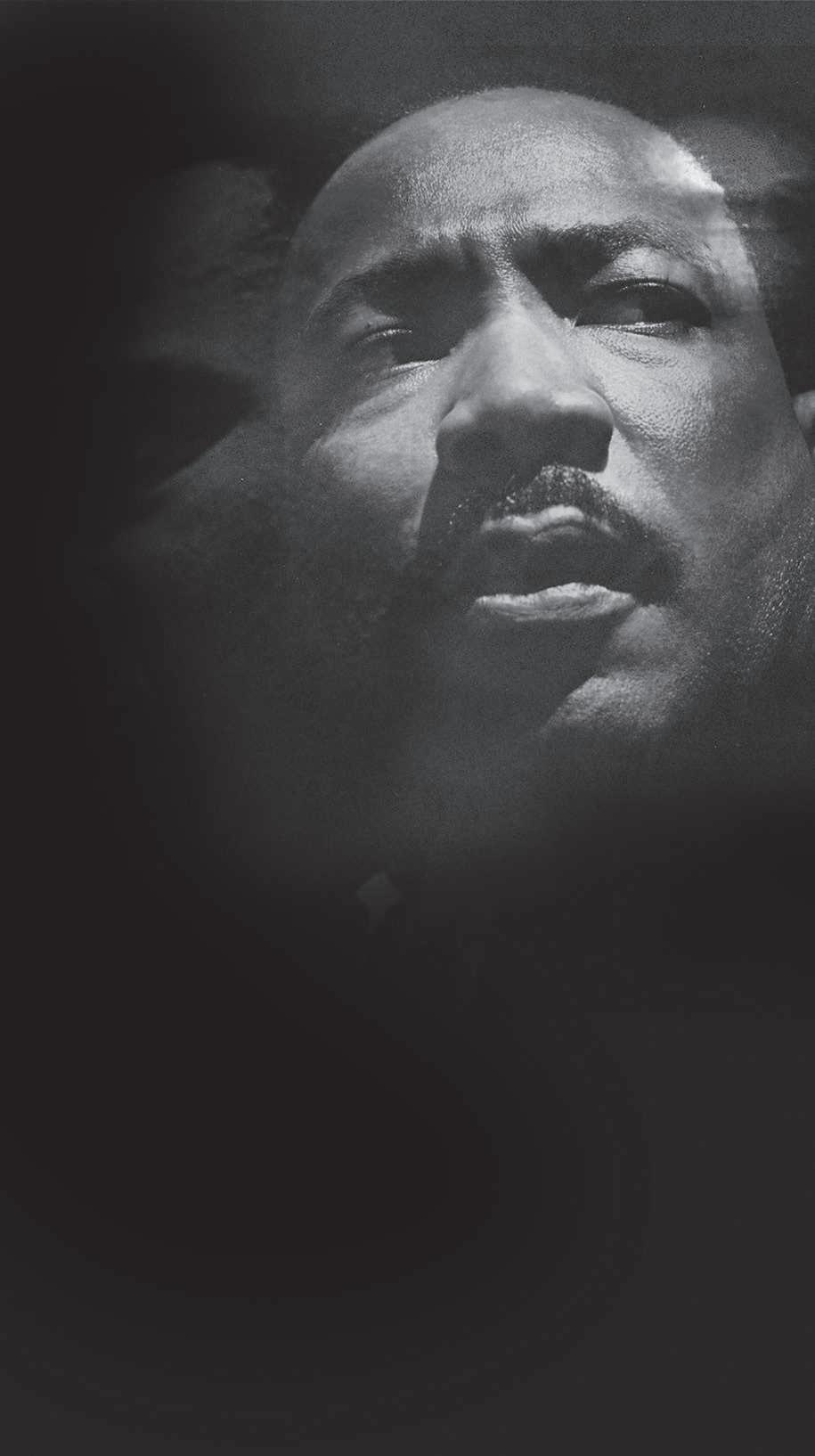
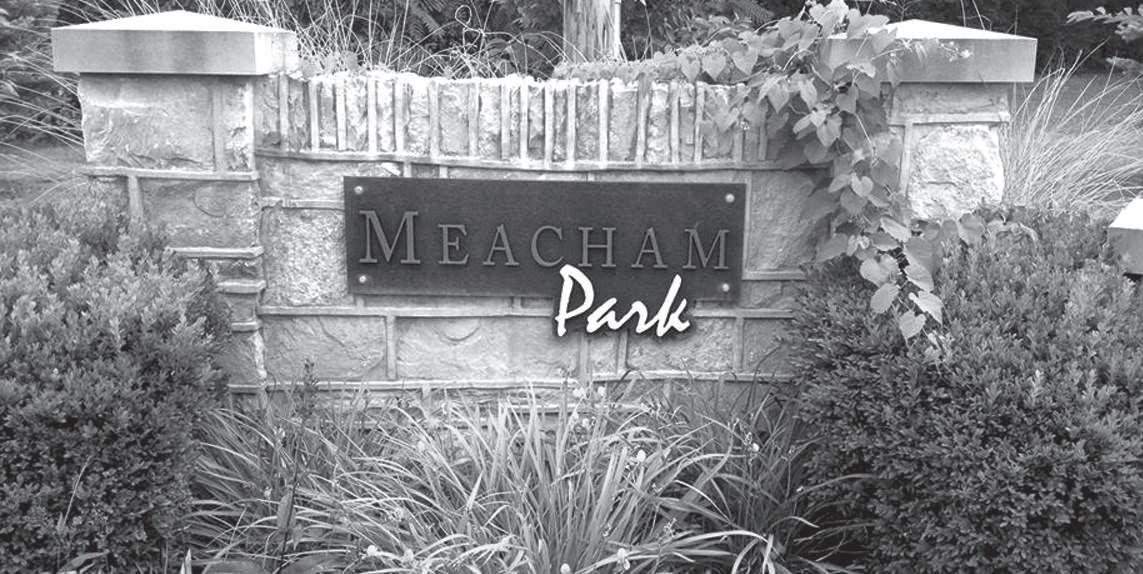


Dr. Martin Luther, King, Jr., delivered his most famous speech on the steps at the Lincoln Memorial in Washington D.C. on August 28, 1963.
Five score years ago, a great American, in whose symbolic shadow we stand signed the Emancipation Proclamation. This momentous decree came as a great beacon light of hope to millions of Negro slaves who had been seared in the flames of withering injustice. It came as a joyous daybreak to end the long night of captivity. But one hundred years later, we must face the tragic fact that the Negro is still not free.
One hundred years later, the life of the Negro is still sadly crippled by the manacles of segregation and the chains of discrimination. One hundred years later, the Negro lives on a lonely island of poverty in the midst of a vast ocean of material prosperity. One hundred years later, the Negro is still languishing in the corners of American society and finds himself an exile in his own land.
So we have come here today to dramatize an appalling condition. In a sense we have come to our nation’s capital to cash a check. When the architects of our republic wrote the magnificent words of the Constitution and the Declaration of Independence, they were signing a promissory note to which every American was to fall heir. This note was a promise that all men would be guaranteed the inalienable rights of life, liberty, and the pursuit of happiness. It is obvious today that America has defaulted on this promissory note insofar as her citizens of color are concerned. Instead of honoring this sacred obligation, America has given the Negro people a bad check which has come back marked “insufficient funds.” But we refuse to believe that the bank of justice is bank-
rupt. We refuse to believe that there are insufficient funds in the great vaults of opportunity of this nation. So we have come to cash this check — a check that will give us upon demand the riches of freedom and the security of justice. We have also come to this hallowed spot to remind America of the fierce urgency of now. This is no time to engage in the luxury of cooling off or to take the tranquilizing drug of gradualism. Now is the time to rise from the dark and desolate valley of segregation to the sunlit path of racial justice. Now is the time to open the doors of opportunity to all of God’s children. Now is the time to lift our nation from the quicksands of racial injustice to the solid rock of brotherhood.
It would be fatal for the nation to overlook the urgency of the moment and to underestimate the determination of the Negro. This sweltering summer of the Negro’s legitimate discontent will not pass until there is an invigorating autumn of freedom and equality. Nineteen sixty-three is not an end, but a beginning. Those who hope that the Negro needed to blow off steam and will now be content will have a rude awakening if the nation returns to business as usual. There will be neither rest nor tranquility in America until the Negro is granted his citizenship rights.
The whirlwinds of revolt will continue to shake the foundations of our nation until the bright day of justice emerges. But there is something that I must say to my people who stand on the warm threshold which leads into the palace of justice. In the process of gaining
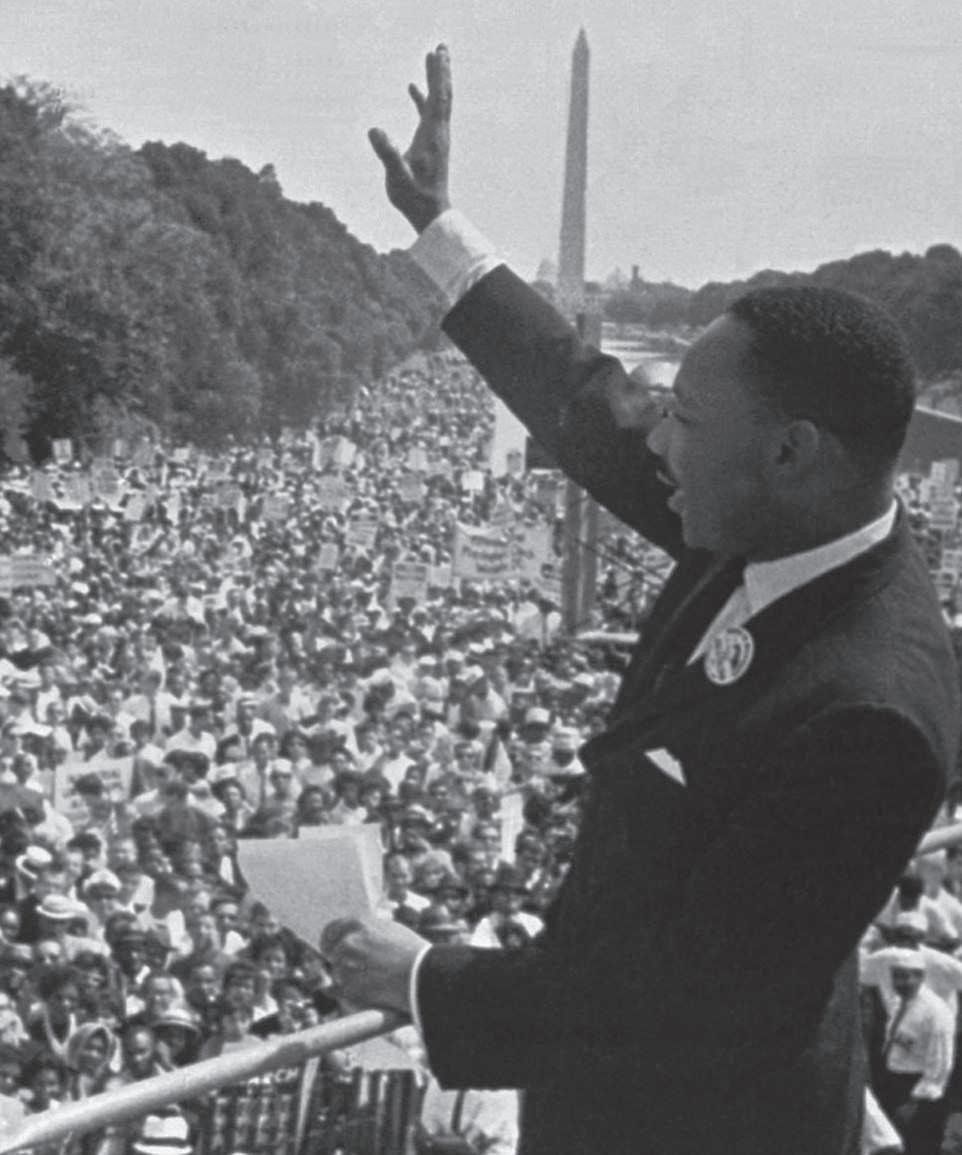
our rightful place we must not be guilty of wrongful deeds. Let us not seek to satisfy our thirst for freedom by drinking from the cup of bitterness and hatred.
We must forever conduct our struggle on the high plane of dignity and discipline. we must not allow our creative protest to degenerate into physical violence. Again and again we must rise to the majestic heights of meeting physical force with soul force.
The marvelous new militancy which has engulfed the Negro community must not lead us to distrust of all white people, for many of our white brothers, as evidenced by their presence here today, have come to realize that their destiny is tied up with our destiny and their freedom is inextricably bound to our freedom.
We cannot walk alone. And as we walk, we must make the pledge that we shall march

where your quest for freedom left you battered by the storms of persecution and staggered by the winds of police brutality. You have been the veterans of creative suffering. Continue to workwiththefaiththatunearned suffering is redemptive.
Go back to Mississippi, go back to Alabama, go back to Georgia, go back to Louisiana, go back to the slums and ghettos of our northern cities, knowing that somehow this situation can and will be changed. Let us not wallow in the valley of despair. I say to you today, my friends, that in spite of the difficulties and frustrations of the moment, I still have a dream. It is a dream deeply rooted in the American dream.
ahead. We cannot turn back.
There are those who are asking the devotees of civil rights, “When will you be satisfied?” we can never be satisfied as long as our bodies, heavy with the fatigue of travel, cannot gain lodging in the motels of the highways and the hotels of the cities. We cannot be satisfied as long as the Negro’s basic mobility is from a smaller ghetto to a larger one. We can never be satisfied as long as a Negro in Mississippi cannot vote and a Negro in New York believes he has nothing for which to vote. No, no, we are not satisfied, and we will not be satisfied until justice rolls down like waters and righteousness like a mighty stream.
I am not unmindful that some of you have come here out of great trials and tribulations. Some of you have come fresh from narrow cells. Some of you have come from areas
I have a dream that one day this nation will rise up and live out the true meaning of its creed: “We hold these truths to be selfevident: that all men are created equal.” I have a dream that one day on the red hills of Georgia the sons of former slaves and the sons of former slaveowners will be able to sit down together at a table of brotherhood. I have a dream that one day even the state of Mississippi, a desert state, sweltering with the heat of injustice and oppression, will be transformed into an oasis of freedom and justice. I have a dream that my four children will one day live in a nation where they will not be judged by the color of their skin but by the content of their character. I have a dream today. I have a dream that one day the state of Alabama, whose governor’s lips are presently dripping with the words of interposition and nullification, will be transformed into a situation where little black boys and black girls will be able to join hands with little white boys and white girls and walk together as sisters and brothers. I have a dream today. I have a dream that one day every valley shall be exalted, every hill and mountain shall be made low, the rough places will be made plain,
and the crooked places will be made straight, and the glory of the Lord shall be revealed, and all flesh shall see it together. This is our hope. This is the faith with which I return to the South. With this faith we will be able to hew out of the mountain of despair a stone of hope. With this faith we will be able to transform the jangling discords of our nation into a beautiful symphony of brotherhood. With this faith we will be able to work together, to pray together, to struggle together, to go to jail together, to stand up for freedom together, knowing that we will be free one day. This will be the day when all of God’s children will be able to sing with a new meaning, “My country, ‘tis of thee, sweet land of liberty, of thee I sing. Land where my fathers died, land of the pilgrim’s pride, from every mountainside, let freedom ring.” And if America is to be a great nation, this must become true. So let freedom ring from the prodigious hilltops of New Hampshire. Let freedom ring from the mighty mountains of New York. Let freedom ring from the heightening Alleghenies of Pennsylvania! Let freedom ring from the snowcapped Rockies of Colorado! Let freedom ring from the curvaceous peaks of California! But not only that; let freedom ring from Stone Mountain of Georgia! Let freedom ring from Lookout Mountain of Tennessee! Let freedom ring from every hill and every molehill of Mississippi. From every mountainside, let freedom ring. When we let freedom ring, when we let it ring from every village and every hamlet, from every state and every city, we will be able to speed up that day when all of God’s children, black men and white men, Jews and Gentiles, Protestants and Catholics, will be able to join hands and sing in the words of the old Negro spiritual, “Free at last! free at last! thank God Almighty, we are free at last!”

Sat., JANUARY 19 and Mon., JANUARY 21 10:00am–3:30pm • FREE

Families can celebrate and reflect on the legacy of Dr. Martin Luther King Jr. through youth activism workshops, peace-inspired art projects, movement workshops with Mama Lisa, stories with the St. Louis Black Authors of Children’s Literature, and special performances. Designed for kids 14 and under. The first 100 kids each day will receive a free storybook. Details at mohistory.org. Sun., JANUARY 20 • 1:30pm • FREE
Rev. Traci Blackmon will remind guests of the importance of the Martin Luther King Jr. holiday and what it means to serve our communities and one another.

Thurs., Jan. 17, 10:30 a.m., Doing the Right Thing: Dr. King’s Legacy, Listen to stories about being a productive member of the community. St. Louis Public Library-Schlafly. For more information, visit www.slpl.org.
Thur., Jan. 17, 7 p.m., St. Louis Public Library presents “I’ve Been to the Mountaintop, MLK Jr.’s Final Speech.” Actors will read text of the speech and perform musical selections. Schlafly Branch, 225 N. Euclid Ave., 63108. For more information, visit www.slpl.org.
Fri., Jan. 18, 11:30
a.m., Christian Hospital Foundation’s Second Annual Martin Luther King, Jr. Celebration Luncheon. James Buford is the 2019 Drum Major Honoree and The keynote address will be given by Rev. Dr. William Barber II. Atrium at Christian Hospital, 11133 Dunn Rd. For additional information call 314653-5162 or e-mail: kamille. pope@bjc.org
Fri., Jan. 18, 5 p.m.,
Throwing and Growing Foundation 6th Annual Dr. Martin Luther King Jr. Program and Essay Contest, The Youth and Family Center, 818 Cass Ave. St. Louis, MO 63106. For additional information, contact Commissioner Myrle Mensey Symonds at 314-650-1008, throwingandgrowing@gmail.com or throwingandgrowing.org
Fri., Jan. 18, 7 p.m., Chaminade and the Skip Viragh Center for the Arts presents An Evening Honoring Dr. Martin Luther
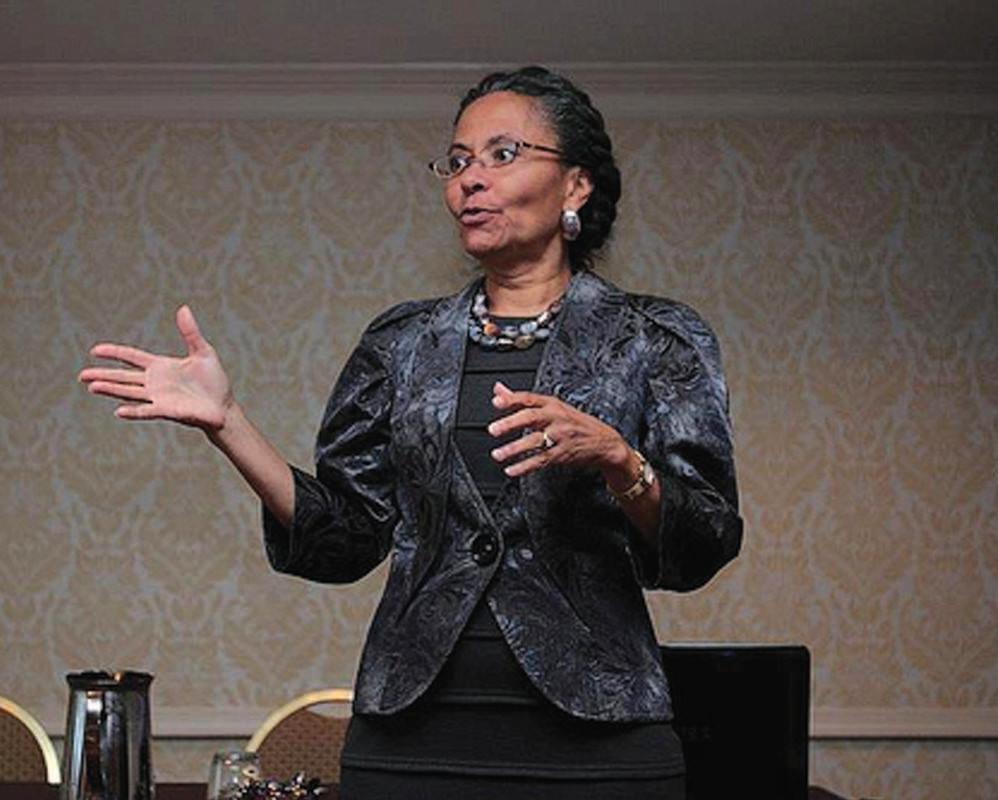
King, Jr. with Denise Thimes, Chaminade and Hazelwood West Jazz Bands. Skip Viragh Center for the ArtsFr. Ralph Siefert Theatre, 425 S. Lindbergh Blvd. For more information, visit www.chaminade-stl.org.
Fri., Jan. 18, 7 p.m., Saint Louis Art Museum presents Rev. Dr. Martin Luther King, Jr. Celebration. Dreaming in Color: Arts, Equity, and
Inclusion. 1 Fine Arts Dr., 63110. For more information, visit www.metrotix.com.
Sat., Jan. 19, 10 a.m., Alpha Phi Alpha Fraternity, Inc., Epsilon Lambda Chapter presents the 2nd Annual MLK, Jr. Holiday Celebration. Centennial Christian Church, 4950 Fountain Ave., 63113. For more information, visit www. aphia-epsilonlambda.org.
Jan. 19, Dr. 10 a.m., Martin Luther King, Jr. Observance in Fountain Park with Centennial Christian Church, Alpha Phi Alpha Fraternity, and Fountain Park Community, Centennial Christian Church, 4950 Fountain Ave.
Sun., Jan. 20, 1 p.m., Alpha Phi Alpha Fraternity, Inc., Epsilon Lambda Chapter invites you to the MLK Weekend Brotherhood
Brunch & Day Party Centennial Edition. BLUE Dine + Lounge, 5917 Delmar Blvd., 63112. For more information, visit www.eventbrite. com.
Sun., Jan. 20, 1:30 p.m., Dr. Martin Luther King, Jr. Day 7th Annual Sunday Supper – A Salute to Veterans and Military Families presented by the women of Alpha Kappa Alpha Sorority, Incorporated, Gamma Omega Chapter, the Ivy Alliance Foundation, and the men of Omega Psi Phi 57 Fraternity, Incorporated, Upsilon Omega Chapter, Omega Center 3900 Goodfellow Boulevard St. Louis, MO 63120. For more information, visit mlk2019vss. eventbrite.com or call (314) 282-8018.
Sun., Jan. 20, 1:30 p.m., Beyond the Dream: A Conversation with Traci Blackmon. Rev. Blackmon will remind guests of the importance of the MLK holiday and what it means to serve. Missouri History Museum, 5700 Lindell Blvd., 63112. For more information, visit www. mohistory.org.
Sun., Jan. 20, 3 p.m., COGIC Urban Initiatives, Inc. and The Empowered Church Annual Justice Sunday MLK Day of Service Observance Jennings High School, 8850 Cozens Ave.
Mon., Jan. 21, 7 a.m., 34th Annual MLK Celebration at the Monsanto Family YMCA with keynote speaker St. Louis County Prosecutor Wesley Bell, Monsanto Family YMCA, 5555 Page Blvd, St. Louis, MO 63112. For additional information, call (314) 367-4646.
Mon., Jan. 21, 9 a.m. The St. Louis City Dr. Martin Luther King Jr. Holiday Committee 50th Annual Celebration Civic Ceremony, the Old Courthouse, 4th & Market Street. Rotunda. March to follow 10 a.m. program. 12:30 p.m. Interfaith service at the Leonard Baptist Church at Compton and Dr. Martin Luther King Dr. Bishop Stephen Thompson, host pastor. For further information and King Buttons call 314-583-0532, 314-458-6906, or 314- 7691211.
Mon., Jan. 21, 10 a.m., UMSL Office of Diversity, Equity, and Inclusion Dr. Martin Luther King, Jr. Holiday Observance with keynote address by activist Bree Newsome. Blanche M. Touhill Performing Arts Center, One University Blvd., 63121. For more information, visit www. eventbrite.com.
Mon., Jan. 21, 10 a.m., Christ Church Cathedral annual Let Freedom Ring program featuring continual readings from Dr. King’s historic speeches and writings in the nave of the church, at 13th and Locust streets downtown. For more information, visit www.
Sun., Jan. 20, 7 p.m., City of Hazelwood Community Enrichment Commission’s 17th Annual Tribute to Dr. Martin Luther King Jr. with keynote speaker Ms. Michelle Tucker, CEO Epworth Children & Family Services, Hazelwood Civic Center East, 8969 Dunn Road Hazelwood, MO.
honor


christchurchcathedral.us.
Mon., Jan. 21, 10 a.m., Memorial Tabernacle Christian Life Center Rev. Dr. Martin Luther King, Jr. Celebration with special guest Bishop John Mitchell, Jr. and Southern Mission Baptist Church, 1350 S. Lafayette St., Florissant, MO 63031
Mon., Jan. 21, 1 p.m. The Meacham Park Neighborhood Improvement Association Rev. Martin Luther King Jr. Musical Celebration, Keating Auditorium at Kirkwood High School, 801 W. Essex Ave. For more information, visit http://www.meachamparknia. org/2019-dr-king-celebration--tickets.html
Mon., Jan. 21, 4 p.m. Washington University School of Medicine Annual Martin Luther King, Jr. Celebration Lecture. This year’s speaker is Camara Jones, MD, MPH, PhD. Camara Jones is currently a Senior Fellow at the Satcher Health Leadership Institute and Cardiovascular Research Institute as well as Adjunct Associate Professor of Community Health and Preventive Medicine at Morehouse School of Medicine. Washington University School of Medicine Eric P. Newman Center, 320 S. Euclid Ave. St. Louis, MO 63110. For more information, contact the Office of Diversity Programs at (314) 362-6854 or medschooldiversity@wusm.wustl.edu.
Tues., Jan. 22, 5 p.m., Creative Kids: Let Freedom Sing, Children will listen as Vanessa Newton’s book “Let Freedom Ring” is read and make their own “Freedom
Bell.” Pre-K. St. Louis Public Library – Baden Branch, 8448 Church Rd. For more information, visit www.slpl.org.
Tues., Jan. 22, 7 p.m., St. Louis Community College at Florissant Valley and North County Churches Uniting for Racial Harmony and Justice will host its annual Dr. Martin Luther King Jr. Celebration. The celebration’s theme is “Standing for Truth, Knowledge and Unconditional Love.” SLCC Florissant Valley Campus Terry M. Fischer Theatre 3400 Pershall Road Florissant, MO.
Wed., Jan. 23, 4 pm., DIY: MLK Empowerment Jars, Teens will explore the themes of Dear Martin by Nic Stone and paint a jar where they collect “Dear…” letters to each other filled with words of empowerment. St. Louis Public Library-Central Branch, 1301 Olive. For more information, visit www.slpl.org.
Wed., Jan. 23, 5 pm., DIY: MLK Empowerment Jars, Teens will explore the themes of Dear Martin by Nic Stone and paint a jar where they collect “Dear…” letters to each other filled with words of empowerment. St. Louis Public Library-Barr Branch, 1701 S. Jefferson. For more information, visit www.slpl.org.
Thurs., Jan. 24, 6 p.m., Martin Luther King, Jr. Trivia Day, St. Louis Public Library-Julia Davis Branch, 4415 Natural Bridge Ave. For more information, visit www. slpl.org.
Fri., Jan. 25, 7 p.m., St.

Louis County Library welcomes Anthony Ray Hinton, author of The Oprah Book Club Selection “The Sun Does Shine: How I Found Life and Freedom on Death Row,” St. Louis County Library Headquarters, 1640 S. Lindbergh. For more information, visit www.slcl.org
Fri., Feb. 1, 7 p.m., Th Black Rep presents “Freedom Songs,” St. Louis County Library – Lewis and Clark Branch, 9909 Lewis and Clark.
For more information, visit www.slcl.org
Sat., Feb. 2, 1 p.m., Black History Month Movie Screening “Owned: A Tale of Two Americas” The United States’ post-World War II government policies directly subsidized white America housing, while denying opportunities to minorities. St. Louis Public Library-Central Branch, 1301 Olive. For more information, visit www.slpl.org.
Sat., Feb. 2, 2 p.m., Dimbayaa Arts African and African Diaspora Dance Performance and Lecture, Bridgeton Trails Branch Library, 3455 McKelvey Rd. For more information, visit www.slcl.org
Mon., Feb. 4, 4:30, Exploring Black Excellence: Past, Present, and Future, Learn about the professional accomplishments of Black Americans during the Great Migration. St. Louis Public Library – Divoll
Branch, 4234 N. Grand. For more information, visit www. slpl.org.
Mon., Feb. 4, 6 p.m. “Pies from Nowhere” Story Time and Pie Tasting, Join library staff for a reading of the book “Pies from Nowhere: How Georgia Gilmore Sustained the Montgomery Bus Boycott” by Romito Dee and Laura Freeman. Afterward, sample pies from area restaurants. Registration required. St. Louis County – Weber Road Branch, 4444 Weber Rd. For more information, visit www. slcl.org.
Sat., Feb. 9, 1 p.m., Black History Month Movie Tell Them We are Rising: The Story of Black Colleges and Universities,” St. Louis Public Library-Central Branch, 1301 Olive. For more information, visit www.slpl.org.
Sat., Feb. 9, 3 p.m., Creative Kids: Great Migration Mapping, Children will listen to a reading of the picture book “This is the Rope” by Jacqueline Woodson and map out the family’s journey on a large interactive map of the United States. St. Louis Public Library-Central Branch, 1301 Olive. For more information, visit www.slpl.org.
Tues., Feb. 12, 7 p.m., St. Louis County Library welcomes Emily Bernard, author of “Black is the Body: Stories from My Grandmother’s Time, My Mother’s Time, and Mine” St. Louis County Library Headquarters, 1640 S. Lindbergh. For more information, visit www.slcl.org


By Chris King
Of The St. Louis American
Martin Luther King III will keynote a celebration of his father, the Rev. Dr. Martin Luther King Jr., presented by Saint Louis University and the Urban League of Metropolitan St. Louis on Thursday, January 17, in the Wool Ballroom of SLU’s Busch Student Center, 20 N. Grand Blvd. The event begins with a breakfast at 8 a.m. and then the program at 9 a.m. The oldest son of Dr. King and Coretta Scott King, Martin Luther King III updates his father’s message for a new day.
“My father was a builder of bridges, not walls,” Martin Luther King III said at the U.S./ Mexico border south of San Diego in August. “In fact, you could say that his nonviolent leadership was all about tearing down walls – walls of racial segregation and separation, walls of discrimination and division, walls of fear and ignorance that were created to prevent the unity of people of all backgrounds. There was no room for building walls in Martin Luther King Jr.’s Dream.”
The context, of course, was President Trump’s fixation on building a wall along the

U.S./Mexico border, which is if anything worse now than then, with the president holding much of the federal government hostage in an attempt to force
Congress to fund construction of the wall.
“This border wall behind me has become a symbol of hate and division,” King said at the border. “It leads to the separation of children from their parents, endangers border communities and takes the lives of people in search of safety and freedom.”
SLU alumnus Michael McMillan, president and CEO of the Urban League of Metropolitan St. Louis, will emcee the program. He also will join Fred P. Pestello,

president of SLU, and Jonathan Smith, SLU’s vice president of diversity and community engagement, to present a number of awards.
Frances Mae Shelby, political and civic activist who has never missed voting in an election in 75 years, will be recognized as Longest Voter in the St. Louis Region.
Kayla Reed, community activist and civic organizer, will receive the Saint Louis University Community Service Award. And Mona Hicks, associate vice president and
dean of students at SLU, will receive the Donald Brennan Humanitarian Award. The program also will include a welcome by and prayers by Father Christopher Collins S.J., assistant to the university president for mission and identity. The event is presented in partnership with Ameren Missouri. Complimentary parking is available in the university garage located at Grand and Laclede.

in Memphis during the 1968 sanitation workers’ strike.
In a life of only 39 years, Dr. King captured global attention in his valiant, nonviolent fight for the values of freedom, justice and equality. Preaching and fighting for long overdue citizenship rights first promised to all in the Declaration of Independence, he championed economic justice – especially for blacks to have safe, decent, and affordable housing. He also called for full participation in the economy, and an end to financial exploitation. Now 51 years since his assassination, his words still strike a resonant chord. His words – written as prose but markedly poetic – remain as timely as they are timeless. There are so many problems facing our nation and our world, that one could just take off anywhere,” Dr. King said in a speech delivered on April 14, 1967 at Stanford University. Dr. King began by recapping the nation’s bounty and beauty, noting how “America is overflowing with the milk of prosperity and the honey of opportunity” and how “millions of young people grow up in the sunlight of opportunity.”
For his audience, those comments almost certainly reflected the lifestyles of the students attending one of the nation’s elite educational institutions. In his inimitable Baptist cadence, Dr. King then went on to speak of the “Other America” that was equally real but far removed from the commonplace privilege associated with Stanford.
“Little children in this other America are forced to grow up with clouds of inferiority forming every day in their little mental skies. As we look at this other America, we see it as an arena of blasted hopes and shattered dreams,” said Dr. King. “It’s more difficult today because we are struggling for genuine equality. It’s much easier to integrate a lunch counter than it is to guarantee a livable income and a good
solid job. It’s much easier to guarantee the right to vote than it is to guarantee the right to live in sanitary, decent housing conditions.”
In 2019 the two Americas Dr. King wrote about still remain. A nation once lauded for its enviable and expanding middle class has evolved into a nation of people who are either growing wealthy or growing poor. In this unfortunate process, the nation’s envied middle class is vanishing. Historically, homeownership has been a reliable measure of the nation’s middle class. Late last year it stood at 64.4 according to the Census Bureau. Yet when race and ethnicity are added who owns a home today discloses a far different picture. White homeownership was higher than the national average at 73.1 percent.
But blacks still-suffering from the financial losses from the now decade-old foreclosure crisis had a homeownership rate of 41.7 percent, lower than its pre-housing crisis rate of 47.7 percent. Today’s Black homeownership resembles the same levels experienced at the time of the 1968 Fair Housing Act’s passage.
Latino homeownership today is higher than that of blacks at 46.3 percent; but still lower than its earlier pre-crisis rate of 47.7.
Housing also remains troubled for renters as well.
According to the National LowIncome Housing Coalition the nation lacks more than 7 million affordable rental homes that affect 43.8 million families. Moreover, 11 million families pay more than half of their income on housing and are considered severely-cost burdened.
As of January 3, over 1,100 HUD contracts with landlords for its Section 8 rental voucher program expired. By February, another 1,000 more contracts are expected to expire. At press time, the stalemated federal government shutdown continued, leaving millions of people uncertain about their lives, or livelihoods or both. While landlords and HUD figure out the paperwork, 1.2 million families relying on this
vital rental support program remain at risk.
Also caught in partisan bickering of a federal government shutdown are men and women – the military and civil servants – whose service to the country is deemed so essential that they must continue to work without knowing when another paycheck will arrive. Another 800,000 furloughed federal workers may be at home; but like others affected by the shutdown, they too still need to pay their rent or mortgage, honor their financial obligations and take care of children as best they can.
When times are tough financially, a range of predatory lenders seize opportunities to tempt those who are hardpressed for cash with interest rates on loans that would make a bookie blush. When a loan of only a few hundred dollars comes with interest payments that double or triple the cash borrowed, predatory lenders are ready to exploit those with few or no financial options.
Those who are unpaid or underemployed - those who are working but failing to earn a salary comparable to their education and training, student loan repayments can take a financial backseat to housing, utilities, or other daily living needs.
At press deadline, the federal shutdown was approaching the 1995 shutdown record of 21 days.
In 1967 Dr. King advised his Stanford University audience, “Somewhere we must come to see that social progress never rolls in on the wheels of inevitability. It comes through the tireless efforts and the persistent work of dedicated individuals…. And so we must help time, and we must realize that the time is always right to do right.”
This year, may we all honor Dr. King and do our respective efforts to make America live up to its promise of opportunity for all.
Charlene Crowell is the Center for Responsible Lending’s Communications Deputy Director. She can be reached at Charlene.crowell@ responsiblelending.org


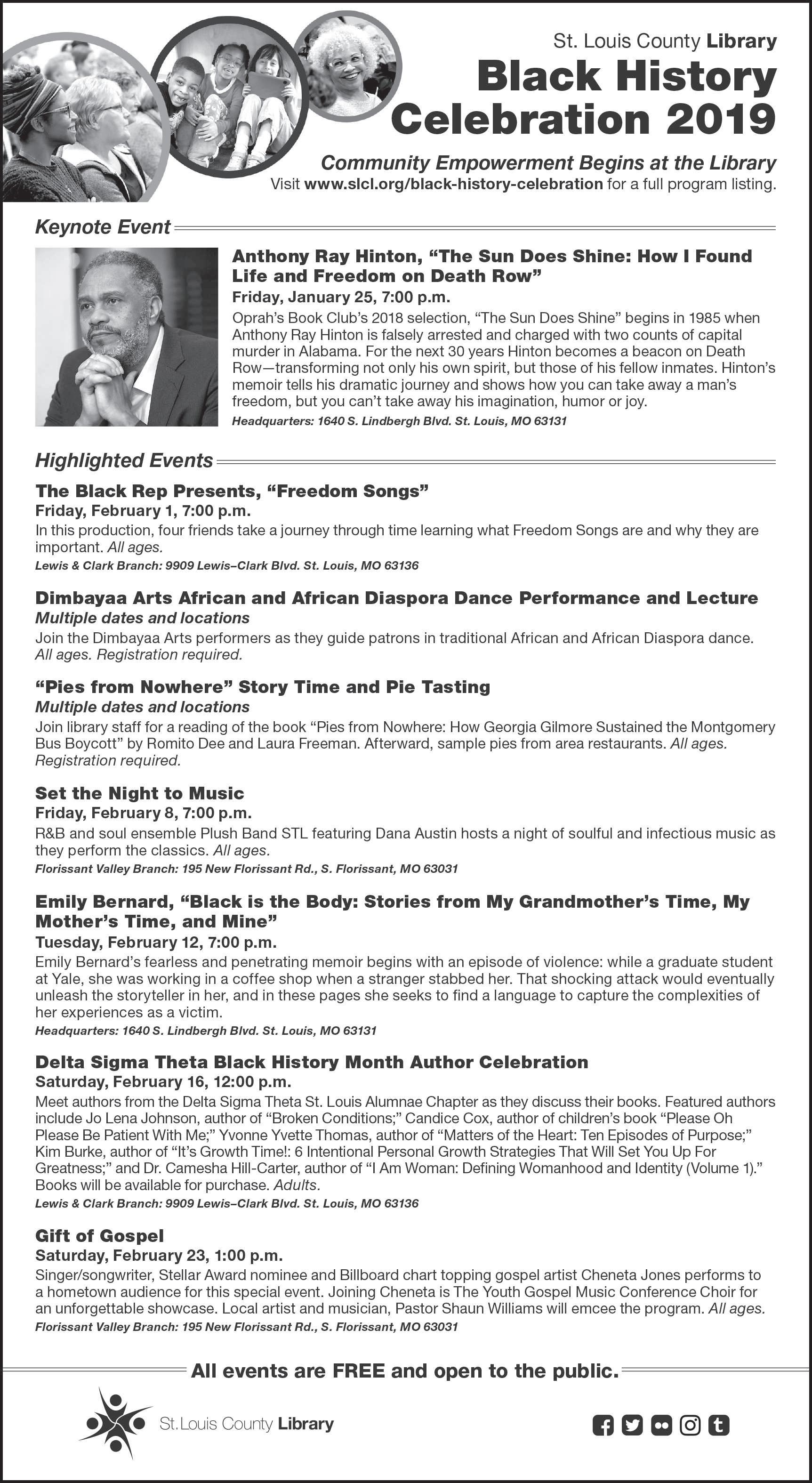

By Jamala Rogers
For The St. Louis American
It’s that time of year where one of Dr. Martin Luther King Jr.’s most famous speech will permeate the air. “I Have a Dream” is often quoted – even by the perpetrators of greed, racism and injustice. If half of us were truly carrying out the principles of Dr. King, the world wouldn’t be such a ball of confusion, with ruptured communities and massive chaos.
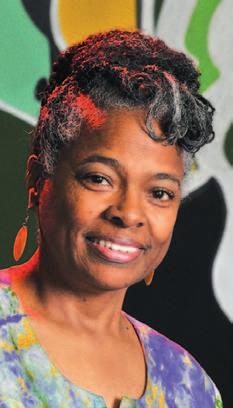
The brilliance and complexity of Dr. King’s work is his enduring analysis of this country’s three evils: racism, war and poverty. Over five decades since his death, these three evils are alive and well and continually stoked by the likes of Trump. Dreaming won’t rid us of them either.
Billions of tax dollars are spent each year in military aggression, both home and abroad. One in six Americans now lives below the poverty line. The unemployment rate for black people has been doubled that of whites since 1972. Poverty and economic injustice are twins that still dominate. The big tax cut by Trump no way eased the deep suffering of poor and working people. The King had many profound insights about life in the U.S. that can still inform our quest for racial and economic justice. Because
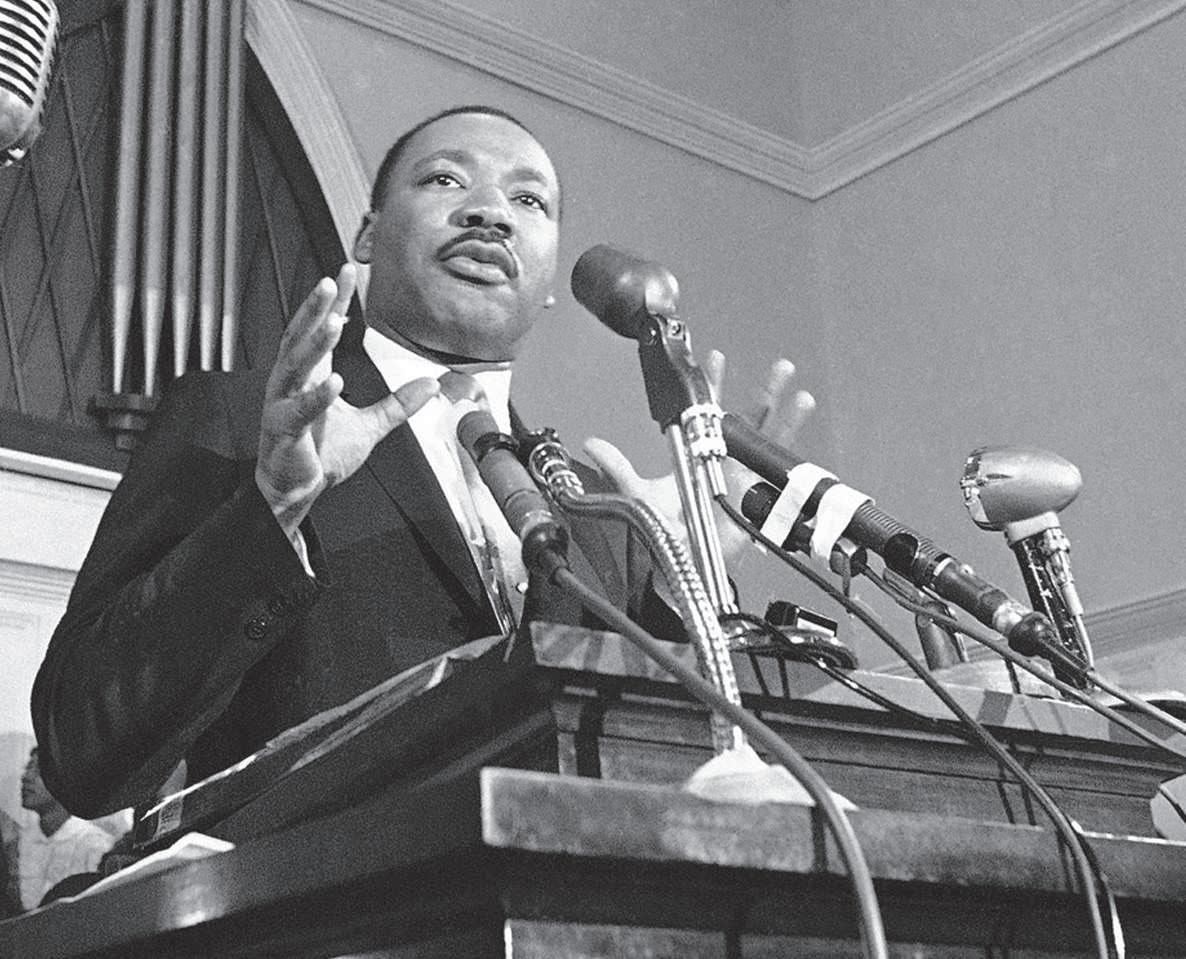
the mainstream media has us stuck on dreaming, it has taken years to uncover the nuggets of wisdom in King’s many speeches and writings that expose the barriers to peace and prosperity for all American citizens.
Regarding the attack on the public schools, Dr. King believed that “the function of education is to teach one to think intensively and to think critically.” Many of our children going to public schools are being robbed of a true education and, ultimately, their future.
The growing economic gap between the rich and poor is becoming an acceptable fact.
Dr. King would have found it unconscionable believing “the curse of poverty has no justification in our age” and that the “the time has come for us to civilize ourselves by the total, direct and immediate abolition of poverty.” To know that a CEO makes 270 times more than the average worker would sicken the King.
On police brutality and the criminal courts, Dr. King said
that “law and order exist for the purpose of establishing justice and when they fail in this purpose, they become the dangerously structured dams that block the flow of social progress.” He would be critical of any police department that persists in racial profiling and a prosecutor’s office that has difficulty figuring out who are the real criminals.
On war and U.S. imperialism, Dr. King was on point when he predicted that “a nation that continues year after year to spend more money on military defense than on programs of social uplift is approaching spiritual doom.”
Dr. King reminded us that “of all the forms of inequality, injustice in health care is the most shocking and inhumane.” He would be appalled to see that the richest country in the world had 45 million uninsured citizens despite the efforts of the first Black president to provide health care for all.
Dr. King has told us that the privileges of white people in an inherently racist society must be scrutinized in the quest
n As we celebrate Dr. King’s birthday, let justice-seeking people learn lessons from the past and declare a renewed commitment to the struggle ahead.
American staff
The Christian Hospital Foundation will host its second annual “Embracing the Dream – The Beloved Community”

for racial equity. White people marching arm-in-arm with blacks shouting “Black Lives Matter” is a picnic compared to what it takes to deconstruct an economic system built on racial and sexual exploitation.
On the government shutdown by a president who holds a nation hostage to get what he wants, Dr. King would be doing what he could to get a meeting with Trump. I can see him mustering up his most diplomatic negotiating skills to convince an insensitive egomaniac the value of humanity. This is a wannabe dictator who is taking the country into chaos.
As we celebrate Dr. King’s birthday, let justice-seeking people learn lessons from the past and declare a renewed commitment to the struggle ahead to save humanity and the planet. That’s what it really means to fully embrace Dr. King’s legacy. Communities must be built upon principles of trust and equity. Trust and believe Dr. King when he said full civil and human rights will not come at “bargain rates.”
Dr. Martin Luther King Jr. Celebration Luncheon from 11:30 a.m.-1:30 p.m. Friday, January 18 in the Detrick Building Atrium, 11133 Dunn Rd. “The event will be a celebration of inspiration, hope and healing for our beloved community,” organizers stated.
Rev. William J. Barber II, president of Repairers of the Breach, will be the keynote speaker, and Evangelist Mary Tillman of 95.5 FM will serve as mistress of ceremonies.
The Drum Major for Service Award will be presented to honor an unsung individual who has given their time, talents and treasure in service of justice and equality. The award is inspired by Dr. King describing what he called the “Drum Major Instinct” in a sermon over a half-century ago at Atlanta’s Ebenezer Baptist Church: “If you want to say I was a drum major, say that I was a drum major for justice; say that I was a drum major for peace; I was a drum major for righteousness … We all have the drum major instinct.”
The 2019 awardees are James Buford, retired president and CEO, Urban League of Metropolitan St. Louis; Maxine Clark & Bob Fox, Clark-Fox Family Foundation; Sonya Crider, executive director, Emerson Family YMCA;
Esther Haywood, president emeritus, Saint Louis County NAACP; Susan Stith, vice president, Diversity, Inclusion and Corporate Giving, Express Scripts Holding Company; and Kelvin Westbrook, president and CEO, KRW Advisors, LLC.
Scholarships will be awarded to one student interested in pursuing careers in health care from each of the Ferguson-Florissant, Hazelwood, Jennings, Normandy and Riverview Gardens school districts; Lutheran North and Trinity Catholic high schools; and St. Louis Community College. Individual reservations are $50 and table reservations for eight are $400. The celebration includes lunch and complimentary valet parking. A portion of the proceeds will support scholarships for local high school and junior college students interested in pursuing careers in health care, and the Medication & IV Antibiotic Fund for indigent patients. For more information, visit ChristianHospital.org/MLKCelebration or contact Kamille Pope at 314-653-4191 or Kamille.Pope@bjc.org.

‘Transforming the Elite’ provides missing piece of the civil rights struggle
By Gerry Everding Washington University
In 1963, as public school desegregation battles raged across the South, three of the nation’s most prominent black leaders — Martin Luther King Jr., Julian Bond and Ralph Abernathy — quietly sought to enroll their own children in several of Atlanta’s most prestigious private schools, elite K-12 institutions, which, until then, had managed to remain all white.
“Our sole purpose in making application,” King stated at the time, “for our son, Martin III, was a sincere attempt to secure for him the best possible secondary education. This was not meant to be any sort of a test case, though we do desire for our son the experience of integrated schooling.”
While King may not have intended the application to be a test case, the school’s decision to deny admission would bring added momentum to forces pushing for the desegregation of elite private schools in Atlanta and elsewhere, suggests Washington University in St. Louis’ Michelle A. Purdy, author of a new book on the young blacks who broke the color barrier at the South’s most prestigious private schools.
The stories of these first black students remain important, Purdy argues, because lessons learned through their experiences are precursors to present efforts to foster diversity and inclusion within private schools and universities.
“In some ways, the book captures the mixing of worlds
at a pivotal time in U.S. history because the mixing occurred both voluntarily and, in some ways, involuntarily,” said Purdy, assistant professor of education in Arts & Sciences.
“It explores issues of race and identity, diversity and inclusion, education and equity that are as important now as they were then.”
While many historians have explored the bitter courtordered desegregation of public schools following the Supreme Court’s 1954 Brown v. Board of Education decision, the equally dramatic story of the voluntary desegregation of prestigious, traditionally white, private schools remains largely untold.
Purdy’s book, “Transforming The Elite: Black Students and the Desegregation of Private Schools” (University of North Carolina Press, 2018), sets out to fill that void.
Focusing on the experiences of the first black students to desegregate Atlanta’s wellknown The Westminster Schools, the book combines social history with policy analysis to recreate this overlooked history. It explores the political and social forces (and threats to tax-exemption) that led these schools to “voluntarily” embrace desegregation during the late 1960s and early 1970s, even as court-ordered desegregation was being bitterly contested in public schools.
Based on archival research and first-person interviews with former students, Purdy explains how and why elite private schools chose to embrace more black students and how that
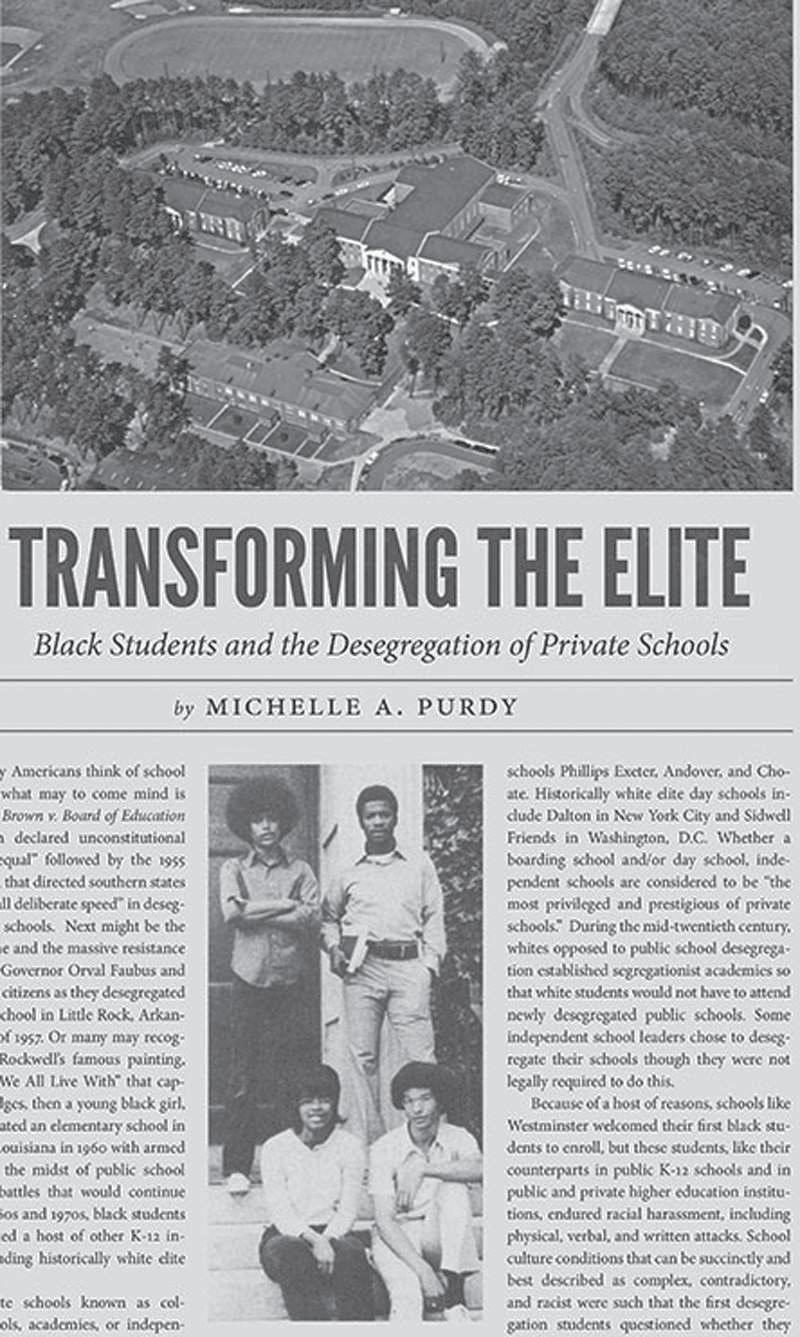
decision shaped the lives of the young black students who navigated entrenched racism on both institutional and personal levels.
While Westminster was not the first private school to desegregate, it was one of the first nationally recognized schools to face the desegregation challenge in the South. Its prestige and its location in Atlanta set the stage for it to become an influential national leader in private school

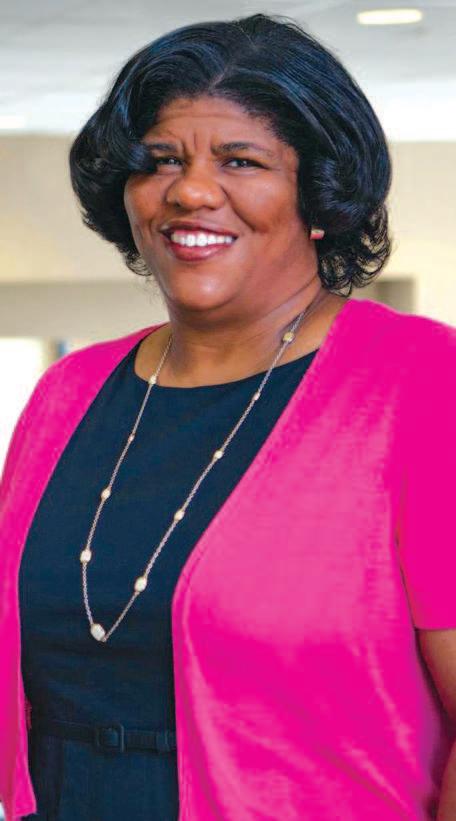
“It explores issues of race and identity, diversity and inclusion, education and equity that are as important now as they were then.”
– Michelle A. Purdy
staircases and vaulted ceilings.
desegregation.
With a sprawling 180-acre suburban campus and now one of the largest private school endowments in the nation, Westminster long has been an attractive option for Southern families who did not want to send their children to more established boarding schools in the Northeast. Located among luxurious homes in Atlanta’s Buckhead neighborhood, the campus was distinguished by its white columns, grand double
In the early 1960s, Atlanta was itself struggling to establish a new identity. Headquarters to huge corporations such as Coca-Cola, the city billed itself as the “unofficial capital of the New South” and “the city too busy to hate.” Atlanta was eager to avoid the violence that had marred desegregation efforts in other cities, but its culture remained rooted in white Southern traditions.
For King, Bond and
Abernathy, all residents of Atlanta and leaders of the Southern Christian Leadership Council in 1963, their efforts to break the private school color barrier ended with mixed results.
Breaking the barrier
Martin Luther King III was denied access to Atlanta’s Lovett School, causing a rift that led the school to sever its ties with the Episcopal Church, an early proponent of integration. Abernathy’s daughter was unable to pass the admission test to Atlanta’s Trinity private school, but Bond’s daughters were eventually accepted for enrollment there in the spring of 1963.
At Westminster, the color barrier would be broken not by the children of prominent black civil rights leaders, but by a small band of young black men and women from middle-class families who began there in the fall of 1967: Bill Billings, Dawn Clark, Isaac Clark, Janice Kemp, Michael McBay, Jannard Wade and Wanda Ward.
Most of the “fearless firsts” came from families with welleducated parents, including some that worked as teachers at local black colleges and schools. The products of strong education in Atlanta’s segregated black elementary schools, several had scored well enough on admissions tests to be offered scholarships from the Stouffer Foundation, a fund started by a Reynolds tobacco heir to support the education of young black men.
While Westminster opened its doors to black students, some white students were less than welcoming.
On his first day, McBay was forced to hide in the bathroom after being teased and harassed
See PURDY, C13

‘‘ Life’s most persistent and urgent question is, ‘What are you doing for others?’
– Martin Luther King Jr.

Edward Jones is proud to join the St. Louis American in honoring Dr. King’s memory and celebrating his achievements.

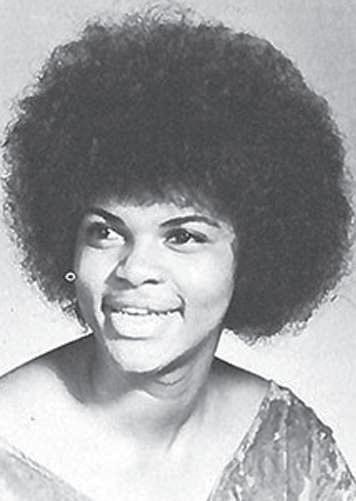
Wanda Ward, who entered Westminster School in 1967, became the school’s first black female graduate in 1972. She attended Princeton and earned a PhD in psychology at Stanford. Her career at the National Science Foundation ended with role as senior adviser to the director.
Continued from C11
by a group of white students he believed to be football players. Other white students made a habit of putting the empty exoskeletons of emerged locusts (cicadas) in his hair, laughing when he had difficulty removing them from his afro.
Jannard Wade, who entered Westminster in 1967, was voted most valuable player on the school’s state championship football team. He attended Morehouse College and had a successful career in life insurance.
The first black students arrived in an atmosphere still dominated by white Southern traditions, including a fall dance in which the school was decorated as a plantation and male students encouraged to dress in Confederate uniforms. The school’s annual Christmas Fund Drive included a slave auction fundraiser.
When the school decided to desegregate its women’s dormitory for the first time in 1970, it told white students to arrive a day early so they could be warned that two black girls would soon join their ranks. The black girls “were different,” they were told, but they should not be “afraid.” Still, the school’s administration, at times, did its best to make institutional changes to support the desegregation process. It fired the school’s football coach after he used a racial slur to urge the team, including Wade, its first black player, to work harder.
Black students also had strong support from black staff at the school, including the president’s assistant who volunteered to drive Ward across town to southwest Atlanta. Willie Harris, the school’s black athletic trainer and bus driver, was a strong supporter of Wade and other black athletes at the school. Years later, Purdy interviewed some of the school’s first black students,
documenting how they went on to attend top-notch universities and build successful careers.
Dawn Clark enrolled at St. Andrews University and later earned an MBA from the University of Tennessee. McBay, Wade and Ward enrolled at Stanford University, Morehouse College, and Princeton University, respectively.
Malcolm Ryder, who entered Westminster in 1968, had his dorm room vandalized and a knife left sticking in his closet door; the harassment eased after an older white student took him under his wing.
Ryder earned an art degree from Princeton and was a photographer for the National Endowment for the Arts before moving to Oakland, Calif., to run his own technology consulting company.
McBay later earned his medical degree from the University of California, Los Angeles and trained in emergency medicine nearby at King/Drew Medical Center. Ward earned a doctoral degree
at Stanford and taught at the University of Oklahoma before launching a long career at the National Science Foundation.
Although she was not interviewed for the book, another early graduate, Lisa Michelle Borders, would attend Duke University and eventually become vice president of global affairs at Coca-Cola. Borders also was president of the Women’s National Basketball Association and of the Atlanta City Council.
“The first black students graduated from Westminster having courageously navigated the school’s racist and paradoxical school climate by excelling inside and outside the classroom,” Purdy concludes.
“These students relied on their own educational experiences in mostly segregated black schools, their talents inside and outside of the classrooms, their work ethic, their families and communities, and the efforts of particular white and black individuals at Westminster.”
Nationally recognized educator and civil rights activist Irene Leota Moore Wright passed away on January 10 at age 91. The mother-in-law of KAI Founder Michael Kennedy Sr. and grandmother of KAI CEO Michael Kennedy Jr., she was named to the first White House Panel on Mental Retardation by President John F. Kennedy in 1961.
Wright held faculty positions at Atlanta University, Clark College, Spelman College, Harris Teachers College, Tuskegee Institute, Albany State College and Saint Louis University and was published in the areas of speech and hearing problems, teacher programs, the trainable child and deaf education.

She served as vice president of the Albany Civil Rights Movement and was the dean of Students at Albany State College but resigned in protest when she learned that students had been expelled for demonstrating against racial violence and discrimination.
She went on to establish seven schools for those with intellectual disabilities in the South; developed programs for children of parents with drug addictions; served on federal review committees, including the National Center for Law and the Handicapped at Notre Dame University and the Missouri Children’s Trust Fund; and worked as a consultant to the Commissioner of Education in St. Thomas, Virgin Islands.
While serving on the White House panel, she met the president’s sister Eunice Shriver and together they shaped programs that countered violence and discrimination against those who had
intellectual disabilities or faced racial injustices. She continued to work when her husband Thomas V. Wright Sr. was transferred to Okinawa as an officer in the U.S. Air Force. The School of Hope, which she founded and directed, taught children with special needs whose families were in the military. Prior to leaving Okinawa, she received the highest award presented to a civilian, the Unsung Heroine Award, for her tireless efforts in getting the school approved and supported by the Department of Defense. The School of Hope has been dedicated to her memory. She is survived by her husband of 58 years, Thomas V. Wright Sr., and her children: Vicki Hamilton (Harold), Lynn Kennedy (Michael), Traci Wright (Thomas Wright, Jr.), and Marcia Buresch; 10 grandsons: Arthur (Angelica) and Brandon, Michael, Chad, Jon, Sam, Marcus (Sarah), James Trey (Sina), Simeon, and Brett (Betty); and five great-grandchildren: Titus, Bella, Jaz’min, Jaire, and Levi. She also leaves her only living sibling, Jean Collins, and nieces and nephews she adored and all of their children. She was preceded in death by her beloved son, Thomas Victor Wright Jr.; her sisters, Augusta Mae, Louise Worthington, and Judelle Shaw; and her brother, Julian Moore.
A Celebration of Life Service honoring her is scheduled for January 23 in Atlanta, Georgia.
In lieu of flowers, the family asks that donations be made to either Albany State University in Albany, Georgia or Spelman College in Atlanta, Georgia.
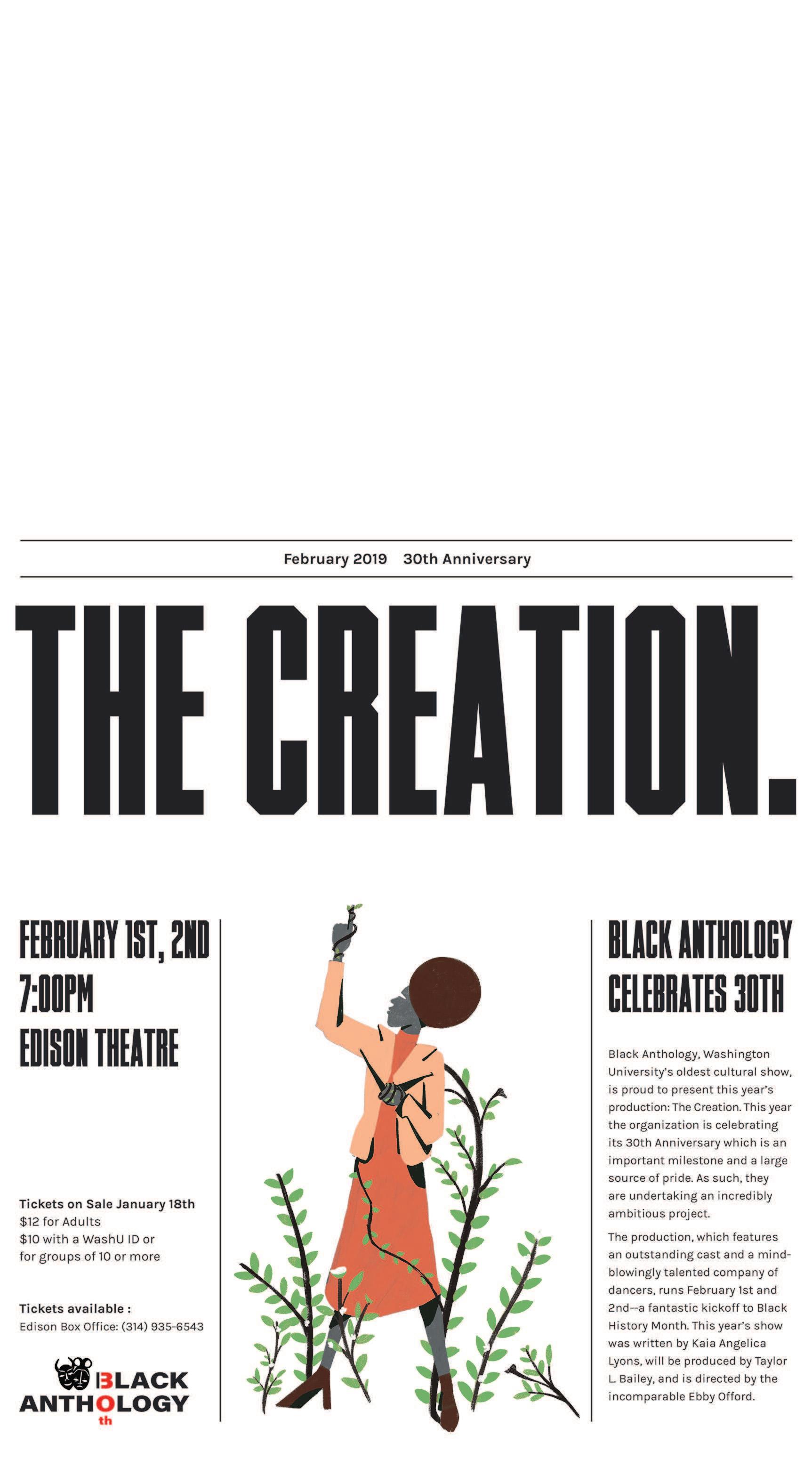





By Kenya Vaughn Of The St. Louis American
“The Revolution is relationship,” Amy Loui said while donning a flowy shrug with a voice that somehow manages to be both tender and authoritative towards the end of the Black Rep’s world premiere presentation of “Canfield Drive.” The tone rings familiar for those who spent any significant time either as a participant or observer of the unrest in Ferguson.
She was embodying Elizabeth Vega – and using Vega’s own words. By play’s end Loui also played Darren Wilson, Rabbi Susan Talve, a longtime Ferguson resident who had a hand in the “I Heart Ferguson” campaign and many other faces from the unrest that made our region a
flashpoint for conversations on law enforcement and the black community following the death of unarmed teen Michael Brown. Rev. Starsky Wilson, local historian Dr. John A. Wright, Ferguson Mayor James Knowles III, outgoing Ferguson Police Chief Delrish Moss are among those whose reflections on the unrest were shared by way of “Canfield Drive.”
August 9, 2014 placed Ferguson became a part of American History – an innocuous municipality in St. Louis County became the setting for a chapter in social justice and protest for today’s generation.
Through interviews, playwrights Kristen
By Kenya Vaughn Of The St. Louis American
“I have this saying, ‘your natural is your natural,’” said Tendai “The Hair Whisperer” Morris.
The phrase is to remind her clients and consultees that, much like height and body types, natural hair varies by the individual – and what you can do with it is based on what you have.
“You would be surprised – or maybe you wouldn’t – by how many women there are that just don’t know their hair in its natural state,” said Morris, creator of the Healthy Hair Solutions product line, which is featured at Macy’s as part of the Macy’s Market Place program in St. Louis, San Antonio, Texas and Atlanta.
“There are so many ways to make your hair beautiful – either straight or curly –in a healthy way.”
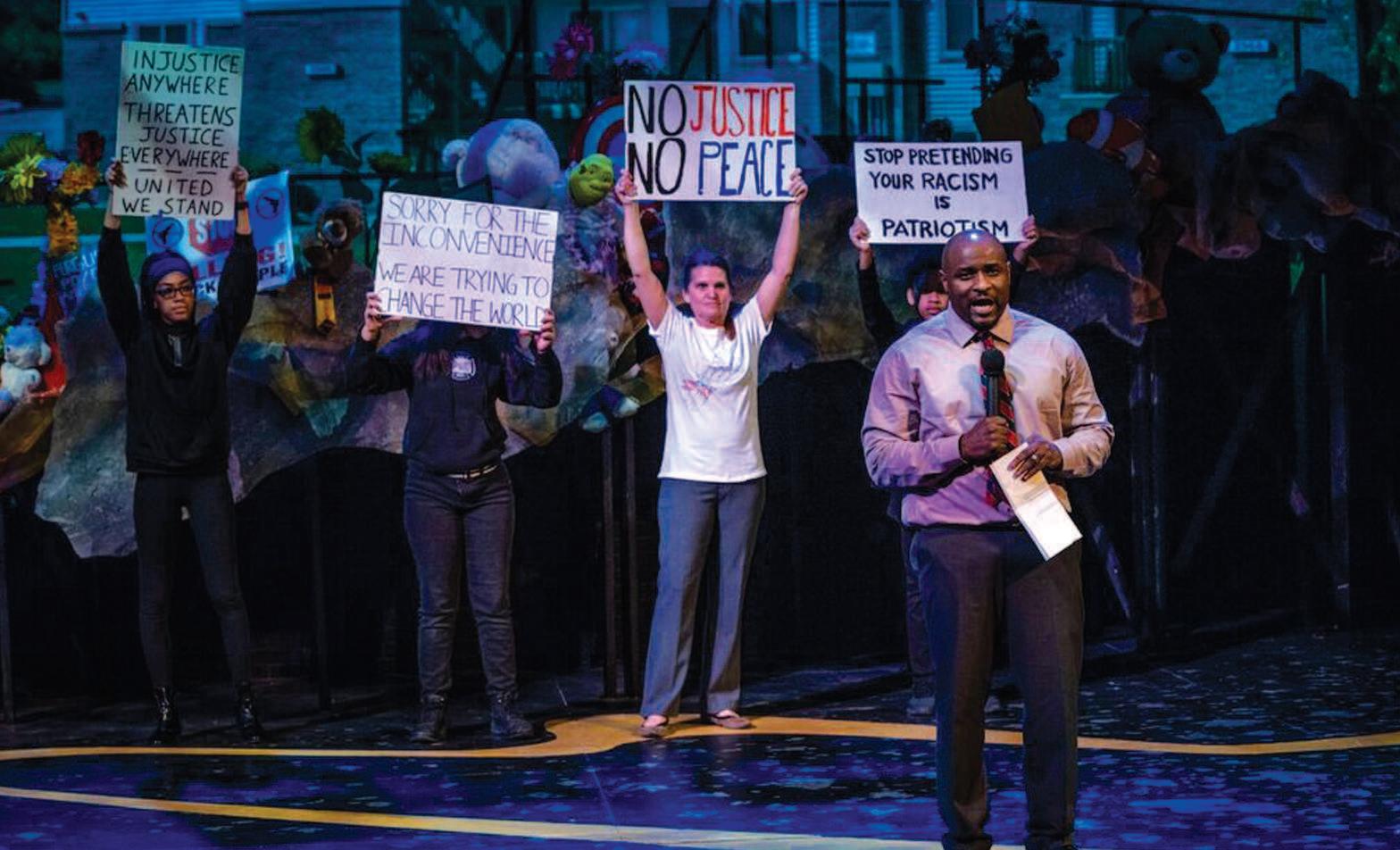

‘Joyus Jubilee’ Cathedral Concerts series celebrates black sacred music
By Evie Hemphill and Lara Hamdan Of St. Louis Public Radio
“It’s going to be joyous indeed,” said Scott Kennebeck, executive and artistic director for Cathedral Concerts ahead of the premiere of their concert series to celebrate the influence of African American gospel music at The Cathedral Basilica of St. Louis He first booked the American Spiritual
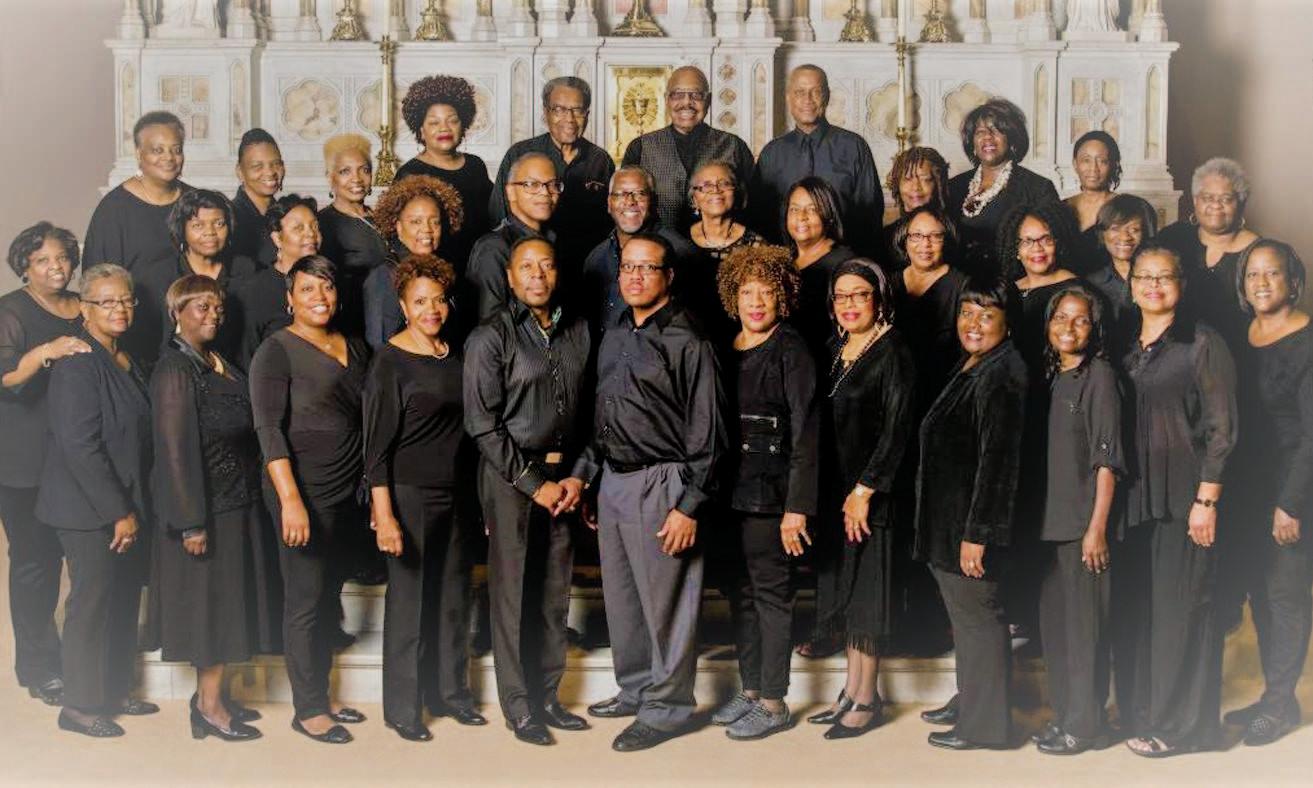

By American Staff
first Poet Laureate. He passed away on December 23 after a battle with colon cancer at the age of 73.
This weekend, Castro’s family will host a public memorial, celebrating his life and legacy with life reflections, poetry and music. The event will take place at 3 p.m. on Sunday, January 20 at Central Reform Congregation.
“I’m deeply saddened that he passed away, but we celebrate the life that was,” said poet and educator MK Stallings. Castro spent nearly five decades as a prominent member of the St. Louis literary scene –almost as soon after he arrived in St. Louis from New York City to attend graduate school at Washington University.
He received his undergraduate degree in English literature from the State University of New York at Buffalo and his doctorate in American literature with a focus on Native American mythology and culture from Washington University in St. Louis.
He was one of the founding poets of River Styx literary journal and poetry reading series at Duff’s, which grew out a series of jam sessions

How to place a calendar listing
1. Email your listing to calendar@stlamerican. com OR
2. Visit the calendar section on stlamerican.com and place your listing
Calendar listings are free of charge, are edited for space and run on a space-available basis.
For full list of events throughout the St. Louis region commemorating the Rev. Dr. Martin Luther King Jr. Holiday, see the MLK Activities Calendar in the Dr. King special section of this week’s paper.
Jan. 23, The Pageant Welcomes Noname with special guest Smino, The Pageant, 6161 Delmar. For more information, visit www. thepageant.com.
Sat., Feb. 9, 8 p.m., Sheldon Concert Hall presents Diane Reeves. 3648 Washington Blvd., 63108. For more information, visit www. thesheldon.org.
Sun., Feb. 10, 5:30 p.m., Breakaway Productions & Witherspoon Entertainment present a Valentine’s Weekend Kick-Off with Will Downing. Special guest Lamont Hadley. Givens Auditorium, Harris Stowe, 3026 Laclede Ave., 63103. For more information, visit www. metrotix.com.
Sun., Feb. 17, 7 p.m., The Sophisticated Soul Tour starring Lalah Hathaway, Lyfe Jennings and Raheem DeVaughn, Stifel Theatre. For more information, visit www. stifeltheatre.com.
Mon., Feb. 18, 8 p.m., Travis Scott: Astroworld - Wish You Were Here Tour 2, Enterprise Center. For more information, visit www. ticketmaster.com
Thur., Jan. 17, 7 p.m., Art of Live Festival feat. Scrub & Ace Ha and Tonina. Gaslight Studio, 4916 Shaw Ave., 63110. For more information,
visit www.metrotix.com.
Sat., Jan. 19. 8 p.m., Sheldon Concert Hall presents Midwest Avengers: Hip Hop Live. 3648 Washington Blvd., 63108. For more information, visit www.metrotix.com.
Sun., Jan. 27, 5:30 p.m., The Drew Project presents Urban Jazz. The Ambassador, 9800 Halls Ferry Rd., 63136. For more information, visit www. eventbrite.com.
Sun., Jan. 27, 6 p.m., A Journey With Anita: Anita Baker Tribute. Signature Room, 9002 Overland Plaza, 63114. For more information, visit www.ifejacobsmusic.com.
Sun., Jan. 27, 7:30 p.m., An Evening with Robert Dillard. The Gaslight Theater, 368 N. Boyle Ave., 63108. For more information, visit www. eventbrite.com.
Jan. 30 – Feb. 3, Jazz St. Louis presents Bistro All Stars. Feat. Tia Fuller, Sean Jones, Peter Martin, and Warren Wolf. Jazz at the Bistro, 3536 Washington Ave., 63103. For more information, visit www.jazzstl.org.
Mondays in January, The Monday Night Mixer hosted by the Keith Bowman Quartet. Dark Room at the Grandel, 3610 Grandel Sq., 63103. For more information, visit www.thedarkroomstl.com.
Sat., Feb. 2, 5 p.m., Femfest 5: An All-Female Showcase Fubar, 3108 Locust St., 63103. For more information, visit www.do314.com/events.
Jan. 18 – 20, Loop Ice Carnival. Jan. 19: Snow Ball. Jan. 20: Ice Carnival. Delmar Loop, 63112. For more information, visit www. visittheloop.com.

Kenya Vaughn recommends

Sat., Jan. 19, 10 a.m., St. Louis Charter Schools Family Fun Fair. Grand Hall, 2319 Chouteau Ave., 63103. For more information, visit www.mocharterschools.org.
Sat., Jan. 19, 2 p.m., Save Our Neighbor-Hoods Gala: Bringing Wakanda to St. Louis. BPV Crown Room, 601 Clark Ave., 63012. For more information, visit www. eventbrite.com.
Sat., Jan. 19, 8 p.m., Alpha Kappa Alpha Sorority, Inc., Omicron Eta Omega Chapter & The Ivy Foundation of St. Louis present the AKA 111 Anniversary Party. Lambert Airport Concourse B, 10701 Lambert International Blvd., 63145. For more information, visit www.eventbrite.com.
Sun., Jan. 20, 12 p.m., St. Louis’ Best Bridal Show St. Charles Convention Plaza, 1 Convention Center Plaza, 63033. For more information, visit www.stltoday.com.
Sun., Jan. 20, 2 p.m., Alpha Kappa Alpha Sorority, Inc., Gamma Omega Chapter and Omega Psi Phi Fraternity,
Inc., Upsilon Omega Chapter host the 2019 Salute to the Veterans Sunday Supper. Omega Center, 3900 Goodfellow Blvd., 63120. For more information, visit www. eventbrite.com.
Sun., Jan. 20, 6 p.m., Kappa Alpha Psi Fraternity, Inc., East St. Louis Alumni Chapter presents the Kappa Klassic. 609 St. Louis Ave., East St. Louis, IL. 62201. For more information, visit www. eventbrite.com.
Jan. 21, 28th annual St. Louis Arts Awards, Chase Park Plaza Royal Sonesta Hotel. For more information, visit KeepArtHappening. org/2019ArtsAwards.
Jan. 25 – 27, COCA presents Momentum. A mix of cuttingedge hip-hop & contemporary dance across a broad range of styles. Xavier Hall, Saint Louis University, 3733 West Pine Mall, 63108. For more information, visit www.cocastl. org.
Sat., Jan. 26, 9 a.m., Saint Louis Zoo Job Fair 2019. Dress code for the job fair is business casual. 1 Government

Film Screening of Eve’s Bayou. Immediately following the film, there will be a brief Q&A session with Kasi Lemmons, the film’s writer and director. See FILM for details.
Dr., 63110. For more information, visit www.stlzoo. org.
Sat., Jan. 26, 1 p.m., Healing Action Network, Inc. 2nd Annual Celebration of Hope. Celebrate victims and survivors and highlight the work being done in our region. Goldfarb Schoool of Nursing, BJC, 4483 Duncan Ave., 63110. For more information, visit www.eventbrite.com.
Sat., Jan. 26, 6 p.m., An Evening with the Cardinals. Cardinals Hall of Famers Jim Edmonds and Chris Carpenter will be the featured guests along with emcee and voice of the Cardinals, Dan McLaughlin. St. Louis Union Station, 1820 Market St., 63103. For more information, visit www.thenccs.org.
Sun., Jan. 27, 3 p.m., St. Peters AME and Ward Chapel AME Churches Jazz Brunch featuring 3 Central Jazz Group. Anne O. McDonald Family Center, 11410 Old Halls Ferry Rd., 63033. For more information, call (314) 381-3345 or (314) 741-0112.
Jan. 31 – Feb.3, Disney On Ice celebrates 100 Years of Magic, Enterprise Center in St. Louis. Tickets are available by calling Ticketmaster at 800745-3000 or visiting www. Ticketmaster.com. To discover more about Disney On Ice, go to www.Disneyonice.com.
Sun., Jan. 27, 3 p.m., St. Peters AME and Ward Chapel AME Churches Jazz Brunch featuring 3 Central Jazz Group. Anne O. McDonald Family Center, 11410 Old Halls Ferry Rd., 63033. For more information, call (314) 381-3345 or (314) 741-0112.
Jan. 31 – Feb. 3, Disney on Ice Celebrates 100 Years of Magic. Be charmed by a cast of over 50 unforgettable Disney characters. Enterprise Center, 1401 Clark Ave.,
63103. For more information, visit www.enterprisecenter. com.
Fri., Feb. 1, 11:30 a.m., St. Louis Go Red for Women Luncheon. American Heart Association, 460 N. Lindbergh Blvd., 63141. For more information, visit www. ahastlouis.ejionme.org.
Sat., Feb. 2, 2:30 p.m., Better Family Life invites you to the 6th Annual Jr. Unity Ball: Celebrating Our Legacy Evening includes poetry slam, art activities, entertainment, and more. 5415 Page Blvd., 63112. For more information, visit www.bflyouth.org.
Sat., Feb. 2, 6:30 p.m., Heart & Soul – A Night in the City of Love. The evening will feature silent and live auctions, a wine pull, and more. Proceeds benefit Cardinal Glennon. Chase Park Plaza, 212 Kingshighway Blvd., 63108. For more information, visit www.glennon.org/heartand-soul.
Fri., Jan. 25, 7 p.m., St. Louis County Library hosts author Anthony Ray Hinton, author of The Sun Does Shine: How I Found Life and Freedom on Death Row 2019 Black History Keynote Event. Headquarters, 1640 S. Lindbergh Blvd., 63131.
Sun., Jan 27, 7:30 p.m., Poetic Justice with featured poet Rudy Francisco, Grandel Theatre, 3610 Grandel Square. For more information, visit www.thegrandel.com.
Jan. 17- Jan 27, Max and Louie Productions presents Love, Linda, directed by Ken Page, Marcelle Theater, 3310 Samuel Shepard Drive (3 blocks east of Grand Blvd). Tickets are on sale

at metrotix.com and by phone at (314)) 534-1111. For more information, visit maxandlouie. com
Through Jan. 26, Fox Theatre presents Anastasia Anya enlists the aid of a dashing conman and a lovable ex-aristocrat to embark on an epic adventure to help her find home, love, and family. 527 N. Grand Blvd., 63103.
Through Jan 27, The Black Rep presents the world premiere of Canfield Drive, The Edison Theatre at Washington University, 6445 Forsyth. For more information, visit www.theblackrep.org.
Feb. 1 – 2, Black Anthology 30th Anniversary: The Creation. A play written, produced, and performed by students at Washington University. Edison Theatre, 6465 Forsyth Blvd., 63015. For more information, call (314) 935-7879 or email black. anthology@gmail.com.
Feb. 1 – 2, TLT Productions presents Black AF. The exploration of blackness, love, culture and the AfricanAmerican experience brought to life through original works of dance. Marcelle, 3310 Samuel Shepard Dr., 63103. For more information, visit www.metrotix.com.
Thur., Jan. 17, 7 p.m., Inner Light Photography invites you to Ain’t I American? A Pictorial Question. Thomas Dunn Learning Center, 3113 Gasconade St., 63118. For more information, visit www. facebook.com.
Fri., Jan. 18, 8 p.m., One in a Million: Aaliyah DJ Tribute +Art Show. Urb Arts, 2600 N. 14th St., 63106. For more information, visit www. eventbrite.com.
Fri., Feb. 1, 6 p.m., Journeys of the African Spirit Exhibit Opening Night. An exhibit born out of the recent struggles that African people in America are facing, mostly in the City of St. Louis. UrbArts, 2600 N. 14th St., 63106. For more information, call (314) 7183791.
Through February 3, The Saint Louis Art Museum presents Graphic Revolution: American Prints 1960 to Now, Saint Louis Art Museum. One Fine Arts Drive, Forest Park. For more information, call (314) 721-0072 or visit www.slam.org.
Through February 10, Kehinde Wiley: Saint Louis, Saint Louis Art Museum. One Fine Arts Drive, Forest Park. For more information, call (314) 721-0072 or visit http:// www.slam.org/exhibitions/ kehinde-wiley.php
Through Feb. 28, National Blues Museum presents Our Living Past: A Platinum Portrait of Music Maker Photographer Timothy Duffy provides a look at the true pioneers and forgotten heroes
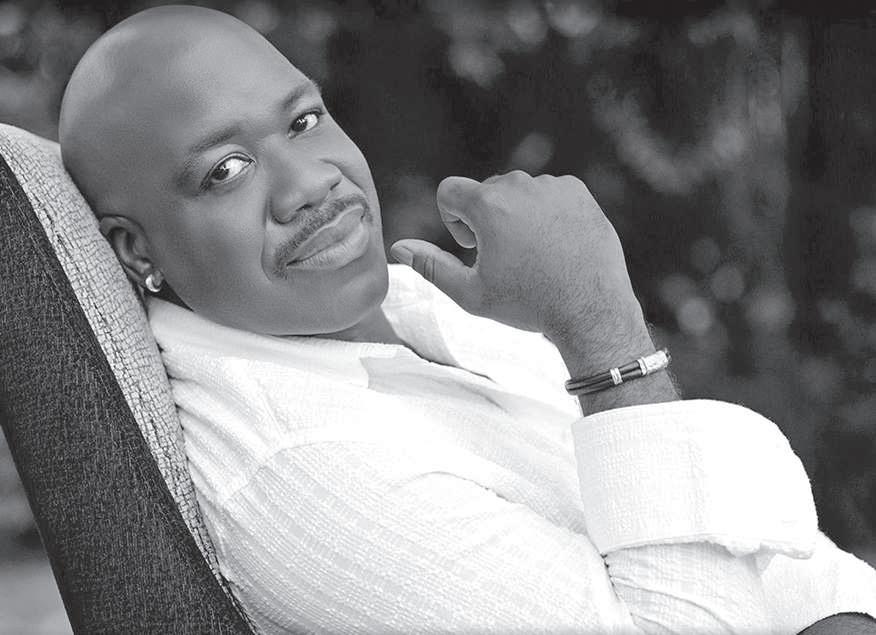
of American roots music. 615 Washington Ave., 63101. For more information, visit www. nationalbluesmuseum.com.
Thur., Jan. 17, 5 p.m., St. Louis Public Library presents Violence and Black Migration. Cheeraz Gormon will explore the trauma of violent crime on AfricanAmerican communities and its impact. Carpenter Branch, 3309 S. Grand Blvd., 63118. For more information, visit www.slpl.org.
Sun., Jan. 20, 1 p.m., Representation & Responsibility: Racial and Gender Equity in Film and Television. A panel discussion. Regional Arts Commission, 6128 Delmar Blvd., 63112. For more information, visit www. opera-stl.org.
Wed., Jan. 23, 12 p.m., Lunch & Learn with Michael McMillan. Guests are welcome to bring a brown bag lunch. Deaconess Center for Child Well-Being, 1000 N. Vandeventer Ave., 63113. For more information or to RSVP, visit www.facebook.com.
Thur., Jan. 24, 5:30 p.m., FOCUS St. Louis presents Prosecutors and Future of Public Safety St. Louis Panelists include Wesley Bell, Kim Gardner, Jeff Jensen, and Tim Lohmar. Registration required. Missouri History Museum, 5700 Lindell Blvd., 63112. For more information, visit www.focus-stl.org.
Sat., Jan. 26, 10 a.m., The Links, Inc., Gateway
Chapter and Harris Stowe State University present a Human Trafficking Forum Emerson Performance Center, 3026 Laclede Ave., 63013. For more information, visit www. eventbrite.com.
Thur., Feb. 7, 6:30 p.m., Hidden Figures in St. Louis’s African-American History. Hear from Ms. Gail Delaney from The Griot, handle various artifacts, and more. Maplewood Public Library, 7550 Lohmeyer, 63143. For more information, visit www. maplewoodpubliclibrary.com.
Sat., Feb. 9, 1 p.m., Conversation on Arts Education: Innovation in Public Schools. Touching on accessibility, education design, and innovative tools for educators and policy workers. Pulitzer Arts Foundation, 3716 Washington Blvd., 63108. For more information, visit www. pulitzerarts.org.
Fri., Feb. 1, 11:30 a.m., St. Louis Go Red for Women Luncheon. American Heart Association, 460 N. Lindbergh Blvd., 63141. For more information, visit www. ahastlouis.ejionme.org.
Sat., Feb. 2, 2:30 p.m., Health Healing & Triumph Awareness Benefit Banquet. This benefit is to build health awareness and reduce stigma associated with medical illnesses. Engineer Club of Saint Louis, 4359 Lindell Blvd., 63108. For more information, visit www. eventbrite.com.
Thur., Feb. 7, 5 p.m., Saint Louis Crisis Nursery presents
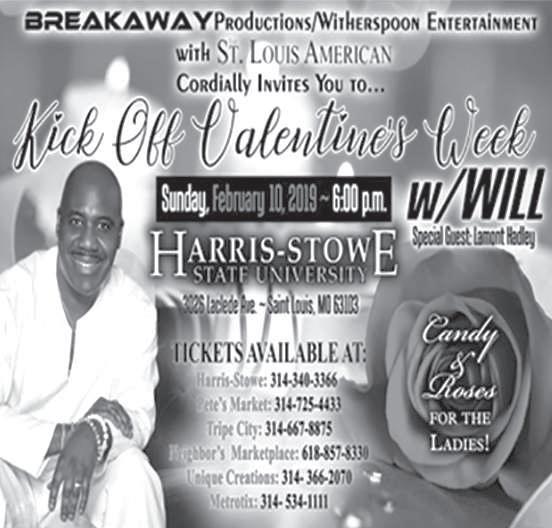
Eat. Shop. Love. There will be shopping specials, a silent auction and more. Bring gently used (or new) purses filled with toiletries, gas cards, and accessories to donate. Plaza Frontenac - North Court, 1701 S. Lindbergh Blvd., 63131. For more information, visit www. crisisnurserykids.org.
Sun., Jan. 20, 10:30 a.m. & 3:30 p.m., New Salem M.B. Church invites you to Pastor Michael Franks 4th Year Anniversary: Called to Provoke Love. 10:30 service: Dr. Charles Pearson; 3:30 service: Rev. Michael
Jones. 1905 Arlington Ave., 63112. For more information, call (314) 381-9577.
Sun., Jan. 20, 3 p.m., National Alliance of Faith and Justice hosts Justice Sunday. This year’s observance will include a call to action to engage to meet the needs of students. Jennings High School, 8850 Cozens Ave., 63136. For more information, visit www. facebook.com.
Fri., Jan. 18, Glass starring Samuel L. Jackson opens in theatres nationwide.
Breakaway Productions and Witherspoon Entertainment present a Valentine’s Weekend Kick-Off with Will Downing. For more information, see CONCERTS.
Sat., Jan. 19, 6:30 p.m., Film Screening of Eve’s Bayou. Immediately following the film, there will be a brief Q&A session with Kasi Lemmons, the film’s writer and director. Winifred Moore Auditorium, Webster University, 470 E Lockwood Ave., 63119. For more information, visit www. opera-stl.org.
Jan. 31, 7 p.m., St. Louis Black Short Film Screening featuring the work of Travis Haughton (“I’m Not the Only One”) and Philip Irving (“Love Thy Neighbor). Webster University Center, 470 E. Lockwood Ave.

Continued from D1
Since the new year often brings the “big chop” or the beginning of one’s transition from relaxed to natural hair, Healthy Hair Solutions will be holding a Natural Hair Workshop to help them find out. At the ticketed event on Sunday, January 20 at Salon Prive, guests who attend will learn how to properly identify textures 1-4 and their respective subcategories. They will be schooled on how to hydrate and maintain moisture balances, minimize shedding and breakage as well as style tips for all texture types.
Natural hair styling technique demonstrations and Morris’ popular Texture Talk is also on the schedule of events.
“There are so many ways to make your hair beautiful – either straight or curly – in a healthy way,” Morris said. “’Texture Talk’ is more like a consultation on a bigger scale with more people – a group consultation.”
For the past several years, Morris has made her life’s work helping women get acquainted with their hair and adjust to styling their tresses without chemical assistance.

Healthy Hair Solutions, a product line founded by Tendai
Even with the natural hair revolution in full swing, her mission is not without its challenges. There are the unrealistic expectations. Some assume that after a few months of going relaxer- and heat-free means their hair will morph itself into the molds of their celebrity hair crush. And if they don’t wake up one morning looking like Tracee Ellis Ross, then a couple of YouTube tutorials, Facebook videos or Pinterest step-bysteps ought to do the trick. They rarely do.
“The problem is they don’t understand their starting point,” Morris said. “I’m trying to get them to understand their starting point and what their choices are with their textures.
Usually a sense of failure and frustration follows. According to Morris, the root of the problem (all pun intended) is that in order to know what works for your hair, you have to know your hair.
“It opens a wide variety of avenues of natural hair,” said Morris. “I basically guide them to their reality – and, once I do that, we’re all good.” Morris comes from a long line of stylists and barbers.
Continued from D1
featuring poets and musicians in the early 1970s. Castro started and hosted several poetry programs for radio station KDHX. He authored more than one dozen books of his own poetry and co-translated volumes of contemporary Hungarian poetry. His 2018 collection, “We Need to Talk,” contained work spanning five decades of writing.
In addition to his work as a poet and translator, he was a beloved professor at the University of MissouriSt. Louis and Lindenwood
University.
“He’s always been present, he’s always been supportive. He’s always made space for younger poets,” Stallings said. Castro also served as the city’s inaugural Poet Laureate from 2014-2017.
One of his last public appearances was at City Hall for the installation of his successor, longtime friend Shirley Bradley LeFlore.
“He was always with the poets,” Stallings said. “And he was also recognized by his peers as being a word warrior within the city of St. Louis.”
The public memorial for Michael Castro will take place from 3 p.m.-7 p.m. at Central Reform Congregation, , 5020 Waterman Blvd., St. Louis, MO 63108.
With nearly three decades of experience in the hair industry, Morris is excited to carry on the family legacy by building knowledge as the industry continues to make a space for women looking to embrace their God-given coils and curls.
“My goal is to give them the tools they need to go the long haul of this natural hair journey,” Morris said.
Healthy Hair Solutions The Natural Hair Workshop will take place from 3 p.m. – 6 p.m. at Salon Prive, 12420 Olive Blvd. in Creve Coeur. For more information, visit https://www. facebook.com/thwhealthyhairsolutions/ .
In lieu of flowers, the family asks that donations be made to any of the following non-profits to which Castro was involved:
• 7th Grade Poetry Foundation – 7GP.org/ donate
• Urb Arts – urbarts. org; mail: 2600 N. 14th Street, St. Louis, 63016
• Gitana Productionsgitana-inc.org; mail: P.O. Box 300322, St. Louis, MO 63130
Please note “Dr. Michael Castro” in donations. For more information about the celebration, visit the Facebook event link at: https://www.facebook. com/events/789373888072773/ ?ti=icl
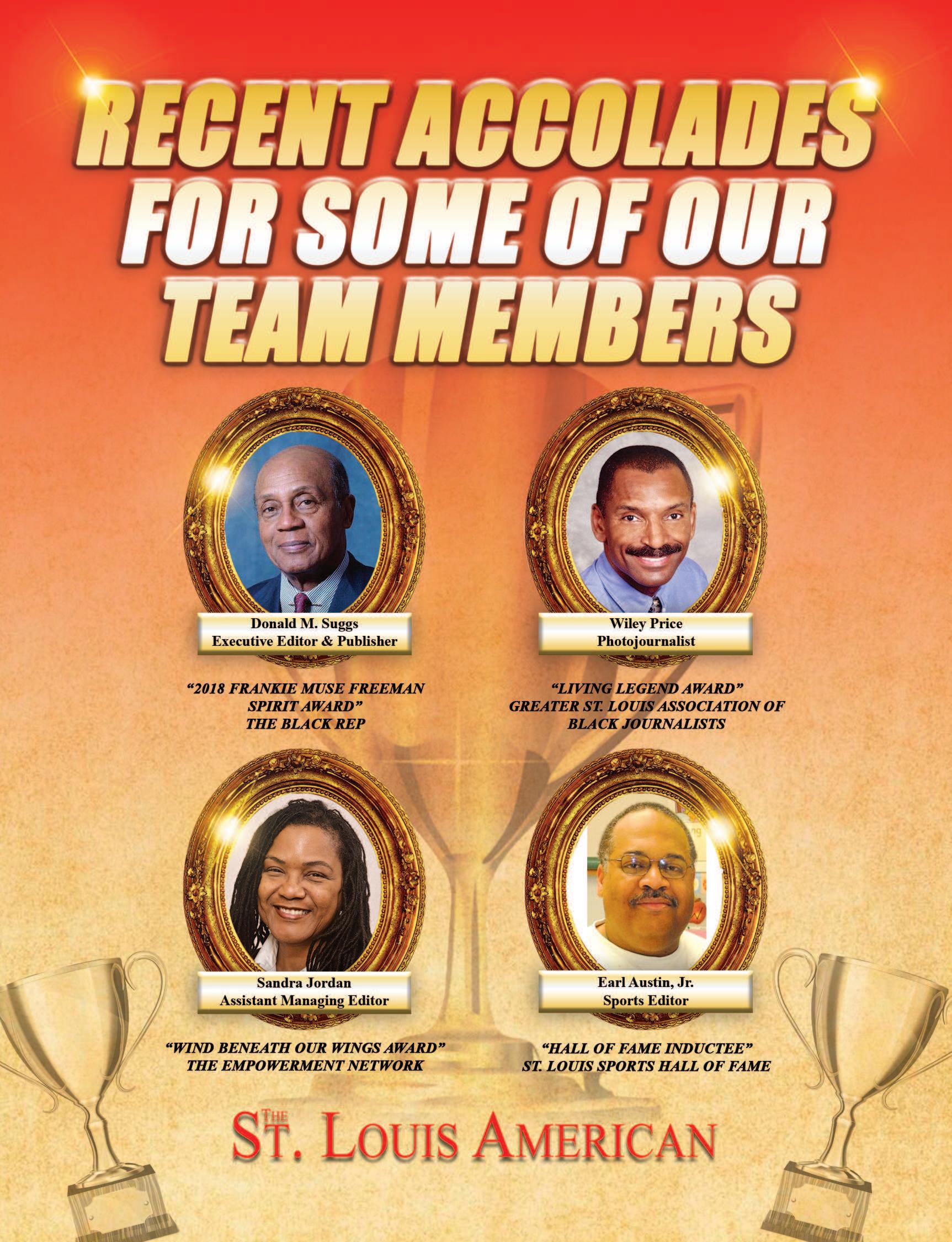
Continued from D1
Adele Calhoun and Michael
Thomas Walker used the faces of Ferguson and local subject matter experts to frame their creative response to the movement that Brown’s death incited.
Four actors, including Calhoun herself, are charged with portraying dozens of characters who the world came to know as the unrest unfolded from the moment Brown’s body lie in the street next for which the play is named.
Broadcast news anchors Imani Duncan-Ward (Adele Calhoun) and Brad O’Connor (Christopher Hickey) are fictional. But the rest of the monologues are pulled from real interviews from the actual people that were thrust into the unrest – on one side or the other – lend a refreshing level of authenticity to the production. Duncan-Ward and O’Connor are on opposing sides of the Michael Brown argument on their network program “Battleground.”
As a black woman, Duncan-Ward is naturally sympathetic to the black experience. O’Connor, a white man, continually attempts to suggest that he is bipartisan and basing his opinions on fact – but his implicit bias bleeds through.
The two engage in heated conflict surrounding the Ferguson unrest and the origins of the unrest – as well as the opinions imposed on Brown and those who protested as a result of his death. They stand in stark contrast until O’Connor sees fractured relationship between black people in the region and the police firsthand.
By plays end, “Canfield Drive” delivers a fair representation of the Ferguson spectrum – and a fine piece of theatre that illustrates both the transformative power of the arts and its relevance and necessity within a social movement.
The four players charged with carrying the load of characters weaved together in the name of “Canfield Drive”
Continued from D1
Ensemble, whose mission is to
further the African-American spiritual tradition, but also wanted to expand on that.
“I thought, ‘Isn’t there a way we can make this bigger than just a one concert event on February 1?’” Kennebeck recalled.
One show became three. The first takes place this Friday, Jan. 18 at 8 p.m.
The Cathedral Concerts later connected with the local groups Gospel Symphonic Choir and the North City Deanery Choir. Kennebeck said he hopes to see the “Joyous Jubilee” become an annual event.
Thedford said the Gospel Symphonic Choir will sing what they call sacred music, which includes spirituals, anthems and contemporary gospel music.
“It certainly is a wonderful experience, first of all, to sing in such a room like the [Cathedral Basilica] and for us

“Canfield Drive” delivers a fair representation of the Ferguson spectrum – and a fine piece of theatre that illustrates both the transformative power of the arts and its relevance and necessity within a social movement.
are triumphant and rise to the directorial demands Ron Himes must have required to pull off such a production. Eric Conners effectively rounded out the cast – with portrayals of Wright, Wilson, Moss and others.
Hickey’s depiction of political figure Jeff Smith is absolutely uncanny. And Adele Calhoun’s portrayal of the frustration with her on screen partner’s unwillingness (or inability) to see Brown’s humanity as he piles on criminalization and character assassination will resonate with anyone who has found themselves in a similar argument from someone who is eager to proclaim, “I am not a racist.”
“Canfield Drive” takes some creative risks by inserting satirical approaches to the trauma of institutional racism and generational dysfunction between black people and police. Those don’t fare as well, but the “Black Lives Matter Meditation” will allow audiences a much needed opportunity to decompress from the heavy material while in the midst of experiencing the play.
To capture a movement that lasted several months within in the span of two hours is an
to sing for such a wide range of an audience, and to show the various genres of music that we sing in the sacred setting – and particularly in AfricanAmerican setting,” Thedford added.
With followup concerts taking place Jan. 25 and Feb. 1, the Cathedral Concerts “Joyous Jubilee” series will celebrate the influence of AfricanAmerican music.
Layne described the different repertoire that his North City Deanery Choir will pursue during their performance.
“We’re trying to showcase contemporary gospel at its best from some periods of time people have never heard music from,” Layne said, making mention of Donny Hathaway, Richard Smallwood and the group Hot Tea, with members including Angela Winbush and Tawatha Agee.
When asked where gospel music gets its power from, Layne suggested that singers “find a spot in their heart where it’s the deepest moment in their life, and they begin to proclaim to God how they are grateful for the blessings
impossible expectation, but audiences will be pleasantly surprised with the level of comprehensiveness “Canfield Drive” offers. Noticeably absent was the perspective of the police working the front lines – particularly AfricanAmerican officers – which would have taken the play into the stratosphere as far as representation. The technical elements of the show match the caliber of the performances. With their scenic design, Margery and Peter Spack incorporate multimedia with the sights and sounds of Ferguson by way of video footage and images. The scale of the unofficial Michael Brown memorial intersects with the set just as the long line of bears, roses and candles lined the actual Canfield Drive for months. Jim Burwinkel’s lighting design and Kareem Deanes’ sound design gives viewers a glimpse of Ferguson by way of “Canfield Drive.”
The Black Rep’s presentation of “Canfield Drive” continues through January 27th at Washington University’s Edison Theatre, 6445 Forsyth. For more information, call (314) 534-3807 or visit www. theblackrep.org.
they’re receiving right now … It’s from the soul, it’s from the heart.”
“You’re no longer just singing notes, but those notes literally become alive. And that›s the difference in singing that gospel music. It’s just not notes, but it’s very much a part of [the singers],” Thedford added.
Cathedral Concerts Joyous Jubilee: Music to Lift the Soul Series will premiere at 8 p.m. on Friday, January 18 with the North City Deanery Choir and continue on Friday, January 25 with the Gospel Symphonic Choir. The series will conclude on February 1 with the American Spiritual Ensemble. All performances will take place at The Cathedral Basilica of St. Louis (4431 Lindell Blvd., St. Louis, MO 63108) and are free and open to the public. For more information, visit https://cathedralconcerts. org. Edited and republished with permission of St. Louis Public Radio from http://news. stlpublicradio.org

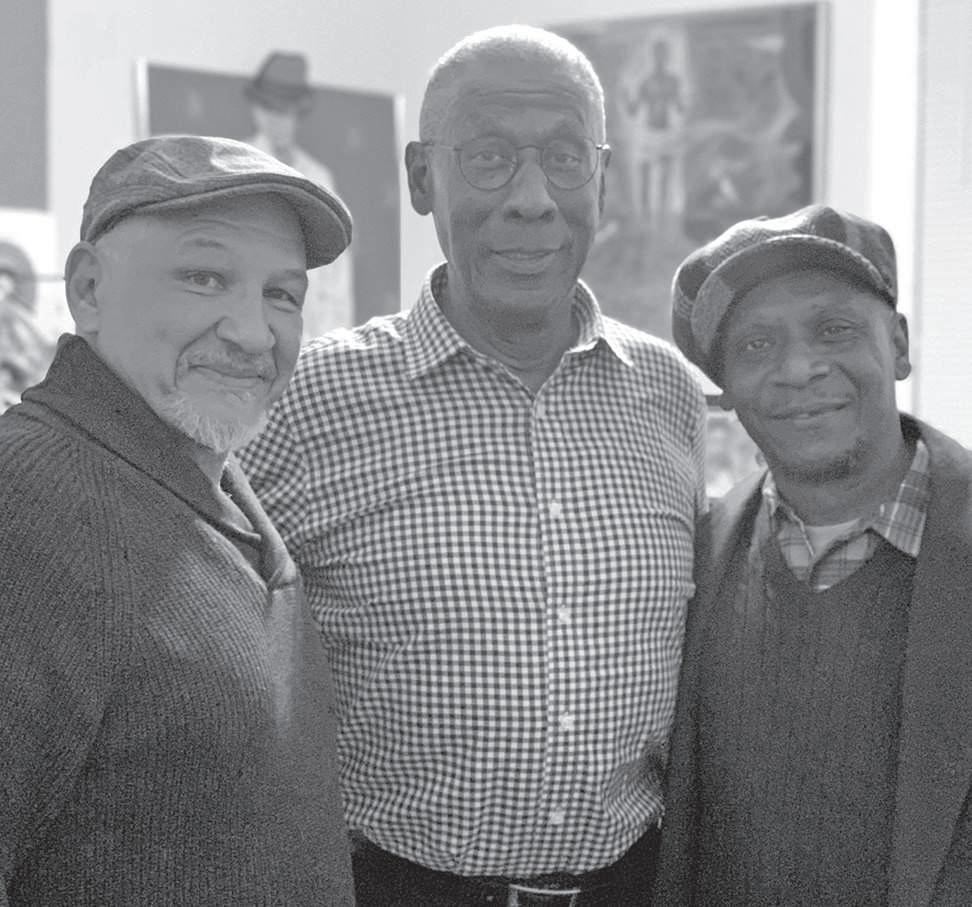
All reunion announcements can be viewed online!
Beaumont High School
Class of 1979 is planning its 40 year reunion. All activities are scheduled for the weekend of September
27-29. The location is The Airport Marriot at 10700 Pear Tree Drive, St. Louis 63134. For more information, contact Milton Jackson at 314-2764392 or Yolanda Lockhart at lockhartyo08@gmail.com.
Northwest Class of 1979 is planning on cruising for our 40th class reunion and would love for you to join us! Date to sail is set for July 20, 2019 and you can feel free to contact: Duane Daniels at 314-568-2057 or Howard Day at 414-698-4261 for further information. Please don’t miss
the boat!
Soldan Class of 1979 is planning its 40th year reunion for the weekend of August 2-3, 2019. Yearlong reunion activities will begin with a kickoff at Soldan High School Homecoming on Saturday, October 13, 2018 prior to the game at 1 p.m. For more information or to assist with reunion activities, please email at: soldanclassof1979@gmail. com or call Barbara at 314 456-3391.
Sumner Class of 1976


Happy 2nd Bren-Day to our handsome baby boy, Brendan Bohannon! Your presence fills us with so much happiness and joy. Enjoy your special day today and many, many more! Love always, Mama, Dada, & AJ
Annual Christmas Party, Friday, December 21, 2018, 7pm @ DEJAVU II Cafe, 2805 Target Dr., 63136. 2 for 1 Drink Specials (5:307:30pm), free parking, band performs from 7:30 - 9:30pm. no cover charge; classmates and guest each pays $5 for the catered food, served during intermission, whether you partake of it or not. Limited reserved seating available until 10 pm. (Doors open 5 pm/ close 1 am) For more info, call B. Louis at 314.385.9843.
Sumner Class Of 1969 50th
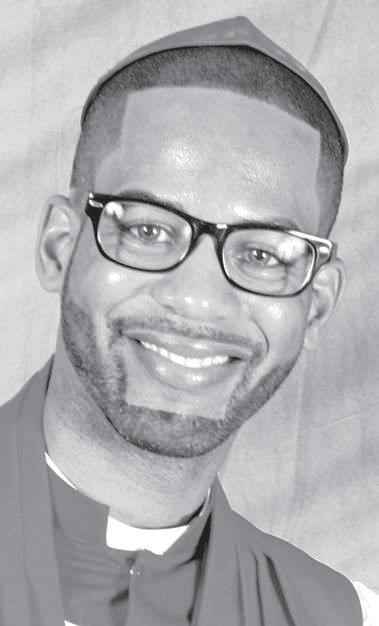
reunion “Living Life Like It’s Golden” June 28-30, 2019. Looking for classmates of 1969 to contact us with your updated information via address:sumnerclass1969@ gmail.com or our FB page: Sumner High.
Sumner Class of 1979 will hold its “Bulldogs Rock the Boat” BIG 4-0 Reunion Cruise, June 22-27, 2019. For further information, email your contact information to sumner1979@ ymail.com or call 314-4064309. Join our Facebook group at Sumner High Class of ‘79.
Do you have a celebration you’re proud of? If so we would like to share your good news with our readers. Whether it’s a birth, wedding, engagement announcement, anniversary, retirement or birthday, send your photos and a brief announcement (50 words or less) to us and we may include it in our paper and website – AT NO COST – as space is available Photos will not be returned. Send your announcements to: kdaniel@stlamerican. com or mail to: St. Louis American Celebrations c/o Kate Daniel 2315 Pine St. St. Louis, MO 63103
Reunion notices are free of charge and
on space availability. We prefer that notices be emailed to
However, notices may also be sent by mail to:
2315 Pine St., St.
63103 Deadline is 10 a.m. on Friday. If you’d like your class to be featured in a reunion profile, email or mail photos to us. Our email address is: reunions@stlamerican.com
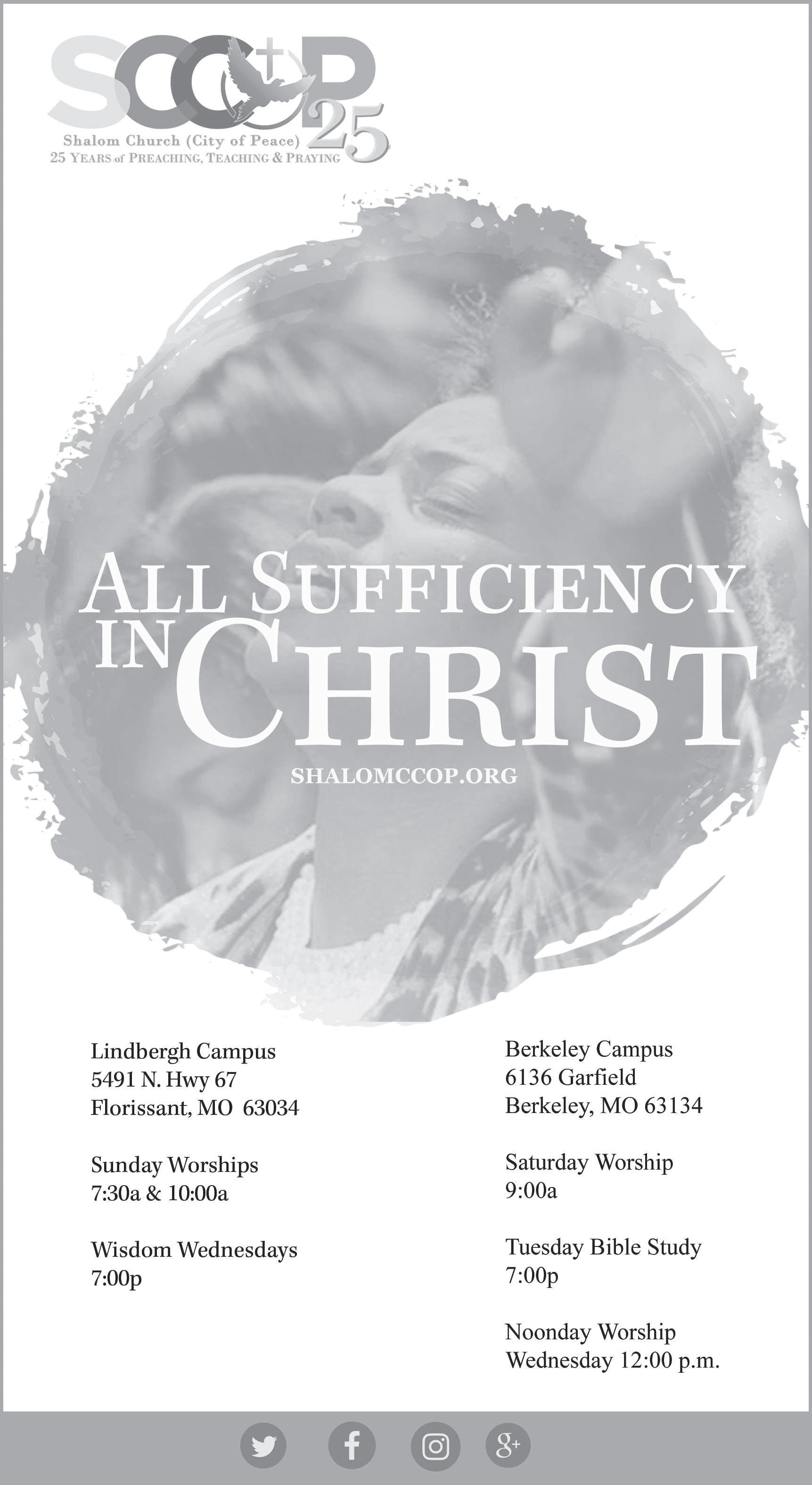
American staff
Centennial Christian Church (Disciples of Christ), Alpha Phi Alpha Fraternity, Inc. and the Fountain Park and Lewis Place communities will host a Rev. Dr. Martin Luther King Jr. Observance, themed “Living the Dream – Dismantling Injustices in Community, Education, & Literacy,” at the statue of Dr. King in Fountain Park, adjacent to 4950 Fountain Ave., at 10 a.m. on Saturday, January 19.
There will be a brief service with speakers from Alpha Phi Alpha Fraternity, the surrounding community, state and local political representatives. Upon return to the church, light refreshments will be offered as the transition to the panel discussion moderated by Rev. Leonard C. McKinnis II, assistant professor of Systemic Theology and African-American Religions at Saint Louis University will commence.
Chasidy Allen (assistant branch manager - St. Louis County Library), Julius Anthony (founder/president at St. Louis Black Authors of Children’s Literature), Gwendolyn Diggs (assistant superintendent, Jennings School District), Lt. Col. Rochelle Jones (St. Louis police officer), and Rev. Jeff Moore (Webster Groves Christian Church) will comprise the panel.
The Jennings Warrior Marching Band, under the direction of Hope Walker, will lead the gathering in a one-mile march to promote peace and unity in the Fountain Park and Lewis Place neighborhoods.
To conclude the events of the day, a book bag and school supply give away will take
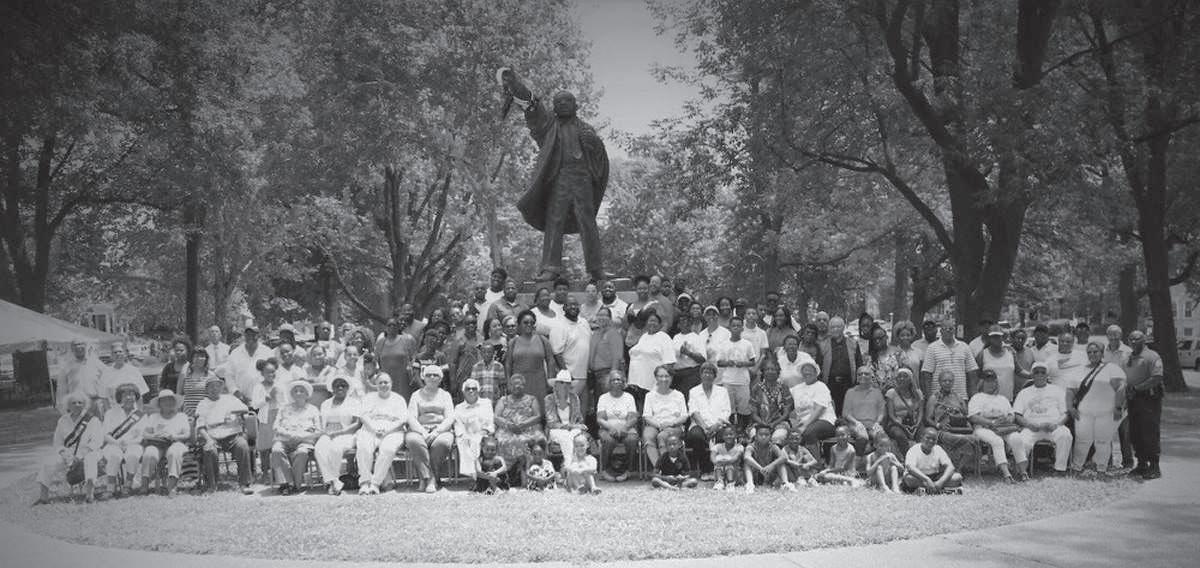
place to support the youth as they start their spring semester.
In an effort to reach all ages, all grade levels have been extended an opportunity to participate in the Art and Essay Competition with honors being awarded during Centennial’s worship service on Sunday, January 20 at 10:30 a.m.
This statue of Dr. King in Fountain Park is the oldest of the three local AfricanAmerican statues placed in 1978. Because of the service held on January 13, 2018, the statue received refurbishment after years of neglect in the summer of 2018.
Centennial Christian Church (Disciples of Christ) is a 114-year-old congregation located in the Central West End that believes in engaging the love of God by serving and supporting others, empowering our neighbors, and standing with those in need. Centennial’s mission and purpose are to stand in solidarity with others by doing what the church can to transform lives, communities and the many oppressive realities that exist.
“We are a church that is concerned about the plight of humanity and community and use the Holy Scriptures for our foundation for engaging service and mission as a key tenet of our faith,” organizers stated.
“Our mission reflects those beliefs with:
‘We are the people of God who love one another and share that love by building ministries that reach, teach, and win souls for Christ.’ Our vision continues to be “a lighthouse for all who seek the Lord” as we remain an anchor in the Fountain Park community.”
Rev. Derrick L. Perkins Sr. is servant and pastor. For more information, contact Conchita Hughes at 314-367-1818 or cccstl@ sbcglobal.net.
Christ Church Cathedral hosts MLK reading
To celebrate Martin Luther King Day on Monday, January 21, Christ Church Cathedral will hold continual readings from Dr. King’s historic speeches and writings from 10 a.m. to 3 p.m. in the nave of the church, at 13th and Locust streets downtown. Members of the public may sign up in advance for a reading slot or simply show up and take a turn from the very pulpit where Dr. King spoke in March 1964. An online signup page for volunteer readers may be found at the church website, www.christchurchcathedral.us.

“Blessed and highly favored.” I don’t know where this phrase comes from. But I do understand what it means and, by uttering it, some of us accept its responsibilities and yes, even its consequences.
Another way of saying this in the physical realm is: “To whom much is given, much is expected (in return).” However you look at it, there appears to be an awesome responsibility associated with the knowledge that somehow life has been good to you.
Forgive me if I simply believe that if you believe in Jesus and understand He is the source of your salvation, then you, too, are blessed and highly favored. As a matter of fact, you might as well add that with the spiritual truth, that to whom much is given, much is expected.
Along with the truth of Jesus as Lord comes the obligation then to share that goodness, so to speak. After all, eternal life, the gift of glory, the reality that I will never die, qualify me as “to whom much is given.” It’s the “much is expected” part that I’m trying to get you to take a look at. If you know (and accept) Jesus as your Lord and Savior, that’s a bunch right there. With that knowledge comes the responsibility – yes, even the obligation – to let His light shine so brightly in you that upon seeing you, others also see Him.
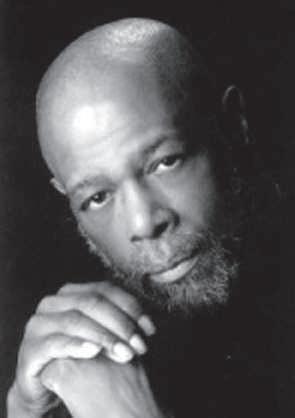
That then begs the question: what have you done for Him lately? In my limited capacity to understand the Master’s plan, I think the best way to serve God is to serve my fellow man. The best thing I can do is to spread the Word of God by acknowledging my gifts and talents as God-given blessings and using them as best I can doing what I know to be His will.
Many of us have taken tests to get a handle on our spiritual gifts. I am trying not to be one of those who wastes them. That means that regardless of status or socioeconomic circumstance, your individual plight in life or even the physical state of your well-being, if you know Jesus, you’ve got work to do letting the world know that you know that you know.
It’s not really that complicated. and the model of Jesus Christ is about as clear as it gets. Spread His message of love thy neighbor as thyself along with loving God as no other, and you’ll begin to see what I mean. It’s an awesome cross to bear, but yet a necessary one.
How many people upon describing you would say that you are a devout Christian? A practicing Christian? A strugglingreal-hard-to-be-good Christian? That alone requires an effort from you or me who is beginning to understand that to “whom much is given, much is required.”
But, for right now, let’s start with the fact that I’ll never die because He lived. It gives me great reason to wake up every day and look forward to the day that the Lord has made. Whatever happens, I’m in His hands



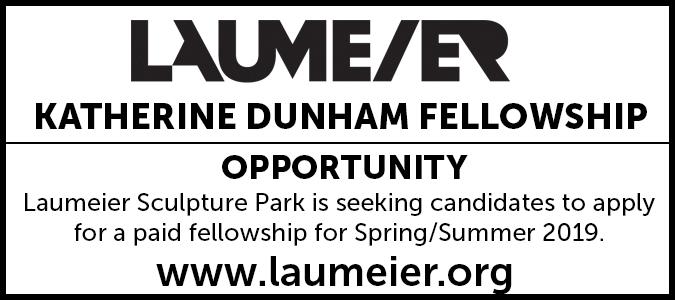

www.stlamerican.com
Family seeking a babysitter who has flexible availability from Mon-Fri. Applicant must have at least a year experience in the field,willing to complete a background check and have references. apply with your resume or cover letter to (azontogau@gmail.com).

The Supreme Court of Missouri currently has a vacancy for the position of General Counsel. This is attorney work of the highest level providing legal advice and counsel to Judges of the Court, the Clerk of the Court and related offices. Starting salary range for this fully benefited state position is $99,312 to $113,424. Interested parties may refer to the judiciary web site http://www.courts.mo.gov and clicking on Careers for additional details. Applications accepted until position is filled. Preference given to applications received on or before January 18, 2019. The Supreme Court of Missouri is an Equal Opportunity Employer.
Family Court of St. Louis County is seeking a full time attorney to perform legal work that involves conducting legal research, litigation and legal representation of the Juvenile Officer in juvenile matters brought before the court. Work is supervised by the Director of the Legal Department. The position is a non-merit position as an employee of Saint Louis County. MINIMUM QUALIFICATIONS:
Graduation from an accredited law school, possession of a current license to practice law in the State of Missouri, at least two (2) years of trial experience preferably in juvenile, family or criminal law with additional years of trial experience or any equivalent experience being preferable. TOAPPLY: Candidates wishing to apply should visit the following address at St. Louis County Government’s website and complete an online application and submit a resume and cover letter by the end of the day on Friday, January 25, 2019: http://agency.governmentjobs.com/ stlouis/default.cfm
EOE. Please contact the Human Resources Department at 314 615-4471 (voice) or RelayMO711 or 800 735-2966 if you need any accommodations in the application process, or if you would like this posting in an alternative form.
CITY OF ST PETERS, MO CAREER OPPORTUNITIES
Webster University is seeking an Assistant Professor Nursing (Hearst Scholar). Please visit our website at https://webster.peopleadmin.com/ for a complete job description.
Ensure state reporting and payments are complete and accurate and prepared on a timely basis.
To apply, please visit: https://www.safetynational.com/ careers-page/.
Responsible for handling assigned claims from initial assignment to closure as well as provide assistance in various administrative functions associated with the large casualty lines of business. To apply, please visit: https://www. safetynational.com/careers-page/.
Are you a team player? Work for an employer who values and supports teamwork for their employees. St. Peters Rec-Plex and Golf Course offer their employees competitive pay and a chance to work in a fun atmosphere. To view current openings and to apply please visit: www.stpetersmo.net/jobs AA/EOE www.stlamerican.com

tojangozo@outlook.com.
the Human Research Protection Office (HRPO) and Institutional Review Board (IRB) and works collaboratively with the Executive Director to assure compliance with federal regulations, state laws, accreditation requirements and institutional policies. Key responsibilities include data analytics, education, management of designated staff, and ongoing review and revision of
Notice to M/WBE Businesses
January 3, 2019
LANDCO Construction LLC
1400 South Highway Drive, Ste 99 Fenton, MO 63099
Seeking MBE and WBE businesses for the Cortex Community Accenture Project at 4220 Duncan Avenue, St. Louis, MO, for Union Subcontracting and Supply opportunities in the following areas:
Rough carpentry, architectural woodwork, fireproofing, doors, frames & hardware, glass & glazing, drywall, acoustical ceilings, carpet & resilient flooring, paint & wallcovering, fire protection specialites, toilet accessories, appliances, window treatment, plumbing, fire protection, HVAC and electrical.
All interested parties should contact:
Greg Zuzack
PH: (314) 744-8260
Fax: (314) 275-7409
gzuzack@rlandco.com
LANDCO will host a pre-bid conference at 9:00 AM on January 11, 2019. Meet in the lobby at 4220 Duncan Avenue.
All proposals will be reviewed for the lowest responsive and responsible quote, and must be received by Friday, January 25, 2019.
Plans and specifications are available for free electronic download from Cross Rhodes Reprographics at www.x-rhodes.com. PH: (314) 678-0087.
The St. Louis Economic Development Partnership (the “Partnership”) solicits proposals from a qualified firm or team to serve as the Partnership’s representative and provide program management services during the design and construction of an approximately 50,000 square feet addition to the Helix Center, located at 1100 Corporate Square Drive, St. Louis, Missouri 63132.
To be considered, proposals must be received no later than 3:00 PM CST on Thursday, January 24, 2019. Proposals should be sent by email to hbean@stlpartnership.com , or to St. Louis Economic Development Partnership, ATTN: Howl Bean II, 7733 Forsyth Blvd., Suite 2200, St. Louis, Missouri 63105. DBE, MBE, and WBE consultants are encouraged to bid, and a five percent bid preference may be available to certified MBE firms. The project may be funded in part by a grant from the U.S. Economic Development Administration, and all applicable federal regulations shall be in full force.
Additional information, including the Request for Proposals, may be obtained from th Partnership’s website at https://stlpartnership. com/rfp-rfq/ . The Partnership reserves the right to reject any or all proposals and to waive informalities therein. Any questions should be directed to Howl Bean II at (314) 615-7663 or hbean@stlpartnership.com .
St. Louis Economic Development Partnership Equal Opportunity Employer
METROPOLITAN ST. LOUIS
SEWER DISTRICT
Notice is hereby given that the Metropolitan St. Louis Sewer District is accepting proposals in the Purchasing Division, 2350 Market Street, St. Louis, Missouri 63103-2555 until 10:00 a.m. on March 1st, 2019 to contract with a company for: General Legal Services.
Specifications and bid forms may be obtained from www.stlmsd.com, click on the “MSD AT WORK” link, (bid opportunities). The bid document will be identified as 9774 RFP. If you do not have access to the internet, call 314.768.2735 to request a copy of this bid.
Metropolitan St. Louis Sewer District is an Equal Opportunity Employer.
METROPOLITAN ST. LOUIS
SEWER DISTRICT
Notice is hereby given that the Metropolitan St. Louis Sewer District is accepting proposals in the Purchasing Division, 2350 Market Street, St. Louis, Missouri 63103-2555 until 10:00 a.m. on March 7th, 2019 to contract with a company for: Federal Lobbying Services.
Specifications and bid forms may be obtained from www.stlmsd.com, click on the “MSD AT WORK” link, (bid opportunities). The bid document will be identified as 9770 RFP. If you do not have access to the internet, call 314.768.2735 to request a copy of this bid.
Metropolitan St. Louis Sewer District is an Equal Opportunity Employer.

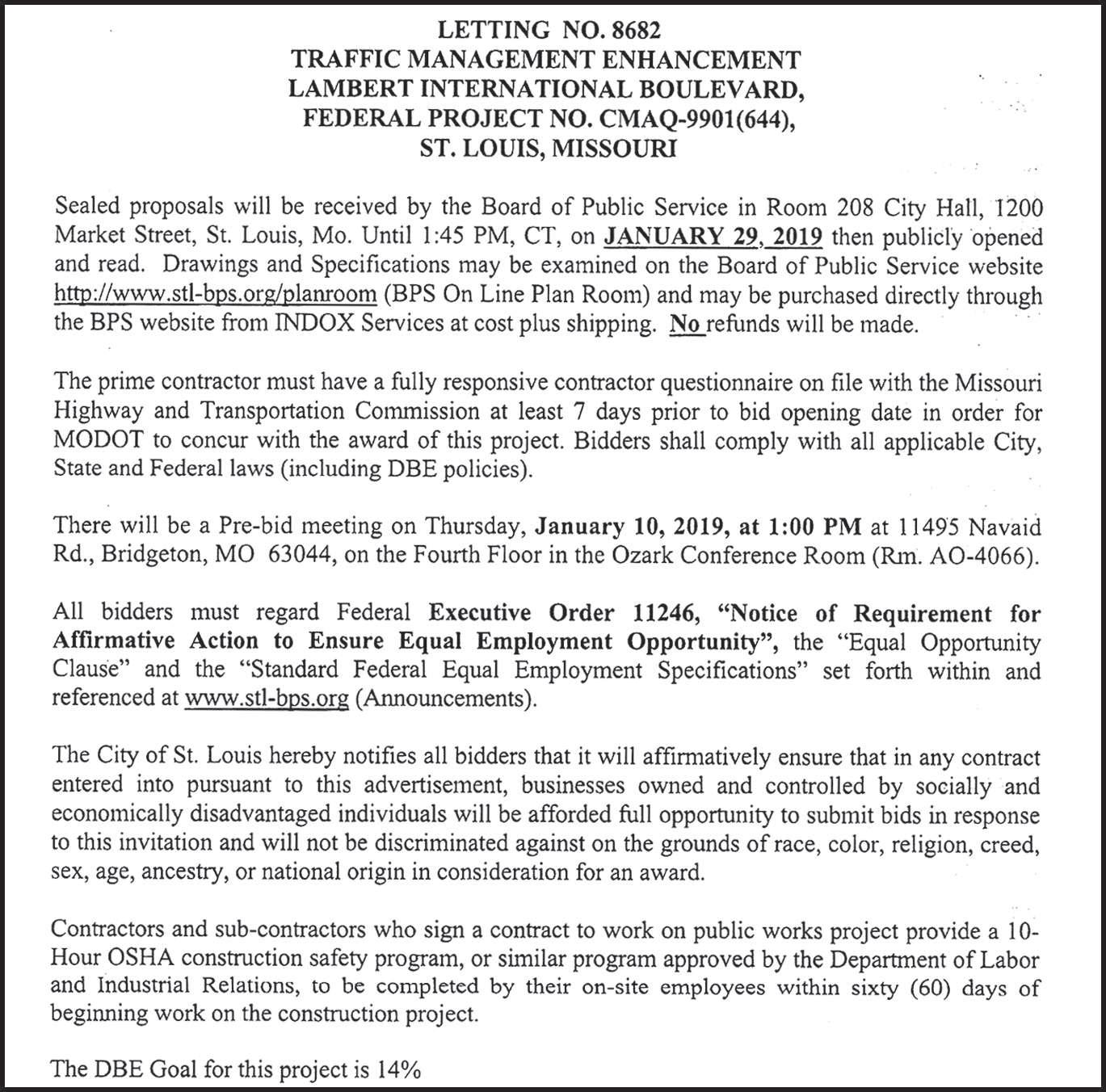
for Missouri Veterans Home Renovation, St. Louis, Missouri, Project No. U1804-01 will be received by FMDC, State of MO, UNTIL 1:30 PM, 2/7/2019. For specific project information and ordering plans, go to: http://oa.mo. gov/ facilities
SEALED BIDS for Water Network System Replacement, Hawn State Park, Ste. Genevieve County, Missouri, Project No. X1709-01 will be received by FMDC, State of MO, UNTIL 1:30 PM, 1/31/19 For specific project information and ordering plans, go to: http:// oa.mo. gov/facilities
The New St. Louis County Port Authority (Port) is seeking highly qualified and experienced individuals, firms or organizations to provide comprehensive administrative services, accounting/audit services and legal services to support the new St. Louis County PortAuthority Board of Directors (Board) recently appointed by the St. Louis County Council. Three copies of the statement of qualifications and one electronic format (CD or thumb drive) must be submitted to the new PortAuthority Board and must be received no later than 3PM on Friday, January 25, 2019 at 9909 Manchester Road #318 St. Louis, Mo. 63122. All inquiries and requests to obtain complete scope of services should be directed to Dennis G. Coleman, Interim Executive Director of the Port at NewSTLCountyPortAuthority@gmail. com or by calling 314 267-1688.
CITY OF ST. LOUIS ST. LOUIS LAMBERT INTERNATIONAL AIRPORT
Solicitation For Bids (SFB) for Shared Ride Shuttle Services
Bids Wanted
Bid documents may be obtained at St. Louis Lambert International Airport, Airport Properties Division, Monday through Friday between 8:30 a.m. and 5:00 p.m., or by calling (314) 426-8184. This SFB may also be obtained by visiting our website at www.flystl.com/business/ contact-opportunites.
Robert Salarano Airport Properties Division Manager
METROPOLITAN ST. LOUIS SEWER DISTRICT
Notice is hereby given that the Metropolitan St. Louis Sewer District is accepting proposals in the Purchasing Division, 2350 Market Street, St. Louis, Missouri 63103-2555 until 10:00 a.m. on February 21st, 2019 to contract with a company for: Employee Benefits Consulting Services. Specifications and bid forms may be obtained from www.stlmsd.com, click on the “MSD AT WORK” link, (bid opportunities). The bid document will be identified as 9767 RFP. If you do not have access to the internet, call 314.768.2735 to request a copy of this bid.
Metropolitan St. Louis Sewer District is an Equal Opportunity Employer.
ADVERTISEMENT FOR BID
Goodwin Bros. Construction Co. is requesting subcontract bids and/or material quotations from qualifying minority business enterprises for relevant phases of work for Metropolitan St. Louis Sewer District, Bissell Point WWTF Redundant Sludge Acceptance System, Contract Letting No. 12828-015.1. Interested parties should contact the Goodwin Office at (636) 931-6084. A pre-bid meeting for all interested MBE’s will be held at Goodwin Brothers office at 4885 Baumgartner Road, St. Louis, MO 63129 at 8:00 am on Thursday, January 24, 2019. Subcontractor/Supplier bids are due February 11, 2019 at 5:00 p.m. An Equal Opportunity Employer
PROJECT: Saint Louis Zoo 2019 Event Tent Portable Restroom
The Saint Louis Zoo invites you to submit a proposal for the non-exclusive supply and delivery of Portable Restroom for the Event Tent, for a period of two (2) years and an option for a third (3rd) year, at the sole discretion of the Saint Louis Zoo, Bid documents available at, https://www.stlzoo.org/about/ contact/vendoropportunities Proposals are due on 1/31/2019 at 2:00PM
Public Notice of Single Source Procurement
Notice is hereby given that the Metropolitan St. Louis Sewer District is proposing to procure: Mythics Oracle Business Intelligence Suite Enterprise Edition Plus, Exalytics Software. The District is proposing single source procurement to Mythics for this service. Any inquiries should be sent to ameyer@stlmsd.com.
Metropolitan St. Louis Sewer District is an Equal Opportunity Employer.
METROPOLITAN ST. LOUIS SEWER DISTRICT
Notice is hereby given that the Metropolitan St. Louis Sewer District will receive RFQ’s
Riverfront beneath the Gateway Arch from May to August 2019. Check www. RiverfrontVendors.com and submit by February 22, 2019.
Plocher Construction Company, Inc. 2808 Thole-Plocher Road Highland, IL 62249 PH: (618) 654-9408 Fax: (618) 654-6454 bids@plocherco.com
Seeking MBE (African and Hispanic) businesses for the MSD Bissell Point WWTF Redundant Sludge Acceptance System for Union Subcontracting & Supply opportunities in the following areas: Engineering, Demo, Rebar, Concrete, Metals, Coatings, Piling (Micro, sheet, H Pile), Plumbing, HVAC, Electrical, Pavement, Site Drainage, Hoist systems, Waste Equip
All interested and qualified business should contact Andrew Wirz (amwirz@plocherco.com) or Chuck Wagner (crwagner@plocherco.com) in writing or via email to discuss the subcontracting and supply opportunities. All quotes are requested to be received by February 11th, 2019 which is one day prior to the bid opening. All proposals will be reviewed for the lowest, responsive, and responsible quote.
Plocher will host a Pre-Bid conference. It will be held at 9 AM on Tuesday, January 22nd, 2019 at Plocher Construction office at 2808 Thole-Plocher Road, Highland IL 62249.
Plans and Specifications are available for free electronic download. Please go to MSD’s website and look for a link to “ELECTRONIC PLANROOM.”
Great Rivers Greenway is soliciting bids for repairs to the Old Chain of Rocks Bridge. Please check https://greatriversgreenway. org/jobs-bids/ and submit by February 1, 2019.
Requests subcontractor and or material supplier quotations from Illinois Department of Transportation Certified subcontractors, suppliers and Disadvantaged Business Enterprises for the letting to be held January 18, 2019. Interested parties should contact Keller Construction at (618) 656-0033. All quotations must be submitted by 4:30 PM Wednesday January 16, 2019. Keller Construction is an equal opportunity employer.
METROPOLITAN ST. LOUIS
SEWER DISTRICT
Notice is hereby given that the Metropolitan St. Louis Sewer District is accepting proposals in the Purchasing Division, 2350 Market Street, St. Louis, Missouri 63103-2555 until 10:00 a.m. on February 13th, 2019 to contract with a company for: Lawn Care Services for Mintert Yard. Specifications and bid forms may be obtained from www.stlmsd.com, click on the “MSD AT WORK” link, (bid opportunities). The bid document will be identified as 9759 RFQ. If you do not have access to the internet, call 314.768.2735 to request a copy of this bid.
Metropolitan St. Louis Sewer District is an Equal Opportunity Employer.
Notice is hereby given that the
Metropolitan St. Louis Sewer District is accepting proposals in the Purchasing Division, 2350 Market Street, St. Louis, Missouri 63103-2555 until 10:00 a.m. on February 4th, 2019 to contract with a company for: Manhole Rehabilitation Services.
Specifications and bid forms may be obtained from www.stlmsd.com, click on the “MSD AT WORK” link, (bid opportunities). The bid document will be identified as 9750 RFP. If you do not have access to the internet, call 314.768.2735 to request a copy of this bid.
Metropolitan St. Louis Sewer District is an Equal Opportunity Employer.

SEWER DISTRICT
Notice is hereby given that the Metropolitan St. Louis Sewer District is accepting proposals in the Purchasing Division, 2350 Market Street, St. Louis, Missouri 63103-2555 until 10:00 a.m. on February 11th, 2019 to contract with a company for: Lawn Care Services for Lemay Treatment Plant.
Specifications and bid forms may be obtained from www.stlmsd.com, click on the “MSD AT WORK” link, (bid opportunities). The bid document will be identified as 9756 RFQ. If you do not have access to the internet, call 314.768.2735 to request a copy of this bid.
Metropolitan St. Louis Sewer District is an Equal Opportunity Employer.
REALESTATE BROKERAGE SERVICES
St. Louis Development Corporation (SLDC) seeks the service of a Real Estate Brokerage Firm to provide professional and technical assistance in support of SLDC staff to a) provide advice on market value of target and comparable properties; b) advertise available parcels and buildings through media outlets; c) analyze and evaluate offers presented on subject properties; d) present SLDC agency counteroffers; e) consult on related matters such as land subdivisions, lot consolidations, surveys, as necessary; and f) provide information and documents in preparation for closing, in conjunction with SLDC staff and counsel. Proposals due 1-28-2019. Details at https://www.stlouismo.gov/government/department/ sldc/procurement.cfm or by contacting Synetta Wright, Real Estate Specialist III, SLDC, at wrights@stlouis-mo.gov.
Notice to contractors, Special School District is accepting bids for Cosmetology Lab Renovations at North Technical High School. For details, please visit the website at www.ssdmo.org/rfps.html
because of race,color, religion, sex, handicap, familial\ status, or national origin, or intention to make any such preference, limitation, or discrimination.“We will not knowingly accept any advertising for real estate which is in violation of the law. All persons are hereby informed that all dwellings advertised are available on an equal opportunity basis.” Call Angelita Houston at 314-289-5430 to place your rental/real estate ad today!


St. Louis Development Corporation (SLDC) seeks the service of a Real Estate Title Company to provide professional and technical assistance in support of SLDC and City agencies in need of title services during the research, acquisition and sale phases of property acquisition and disposition. Proposals due 1-28-2019. Details at https://www.stlouis-mo.gov/government/department/sldc/procurement. cfm or by contacting Synetta Wright, Real Estate Specialist III, SLDC, at wrights@stlouis-mo.gov.




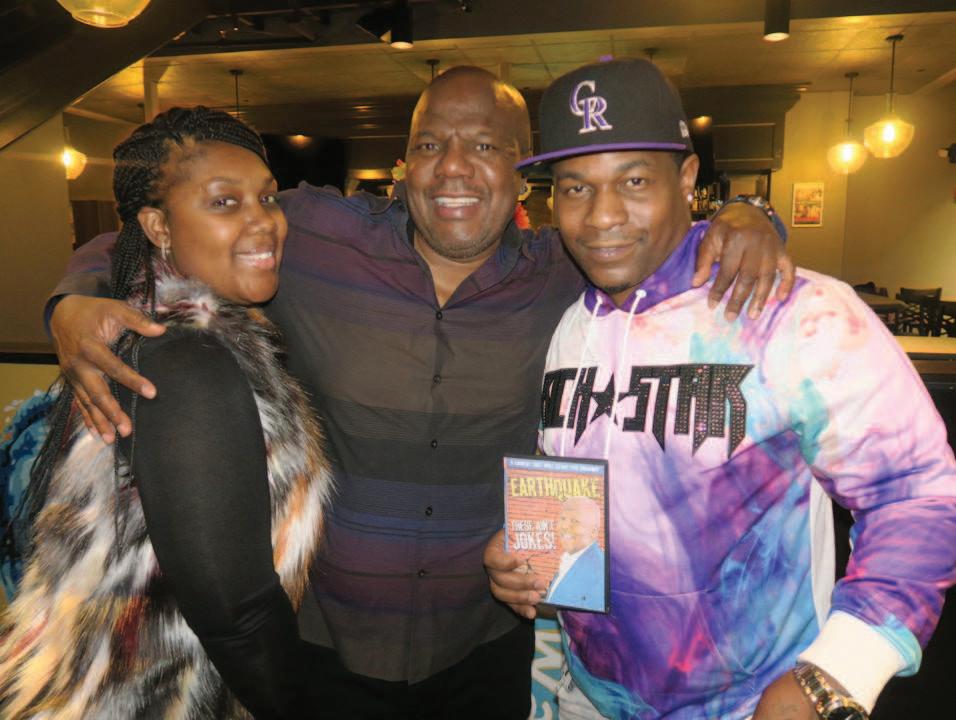


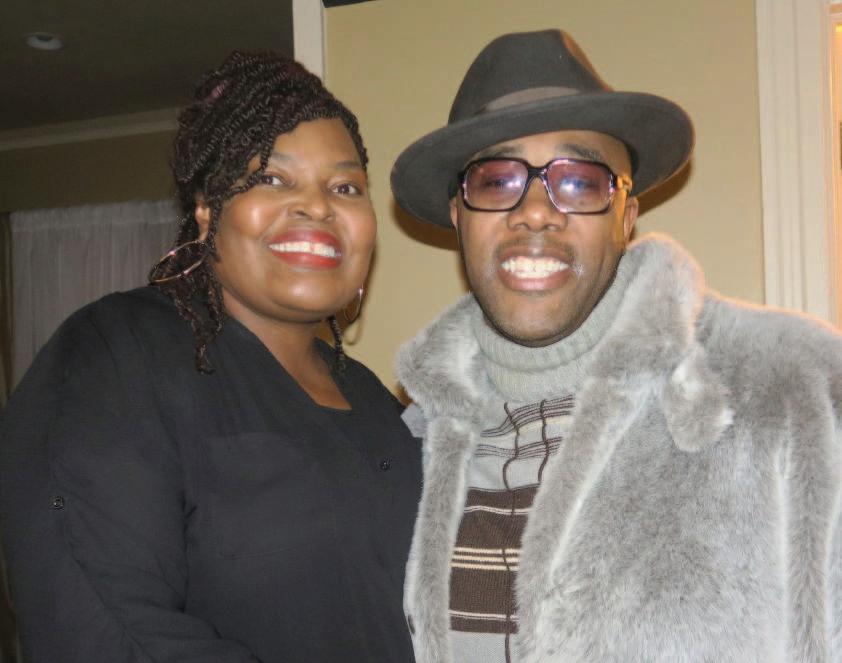

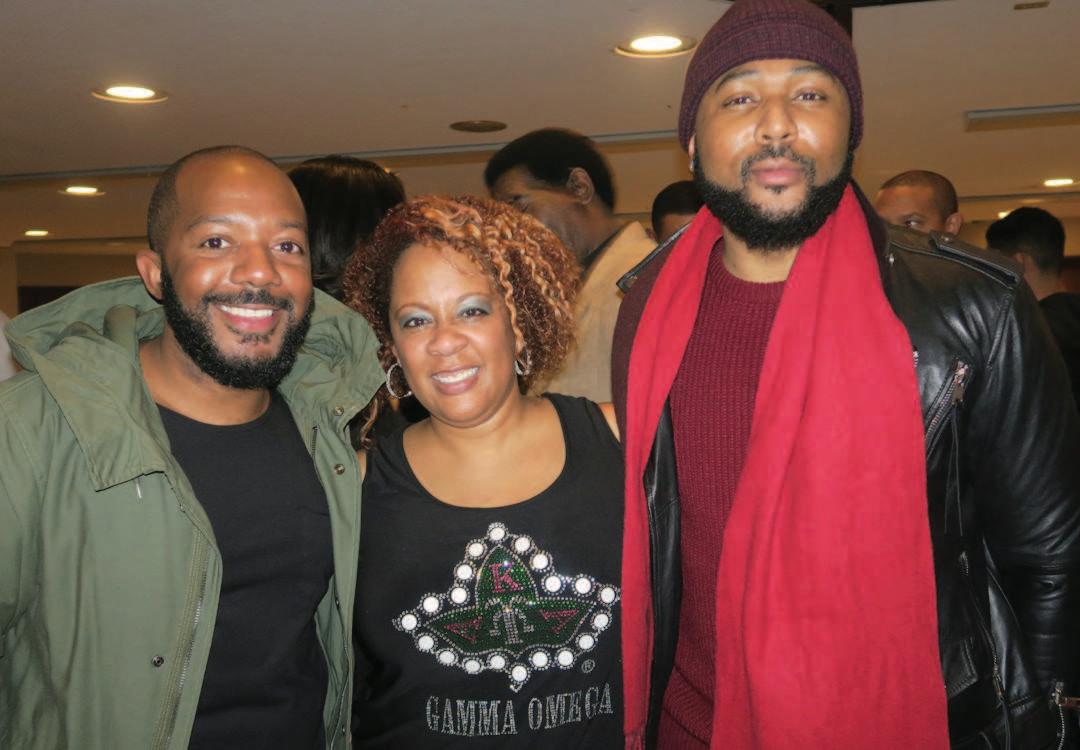


Can’t let the snow stop my show. Y’all don’t know how close it was to there not being a Partyline, thanks to Snowmagedden 2019, the biological child of the snow of ’82. I don’t have to remind y’all that the whole city was shut down Friday and Saturday night – and that the highways and streets were looking like Steinberg Skating rink. I’m just glad that I was about to steer clear of it. I’m so thankful for traveling grace and I wish all the folks who weren’t as fortunate a speedy return to normal (whether that was personal injury or property damage). I’m still bent out of shape that I didn’t have a chance to get fired up by St. Louis’ own Auntie Maxine (Waters) at the MLK Statewide Kickoff or see Jacquees defend his self-appointed King of R&B crown. Oh well. I was able to Eskimo my way through what was left of the weekend and cobble a little something together to give you a kee-kee or two. So, let’s get on with it. Feel free to name one of the babies I’m sure were conceived over the weekend after me, as a token of appreciation for my efforts.
Stomping down with the Deltas. The Kappas and AKAs went out of 2018 with a bang, but the Deltas did not come to play when it came to ringing in 2019. It was a sea of Red, White and Black at Mahler Ballroom for their 106th and Party Founder’s Day Celebration on Sunday. Well, it was mostly black with red accessories, but still. Listen, the slayage was on official as they partied like it was 1913. There were so many lewks I don’t know where to begin. I take that back…let me start with the hot red, suede, over-the-knee boot Romney Edwards was serving on a platter, honey. She lived up to devastating diva to the nth degree. I don’t know how she made it in without twisting her ankle. Even if she had limped – or come through in a wheelchair – it would have been worth it. I’m guessing there was a shoe swap, or a prime parking space was involved. Next, lets talk about the little black dress game that Kimberly Burke was killing. And has Kacy Seals ever disappointed when it comes to an OOTD (outfit of the day)? That was rhetorical. Anybody who reads partyline knows the answer is a solid no. Her classy but snatched catsuit was exactly what is expected of her. I could go all day naming my favorite DST ladies who came out of their cabin fever ready to get turnt. Alice Prince, Lawanda Hall, Jody Squires (we always have a good cackle when we meet up, don’t we girl?), Raquelle Wallace, Ralonda Jasper and a whole bunch of others. And I could barely get a word in with them because they were strolling like their letters depended on it. I already told y’all the Deltas had a “Back That Thang Up” stroll. But I learned Sunday night that they also have Delta step remixes to “The Wobble” and “The Fantasy Slide.” And as I pointed out to one of my faves, this new generation of Deltas stomp all heavy like some Que dogs. She said, “Well if you mention that, be sure to let everybody know” that these millennial AKAs whip their hair so tough that they are going to be walking around cross-eyed with traumatic brain injury symptoms in a few years. Fair enough. AKA party time. Since I’m already talking about the AKAs, I might as well let y’all know that they will be celebrating their own Founder’s Day, otherwise known as J15 this weekend by taking over Concourse B of the Airport Saturday night for the AKA 111 Anniversary Party. If their end-of-the-year jam is any indication, it is going to be ___________(insert new slang for lit)…hair whips and all.
A hilarious Earthquake in the snow. The folks were so anxious to get out of the house after that blizzard that I thought they were going to get some Bluetooth speakers connected and start seating folks up in the mall to listen to Earthquake because there were no seats left to be had in Helium – not a single one – for that Sunday night show. And while he rehashed a bit of the last part of his set, that first half was hee-larious. Because I was having so much fun with the Deltas, I missed his openers. When I popped my head in, Earthquake was going in on Trump’s awful border policies. “So they taking children away from their families, separating parents from children … I’ve read that story before.” And I was hollering when he was talking about Aretha Franklin’s funeral and how she probably missed her appointment at the pearly gates because of her homegoing of all homegoings.
Bury those boots girl. I’ve mentioned Romney’s fashion win a few entries up, now let me get to the bad … or should I say, the ugly. But these awful “Balencinada” boots y’all been torturing my eyeballs with since my forever First Lady came through with the thigh-high, iridescent $3900 Balenciaga stunners have got to stop. I let it slide for the New Year’s Weekend Comedy Show. But when I saw two more pair of $39.95 versions at Earthquake’s show, I feel like it’s a trend that I have to do my part to make come to an end. As much as Michelle Obama is my shero, I hold her directly responsible for your aunties trying to mimic the look to absolutely no avail. One of the women at the Chaifetz had some on that were so wore down that the toe was frayed like Christmas tree tinsel and the heel looked like a broken off bite-sized Kit Kat. I was like, “It’s only been a week since Michelle came through with the lewk, how is your version of the look so broke down, so fast?” My breaking point was during Earthquake when I peeped a woman of a certain age in a gold alleged snakeskin interpretation . She was an itty-bitty thing, so she needed a hem in the ankle. And the thigh part had so much room, she could tuck her nine-month-old grandbaby in there while she watches “The Young & The Restless.” I’m sorry to rant, but my soul has been irked to no end. Will Downing is on his way. Since I’m offering previews because there was nowhere for me to get recaps thanks to Snowmagedden I might as well let y’all know that Breakaway Productions and Witherspoon Entertainment will be bringing Grammy Award winning soul crooner Will Downing to Harris-Stowe State University for their Valentine’s Weekend Kickoff-Concert. The show takes place on Sunday, February 10 and will also feature Lamont Hadley. I don’t have to sell this show to anybody who has ever seen Will life, so hit up metrotix.com to get your tickets. Doors open at 5:30 p.m.

